







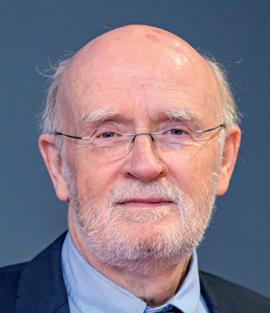



€4.95 / £2.95 Aug/Sep 11 issue 8 Carbon Tax • Special Reports: Health • ICT £2.95 Dec/Jan 2022/23 Issue 111 Environment, waste, and water • Health and care services • Public affairs A sustainable footing NILGA’s Alison Allen ...informing Northern Ireland’s decision-makers
change
biodiversity
on renewal of the SDLP, a move to Opposition, and a future Ireland
energy
ENVIRONMENT, WASTE, AND WATER REPORT
Hans Pörtner discusses the
climate
and
crises
Chief Executive John French discusses the
crisis response



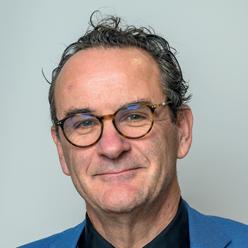

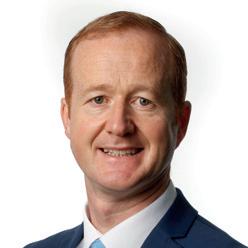





Thursday 9 February • Croke Park Dublin Irish Renewable Energy Summit 2023 The major annual conference for the Irish renewable energy sector For more information: T: +353 (0)1 661 3755 W: www.energyireland.ie E: info@energyireland.ie In partnership with Sponsored by Eamon Ryan, TD Minister for Environment, Climate and Communications Catharina SikowMagny Director of Green Transition and Energy System Integration DG Energy European Commission Jerry Murphy Director of MaREI Centre University College Cork Muireann Lynch Senior Research Officer, Economic and Social Research Institute
CEO Sustainable Energy Authority of Ireland
William Walsh
Renewable Energy,
Energy
Cagney Policy Director Ocean Energy Europe
Research
University College
Executive Director, Project Finance ABN AMRO Bank N.V. Featured speakers: Sponsorship opportunities are available for the 2023 Irish Renewable Energy Summit contact info@energyireland.ie for further information. The 2023 Irish Renewable Energy Summit will once again bring together all the key stakeholders from across the renewable energy sector and wider energy sector to discuss how the contribution from renewable energy can be maximised and implemented most effectively.
John Reilly Head of
Bord na Móna Tanya Harrington Chairperson Renewable
Ireland Donagh
Philip McNally
Fellow
London Lisa McDermott








Contents 67 Health 68 Sustainability of the health service 74 The Department of Health’s CDIO Dan West discusses delivery of the digital strategy 80 Technology: Supporting carers 83 Public affairs 84 Campaign spending and electoral success 90 Political Platform: Connie Egan MLA 92 Back page: A new script for mental health 12 Digital Events Print 38 30 54 74 04 Matters arising 08 Issues 08 Census 2022: A century of change 12 Cover story: NILGA’s Alison Allen discusses the importance of a sustainable footing for local government 16 Utility Regulator Chief Executive John French on mitigating the energy crisis 20 Matthew O’Toole MLA discusses SDLP renewal 30 Film Director Seán Murray: My Name is Joseph 37 Environment, waste, and water 38 Former Environment Minister Edwin Poots MLA on progress to date 44 Environment Strategy: Reforming agriculture 54 The IPCC’s Hans Pörtner outlines climate change vulnerability 80 90
Wednesday 29th March Europa Hotel, Belfast
is organising its annual Northern Ireland Housing Conference, which has become well established as the major annual event for all those with an interest or role in housing in Northern Ireland. As with previous years, it will have a genuine, in-depth understanding of the key issues via a high-level panel of local and visiting speakers. The conference is an important date in the diary of housing professionals across the region.











Housing Conference 2023
29
Date
your diary!
A high level panel of expert speakers will examine key issues including: 4 Developing a housing supply strategy for Northern Ireland 4 Housing for a net zero future 4 Rent regulation in the private sector 4 Implication of the Private Tenancies Act (Northern Ireland) 2022 4 The impact of the cost of living crisis 4 Revitalisation of the Housing Executive 4 Social housing reform 4 Housing first: Addressing chronic homelessness 4 Construction capacity and skills development 4 Retrofitting: Priority investment and sustainable development 4 Tenant engagement in housing delivery
Events Print More information available soon! By email registration@agendaNi.com Online www.nihousing.agendaNi.com By Telephone +44 (0)28 9261 9933
March
for
agendaNi
Digital
Digital Events Print
Highway to climate hell…
UN Chief António Guterres’s address to world leaders gathered in Egypt for COP27 was intentionally blunt: “We are on a highway to climate hell with our foot on the accelerator.”
The call to action underpins what many across the globe now accept, countries must work faster and harder to slow down the warming of the planet, if mankind and biodiversity are to have a long-term future.
Central to addressing the trilemma of the climate, biodiversity, and energy crises, is the acceleration of renewables to enable decarbonised economies. It is unfortunate that no Northern Ireland Executive ministers or party leaders were present at COP27 to hear of the urgency required and the opportunities that exist in stretching for net zero faster.
In the absence of ministers and an Assembly, Northern Ireland faces potential further delay to the delivery of a climate action plan and targeted investment to ensure each sector can reach net zero. In the face of political deadlock, it falls on industry, local government, business, and consumers to push for progress.

Our cover story with NILGA Chief Executive emphasises the work that is and can be undertaken daily away from the institutions of Stormont for better communities. However, there are obvious implications, not least the need for financial support to put local government on a sustainable footing.
Finance and the importance of being equipped to plan for the long-term is an underpinning thread in this issue of agendaNi Our environment report looks in-depth at the building blocks that have been set and we talk to former Minister Edwin Poots MLA about the policy direction he set while in office, which should provide a basis for progress.
Similarly, a failing health service’s hope for transformation faces an uphill struggle in the absence of multi-year budgets. Our annual health report explores the challenges, but also the opportunities that exist through digital if properly resourced.
David Whelan
www.agendaNi.com
agendaNi Issue 111
Dec/Jan 2022/23
Editorial
David Whelan, Editor david.whelan@agendani.com Fiona McCarthy fiona.mccarthy@agendani.com Ciarán Galway ciaran.galway@agendani.com Odrán Waldron odran.waldron@agendani.com Joshua Murray joshua.murray@agendani.com
Circulation and Marketing Lynda Millar lynda.millar@agendani.com
Events
Jillian Wallace jillian.wallace@agendani.com
Advertising
Gail Kinkead gail.kinkead@agendani.com
Design
Gareth Duffy, Head of Design gareth.duffy@agendani.com Jamie Hogan jamie.hogan@agendani.com

Subscriptions
Sharon Morrison Email: subscriptions@agendani.com Online: www.agendani.com
agendaNi
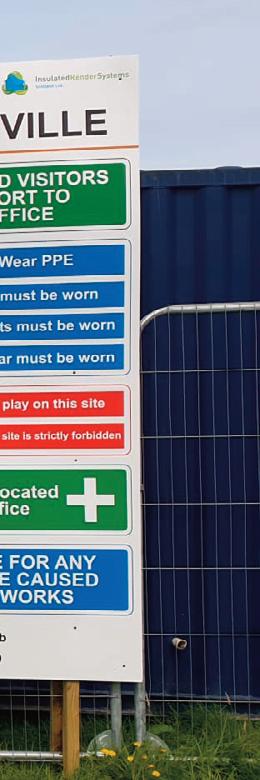
Owen McQuade, Publisher owen.mcquade@agendani.com bmf Business Services 19a Maghaberry Road Maghaberry, Co Antrim, BT67 0JE Tel: +44 (0) 28 9261 9933 Twitter: @agendani Web: www.agendani.com
Printed by: GPS Colour Graphics
• This product is made of FSC®-certified and other controlled material.
• This product is made of material from well-managed, FSC®-certified forests and other controlled sources.
• This product is made of material from well-managed FSC®-certified forests, recycled materials, and other controlled sources.
• This product is made of material from well-managed FSC®-certified forests and from recycled materials.
• This product is made of recycled materials and other controlled sources.
10X vision announced two days before Executive collapse
Recently-departed Minister for the Economy Gordon Lyons MLA announced the publication of the Department’s 10X Vision: Next Steps for Implementation strategy, two days before leaving post.

The principle of a ‘10X vision’ is, according to the strategy document, “about creating a step change in how we think about our economy”.
“It is not a literalist term about increasing a single metric by a factor of 10; instead we are setting an ambitious pathway for fundamental change to our economy and committing to everyone feeling they are part of this transformation.”

It states that there is the potential for a “decade of innovation”
in Northern Ireland, which can see the impact of technological advancement unlock “the unique opportunity to drive growth and inclusion”.
With regard to implementation, the document states that “our vision for a decade of innovation will deliver a 10 times better economy with benefits for all our people”.
It further says that there are “five areas where change can make a difference”. These are: technologies and clusters; talent; diffusion; funding; and place, all of which make references to growth and innovation.
Expressions of interest from stakeholders for the strategy will remain open until 18 January 2023.
Secretary of State for Northern Ireland Chris HeatonHarris MP has announced that the UK Government will commission abortion services in the region

Abortion was decriminalised in Northern Ireland in October 2019, 42 years after it was decriminalised in Great Britain, although implementation has been curtailed by the former Health Minister Robin Swann MLA’s failure to implement services.
In May 2022, the former Secretary of State Brandon Lewis MP passed regulations to remove the need to seek Executive Committee approval in the implementation of abortion services, the need for which was a major reason cited by Swann for not commissioning services locally,
Secretary of State to commission abortion services
due to what he described as the inaction of the Executive.
Responding to criticism that by commissioning services, the UK Government was interfering in devolved matters, Heaton-Harris says: “It is unfortunate that we have been forced to commission these services, in what should be a matter for the Department of Health to implement.
“The Government has been left with no other option, as women and girls of Northern Ireland have been without safe and high quality services, with many having to travel to the rest of the UK to access healthcare to which they are legally entitled. That is unacceptable.”
4 agenda matters matters arising
ECONOMY HEALTH
PUBLIC AFFAIRS
No Northern Ireland elected representatives at COP27
Northern Ireland’s political leaders were notably absent from the COP27 summit, which took place in Sharm El-Sheikh, Egypt.
Among attendees were the British Prime Minister Rishi Sunak MP, Taoiseach Micheál Martin TD, and Scottish First Minister Nicola Sturgeon MSP.
COP27 took place a year later than was originally scheduled, having been delayed due to the Covid-19 pandemic.
The UK Prime Minister initially intended to remain away from the conference, but changed his mind following political pressure, including the announcement of his former boss Boris Johnson MP that he would be in attendance, ostensibly at the invitation of the Government of Egypt.

One of the proposals agreed originally at COP26 is that richer nations should subsidise poorer nations as they aim to
JUSTICE
‘Serious doubts’ over Legacy Bill’s compatibility with human rights laws
A Westminster Committee has found that the Northern Ireland Troubles (Legacy and Reconciliation) Bill currently being tabled in Parliament does not comply with existing UK human rights law.
The Bill, which was passed by the House of Commons in May 2022, is now at Joint Committee Stage, as it prepares for its second reading in the House of Lords. It proposes an amnesty on prosecutions for incidents which took place between 1966 and the signing of the Good Friday Agreement, in the event that the crime in question did not involve a death or injury.

It does not propose stopping prosecutions over legacy cases where proceedings are underway or where a complaint has been lodged prior to the passage of the Bill, which will be 1 May 2023 at the latest.
It further proposes that the existing Early Release Scheme will
transition their economic and energy models to support the temperature increase targets, with key outcomes of COP27 expected to be a timeline and measurement of this support.

Taoiseach Micheál Martin TD stated that the Republic will maintain its climate emissions targets of carbon neutrality by 2050, and stated that the Irish Government will allocate €225 million in supporting poorer countries feeling the effects of climate change.
The United Nations has warned that progress on reducing emissions has been “woefully inadequate” since COP26, with UN Secretary General António Guterres proclaiming that “we are in the fight of our lives and we are losing”.
also be expanded to include offences within a wider temporal scope, whilst removing the requirement for offenders to serve any minimum term.
The Joint Committee Report states: “We have serious doubts that this Bill as drafted is compatible with Articles 2 and 3 of the European Convention on Human Rights (ECHR) (the right to life and the prohibition of torture and inhuman and degrading treatment or punishment, respectively), as well as Articles 6 and 13 (the right to a fair trial and the right to an effective remedy).”
The Bill has been met with resolute opposition from both nationalist and unionist politicians in Northern Ireland, who both believe, for their own reasons, that the passage of the Bill would deny justice to the victims of legacy cases. Unionists further object to the Bill on the basis that they believe it equivocates British state forces with paramilitaries.
5 agenda matters matters arising
Cross-border health reimbursement scheme closed
A Brexit-threatened health scheme which allowed Northern Ireland patients to be reimbursed for some treatments in other EU member states, has been quietly closed.
A casualty of Brexit, the scheme, which was mostly utilised on a cross-border basis, was responsible for over 3,000 patients from Northern Ireland being reimbursed for an estimated £14 million worth of cross-border treatments between April 2016 and 31 December 2020.

The scheme closed for UK patients on 31 December 2020, meaning that EU patients could also no longer used the scheme to access healthcare in the UK. In response, the Irish Government proactively set up a temporary scheme (12month) for Irish residents seeking treatment in Northern Ireland. However, the Northern Ireland Planned Healthcare Scheme was unilateral and it was not until June 2021 when
Northern Ireland’s Department of Health announced a similar scheme.
That scheme, based on the EU Cross Border Healthcare Directive, provided an option for those patients who may wish to access private treatment in the Republic and claim reimbursement of Health and Social Care (HSC) equivalent cost.
Initially opened for one year on 1 July 2021, in June 2022, the Department of Health allocated a further £5 million to continue to operate the scheme beyond the deadline. However, recently the Department announced on their website that “the scheme’s additional limit of £5 million has now been reached”, adding that the scheme would be closed to new applicants on 21 September 2022.
Decline in forecast of electricity generation
The System Operator for Northern Ireland (SONI) has revealed that Northern Ireland has fallen short of previously-expected electricity generation for 2022.

The report, which covers the capacity for electricity generation for both jurisdictions on the island of Ireland, operates on a joint basis between SONI and EirGrid.
The report states that a previous forecast of new available generation has failed to materialise. “Since the GCS 2021-2030, a total of 364MW of previously awarded capacity has terminated their capacity market contracts and accordingly paid their termination charges. This is in addition to the previous 266MW which also terminated.”

This means that a large proportion of new capacity
expected to come online has now been withdrawn by the developers.
There are furthermore challenges owing to the scheduled closure of the coal fired powerplants in Northern Ireland which generate in the region of 175MW. These plants are due to close in September 2023, and have already been operating with strict limitations due to environmental constraints.
The document further reveals that targets centred around the electrification of heat and transport were not met, thus driving up demand. The figures additionally take into account anticipated growth in new tech load in Northern Ireland, further driving up demand on the electricity system.
6 agenda matters matters arising
HEALTH ENERGY
O’Dowd recommends additions to all-island rail project
Former Minister for Infrastructure John O’Dowd MLA has proposed the reopening of a railway line to Knockmore, which will have a connection with Belfast International Airport.
Commenting on the All Island Strategic Rail Review, O’Dowd further called for “better connections between the rail halt to Belfast City Airport”, whilst also calling for a new rail line between Portadown and Derry.
The All Island Strategic Rail Review was launched in 2021 as part of the Shared Island Initiative of the Government of Ireland. The review is a joint project which was spearheaded by Irish Minister for Transport Eamon Ryan TD and former Infrastructure Minister Nichola Mallon who led the Department prior to losing her seat in the May 2022 election.
Among the calls is for electrification and enhancement of existing rail connections, which could cover the Belfast to Newry line, with prospective implications for the Belfast to Dublin connection.
One of the major ambitions is to improve connectivity in the west of the province, with Derry only able to avail of a single railway line to Belfast, which observers have stated takes too long.

Furthermore, as it stands, Armagh remains the only city on the island which has no railway station, with the reopening of a railway line seemingly low on the list of priorities of the Department.
The review will be published in December 2022.
The economic crisis is weakening Northern Ireland’s labour market, official statistics have shown.
Although the economic crisis has been evident for most of the second half of 2022, the retrospective nature of published statistics means that the true impact is only now starting to feature.
The Northern Ireland Statistics and Research Agency’s Labour Market Report for November 2022 shows a second successive monthly rise in people claiming unemployment benefit and an increase in the unemployment rate to 3 per cent.
Claimant count 21 per cent above pre-covid levels


The claimant count of almost 4 per cent of the workforce represents a 1.4 per cent increase on September’s figure and means that the claimant count is now 21 per cent above pre-pandemic levels.
On wages, HMRC PAYE has indicated that employees in Northern Ireland have increased earnings of (0.5 per cent) over the month of October and (6.3 per cent) over the year, however, with UK inflation sitting above 10 per cent, the figures still represents a decline in real standard of living.
matters arising
7 agenda matters
INFRASTRUCTURE
ECONOMY
Census
2022:
Catholic plurality and increasing secularity
Invented as a state to enshrine Protestantism and Britishness, the Census 2021 results, released in September 2022, have outlined significant change in a century of Northern Ireland.
There were many interesting factors worthy of analysis in the Census results, arguably the most notable of which centre on religious background, national identity, and passports, all of which have recorded notable, even perhaps radical, change since the last census in 2011.
Breakdown by religion
The religion with the largest adherence in Northern Ireland is now Catholicism, with 42.3 per cent describing themselves as Catholic. When Northern Ireland was created in 1921, the Catholic population was outnumbered by Protestants by a factor of two to one, with the very creation of the region, officially classified as a province, rather than a country of the United Kingdom, designed to ensure the precedence of Protestantism in a Protestant parliament for a Protestant people.
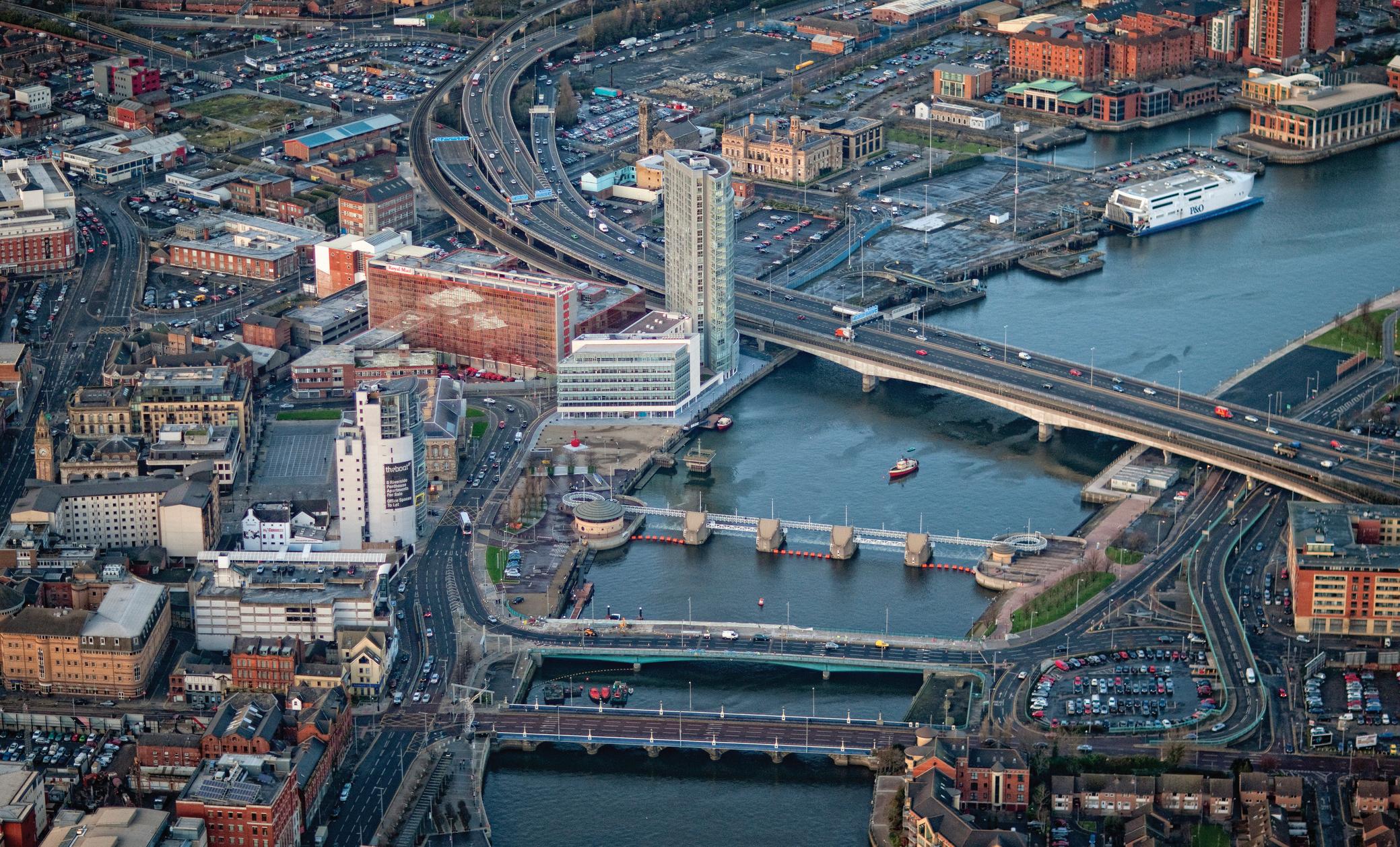
It is notable that, rather than a rapid increase in the population of Catholics, there has been a diversification of the population of Northern Ireland, shown by the various Protestant faiths adhered to by the 37.3 per cent of the population who state that they are Protestant, with 16.6 per cent worshiping as Presbyterians, 11.5 per cent in the Church of Ireland, and 2.3 per cent of the population who are Methodists.
Arguably more interesting than the Catholic plurality was the nearly one-infive (17.4 per cent) of people who state that they have no religion, and fall into varying categories of agnosticism and atheism. 53 per cent of the people who said that they have no religion stated that they were brought up in a religious home. The figures suggest that there are more

people from a Protestant background than a Catholic one who describe themselves as nonreligious, based on the 5 per cent gap between Protestant adherence and ‘Protestant upbringing’, and the 3.4 per cent gap between adherence to Catholicism and having been brought up in a ‘Catholic upbringing’.
Minority religions, including Islam and Judaism, accounted for 1.5 per cent of the population, mostly made up of the 3.4 per cent of people from an ethnic minority background.
These figures outline arguably the biggest demographic change within Northern Ireland, which is that there is an increasing secularity among the population, particularly with younger
agenda issues issues agenda 8
Identity in Northern Ireland, Census 2021
Source: NISRA
generations who further identify as non-religious.
The population within people of a Protestant background, in particular, is diversifying, becoming less adherent to Protestant faiths than those of an older generation.
National identity
No longer the “secure citadel of unionism”, the BBC’s Peter Taylor once described, less than half (42.8 per cent) of the population of Northern Ireland described themselves as British in any way. Even more surprising was the number of respondents who described themselves as ‘British only’, which was less than one-third (31.9 per cent). This is a decline from a figure of 40 per cent in the last census.
Within the 42.8 per cent of the population who identified as feeling some form of Britishness, 8 per cent of the population identified as both British and Northern Irish. The figure of 42.8 per cent is down from 48.4 per cent who identified as such in the 2011 Census.
What is further notable is that the only age demographic within which a majority identified as British was the 65+ group, thus inferring that the Britishness of the population of Northern Ireland will continue to decline into future generations.
Exactly one-third (33.3 per cent) of the population described themselves as Irish, which is an almost four percentage point increase since the last census in 2011, where 29.4 per cent of the population described themselves as Irish 29.1 per cent describe themselves as Irish only. Also notable is that in Census 2011, Irish was the third-placed identity, behind both British and Northern Irish, whereas now it is the second most popular identity, and is less than two percentage points behind ‘British only’ as an identity.
Noteworthy is that, despite the Catholic plurality in Northern Ireland, that almost one in four of the self-described Catholics in Northern Ireland do not identify as Irish, demonstrating that the two terms Irish and Catholic are not mutually exclusive in Northern Ireland.
The Census furthermore makes clear that a Northern Irish only identity, whilst having a notable place, is losing popularity, with 19.8 per cent of the population describing themselves as ‘Northern Irish only’, which represents a 1.2 per cent decrease in people identifying as such since 2011.

There was, however, an increase in people identifying as Northern Irish when combined with other identities, although it is still behind both ‘British only’ and ‘Irish only’, with 31.5 per cent of the population feeling Northern Irish.
There were 4.5 times more people who identified as both Northern Irish and
British compared with those who identified as both Irish and Northern Irish, thus suggesting that the people who identify as Northern Irish come from a background where one would traditionally describe themselves as British.
The prevalence of young people and the identification of themselves as Northern Irish suggests that the bulk of this demographic is made up of young people from British households.
This appears to be down to an increase in people from a unionist background who identify as Northern Irish and less as British, showing that Britishness, whilst continuing to represent the most common identity, is in decline in Northern Ireland.
Brexit increasing Irish passport holders
The Census figures reveal one of the most profound changes, arguably caused by Brexit, to have taken place in Northern Ireland, which is the rapid increase in the number of people who hold an Irish passport, as well as a decline in the number of people holding British passports.
Just over half (52.5 per cent) of the people of Northern Ireland hold a British passport, with 5.9 per cent of the population holding another passport in addition to possessing a British passport. In Census 2011, 59 per cent of the
issues agenda 9 agenda issues
31 9% 29. 1% 19 8% 8 0% 1. 8% 1 5% 0 6% 7 5% 0% 5% 10% 15% 20% 25% 30% 35% Br i ti sh only Ir i sh only N or th er n Ir i sh Br i ti sh a nd N or th er n Ir i sh Ir i sh a nd N or th er n Ir i sh Br i ti sh, Ir i sh, and N or th er n Ir
sh Br i ti sh a nd Ir i sh Oth er i de nti ti e s
i
4
Religion breakdown, Census 2021
population of Northern Ireland held a British passport, demonstrating a notable decline in British passport holders.
Just over 32 per cent of the population holds an Irish passport, whereas in Census 2011 this figure represented 21 per cent of the population. Whilst the Census does not state when the increase in holders of Irish passports took place, it is hard to look beyond Brexit as having contributed to this increase.
Everyone from Northern Ireland, whether British, Irish, or Northern Irish, is entitled
Source: NISRA Source: NISRA

to hold an Irish passport, which furthermore makes them citizens of the European Union, and able to retain the rights to freedom of movement across the European Union to which they are not automatically entitled as citizens of the United Kingdom.
This is a right which has been availed of by many citizens in Northern Ireland. Ian Paisley, the DUP MP for North Antrim who campaigned for Brexit, encouraged his constituents to avail of their rights and said that “If you are entitled to a second passport then take one,” describing an
Passport held, Census 2021
Irish passport as “a very convenient thing to have” for those travelling internationally.
A notable 5.5 per cent of the population of Northern Ireland hold both British and Irish passports, according to the Census.
Additionally, more than 15 per cent of the population hold no passport.
Just under 5 per cent of the population hold passports which are neither British or Irish, a further signal of the increasing secularity and diversity among the population of Northern Ireland.
agenda issues issues agenda 10 42. 3% 16. 6% 11. 5% 2. 4% 6. 9% 1 6% C
Pres
C
Me
t Ot
N
R
s
ed
atholic
byt erian
hurch of Ireland
thodis
her C hrist ian N on-Chris tian
o religion
eligion not
tat
17. 4% 1.3% 0% 5% 10% 15% 20% 25% 30% 35% 40% 45% 50%
United Kingdom only Ireland onlyUnited Kingdom and Ireland Other
The newest report from Matrix, the Northern Ireland Science Industry Panel, shows that by combining Northern Ireland’s natural conditions such as being one of the windiest places in Europe and benefiting from shallow seabed, combined with complementary infrastructure such as a publicly owned transport operator and modern gas network, the region is the ideal location to develop a future economy powered by green hydrogen.

Northern Ireland’s Future Hydrogen Demand and Capability, produced in conjunction with Frontier Economics, reveals that Northern Ireland can utilise these factors to develop innovative technologies to create and store hydrogen, potentially to heat homes, fuel transport and power industry as well as creating a hydrogen market with export opportunities for both fuel and technology.
Working with stakeholders from across industry, academia and government, the report identifies a range of specific barriers which need to be overcome to create truly transformative change but with its existing skills base, natural factors and willingness on the part of government and industry to decarbonise and invest, Northern Ireland is well positioned to take advantage of the potential benefits of a hydrogen powered economy.
The report articulates a vision for the green hydrogen economy in Northern Ireland, considering supply, demand and export potentials and an assessment of barriers and enablers that may need to be overcome or enhanced to ensure the sectors development. It also outlines an action plan to overcome these barriers and foster enablers and an assessment of potential wider impacts on growth, employment, and skills in the green economy.
With a young and highly qualified workforce, in embracing green hydrogen Northern Ireland could also benefit from well-paid, high skilled jobs, contributing to the Department for the Economy’s 10X vision.
The report also finds that, with buy-in from government and industry, Northern Ireland can position itself as a leader in green hydrogen technology. Rob Grundy, Chair of Matrix says: “If we act quickly and decisively to create an environment where the research talent and business acumen available in Northern Ireland can combine with the existing infrastructure and utility provision we have the opportunity, in uncertain times, to provide security of energy supply, affordable fuel to the consumer and make significant progress towards our net-zero carbon targets.” The report can be downloaded from the Matrix website by visiting:
W: https://matrixni.org/documents/northern-irelands-future-hydrogencapability-and-demand/
Through utilisation of its natural conditions, Northern Ireland can position itself as a leader in green hydrogen technology, outlines a new report from Matrix.
Harnessing the power of clean hydrogen to build a future economy
A sustainable footing


 Government Association (NILGA), Alison Allen, talks to David Whelan about the importance of a sustainable footing for local government, delivering a coherent voice, and the opportunity for economic growth.
Government Association (NILGA), Alison Allen, talks to David Whelan about the importance of a sustainable footing for local government, delivering a coherent voice, and the opportunity for economic growth.
12 cover story cover story
As the arm of government closest to communities, local government was praised for its agility and flexibility in responding to the pandemic, but fresh financial challenges pose risks to future service delivery.
The sector has faced unique challenges, not least a major drop off in its revenue streams as services were forced to close during successive lockdowns and rate reliefs were rolled out to protect local businesses and the economy. However, the nature of the pandemic also shone a spotlight on the importance of the vital services delivered by local government, ranging from waste management through to leisure provision and local placemaking.
Collaboration between regional and local government and the third sector during the pandemic was critical for a successful response and it was hoped that increased awareness of the role local government plays would be a foundation of efforts for recovery and growth. However, economic and political instability means that the sector now faces fresh financial challenges in delivering vital services to communities.
The Northern Ireland Local Government Association (NILGA) is the council-led representative body for local authorities in Northern Ireland. NILGA’s membership is drawn from each of the 11 councils, while working in partnership with other key regional bodies and stakeholders.
The association supports and represents Northern Ireland’s local government’s interests on regional bodies, within the UK Forum of Local Government Associations in the UK, the Republic of Ireland, and in Europe.

Alison Allen took up post as Chief Executive of the representative body for local authorities in Northern Ireland in February 2022, bringing with her over 20 years of public service experience, and immediately embarked on a process of engagement with each of the 11 councils to establish their priorities and identify those issues of common ground.
Allen believes now more than ever, as public finances come under increased pressure, that a strong and coherent voice and the building of a strong lobby for members is critically important.
“Our councils are sovereign entities, making decisions on local priorities but there are also many areas of common ground at a regional level. Councils provide some of the most important public services but local government only represents about 5 per cent of the public purse. So, when trying to prioritise the interests of residents and influence the rest of the public sector, it is important that we come together in our asks.”
On why ensuring the voice of local government is fully heard is a priority, Allen points to the agility and flexibility shown during the pandemic, where, as
pandemic has accelerated the appetite for digital transformation and the opportunities for more collaboration across the 11 councils, however, public finance pressures pose challenges to such progress.
Economic threat
Allen explains that “it is a very difficult time because we have shifted from a pandemic to an economic crisis”.
She adds: “Across the public sector, when facing a crisis, there is always a risk that you become introspective and focus only on your core services. That
the arm of government closest to the resident, local councils had the greatest insight into the needs of communities and were able to quickly mobilise staff in response to emerging priorities. The Chief Executive highlights the effective collaboration taking place daily between residents, elected representatives, and council officials, enabling the delivery of quick, needs-based solutions.
Enhanced confidence in local councils’ capacity to deliver effective services which best meet the needs of local council areas is one of the positive legacies of the pandemic, attests Allen. Pivoting quickly and dynamic planning after the initial disruption saw a real focus on the importance of delivering core services, which Allen explains was enabled by the high levels of accountability and democratic oversight which exist in local government relationships.
Like much of the public sector, the
tendency makes the realisation of our ambitions more challenging, however, councils are determined to continue to be outward looking and focused on growth.”
Allen describes a “cliff edge” scenario in relation to local government finances. Political instability at Stormont has not helped. Although councils raise over 80 per cent of their revenue through rates, they do receive some income for services and also central government grants for specific pieces of work. One example is the Rates Support Grant, provided to seven of the 11 councils which provides extra financial resources for those councils whose needs exceed their rates bases. That funding is not part of a recurring budget, rather, requiring the Department for Communities to bid annually to the Executive. The continuing absence of the Northern Ireland Executive means that at the end of October 2022, councils had not got the
4
13 agenda issuescover story cover story
“Councils provide some of the most important public services but local government only represents about 5 per cent of the public purse.”
2022/23 rates grant confirmed. “In the current financial context, there is a concern that even if that grant was to be confirmed, it would be reduced. As councils have already set their rates and budget for the financial year, any reduction would cause more difficulties in an already very difficult financial climate,” Allen asserts.
Combined with a potential shortfall in financial support from the Department, councils face a range of additional financial pressures emanating from payroll pressures, increases in utiliy/fuel costs, supply chain issues, cost of raw materials, waste contracts, capital
project costs, and inflationary pressures. The impact of inflation on interest rate rises will also see local government’s borrowing cost more, and ultimately, as Allen explains, the ability of councils to invest will be impacted.
“At a regional level, this financial year (2022/23) alone there is a gap of £90 million of uncontrollable costs in the sector, which, when councils set their budget last year, were completely unknown.”

NILGA, with the weight of all 11 councils, have called on government at a regional and national level for support, as was deployed during the pandemic.
“Councillors are in the process of setting the rates for 2023/24 and, without additional support, are faced with some of the most difficult decisions they will have faced in recent decades around passing on those costs to the resident through significant rate increases, during a cost-of-living crisis, or by cutting important public services.
“We are lobbying hard and have taken our case directly to the political parties, increasing awareness that budgetary gaps will impact on some of the basic, critical services delivered by local government to the public. Without financial support, councils will have to significantly reduce discretionary spend, but more importantly some of councils’ statutory services may have to be stripped back. That is not a position that we want to be in as a sector.”
Opportunity
Calls for councils to be put on a more financially sustainable footing in the short term are underpinned by a longerterm ambition to see a substantial review of how councils in Northern Ireland are funded. Allen highlights that one of NILGA’s priorities is securing buy-in for a “systematic review of how local government is financed”, stressing that an annual budgeting cycle poses a challenge to long-term planning.
The Chief Executive says that sustainable financing would enable a consistency of service levels across all local authorities. However, she believes that the greatest prize would come in the form of councils excelling in their role as placemakers; planning and investing on a long-term basis.
“While the past two years have been an immense challenge for the public sector and have put a serious strain on our councils, they have also served to highlight the huge value local government brings to Northern Ireland,” she says.
Local government’s response to the pandemic reinforced long-standing calls for the transfer of regeneration powers, which Allen describes as “the missing

14 cover story
cover story
“At a regional level, this financial year (2022/23) alone there is a gap of £90 million of uncontrollable costs in the sector, which, when councils set their budget last year, were completely unknown.”
piece of the jigsaw”. The reform of local government in Northern Ireland had initially proposed the devolution of powers to regenerate towns and cities across Northern Ireland to local authorities, but a late decision was taken to retain such powers centrally.
Having continued to lobby for regeneration powers to be transferred since that late decision (2016), Allen says that local government is pleased that former Minister for Communities, Deirdre Hargey MLA, had directed her officials to work with local government in exploring this transfer again, although cross-party political agreement will be required for implementation.
“Local government proved itself and its worth during the pandemic, as well as when the Assembly was absent for three years prior to Covid. Our councils know their areas better than any other institutions. They know what works for their communities, what they need more of, what they need less of and have the partnerships in place to ensure citizens get the public services they deserve. Even more local decision making, and local policy development does not just make sense; it is necessary if we are to create a more sustainable Northern Ireland, one which aims to deal with the economic, social, and environmental challenges before us,” she says.
Asked whether recent criticism of the local planning system, a power that was transferred to councils in 2015, might hinder further devolution of powers, Allen says: “Recent reports by the Audit Office and the Public Accounts Committee on the planning function highlighted a number of issues and set out recommendations for improvement.
Much of those recommendations centred on how power was transferred and the current balance between central and local government and the systemic issues that exist, including the multiple actors involved.
“There are areas for improvement and, as a sector, we are committed to playing our part in that. NILGA is working with all 11 councils and central government in
bringing forward an action plan to address those systemic issues.”

Elected member development
As well as delivering a coherent voice for the sector, another critical role delivered by NILGA is delivery of the regional Elected Member Development Charter, a training framework designed to support elected members with enhanced capacity for their roles and responsibilities.
Allen explains that a huge number of elected members have utilised NILGA’s training and support programmes and, with political parties recognising the capacity for local government to develop individuals’ skills and competence, the service boasts past participants which range from MLAs to MPs and party leaders.
With fresh local government elections scheduled for May 2023, Allen explains that NILGA are already progressing plans for the new mandate, with a review currently underway of the programme for elected member development, to ensure that skills, capacity and knowledgebased training are relevant and fit for the future.
As NILGA’s membership is based on party make-up, May’s election will see
the organisation re-constituted. Allen explains that work is already underway on the development of a new corporate plan, including regional local government priorities for the next four years.
Concluding with her short and long-term ambitions for the new mandate, Allen summarises that the short-term ambition is to see councils financially stable, in order to continue providing the necessary services for communities.
“We are saying we are committed, as a public sector family, to reduce inequalities. However, the longer-term implications of a reduction in critical services delivered by councils is an increase in the inequality gap.”
Additionally, NILGA hopes that any future Programme for Government is a programme for all government, with local government recognised as a partner and not a stakeholder in public service delivery.
“In the longer term, NILGA and our members want to see the transfer of regeneration powers achieved. We will be using our relationships with central government and political parties to continue making the case, in the knowledge that regeneration is the missing piece of the package for delivery for communities.”
PROFILE :
Alison Allen
Before taking up the role as NILGA Chief Executive on 1 February 2022, Allen’s over 20 year public service experience spanned roles in Antrim Borough Council, the Electoral Office for Northern Ireland and the Northern Ireland Assembly. Most recently she worked for Belfast City Council, initially as Safer City Manager and later, as Neighbourhood Services Manager.
Allen says that the pandemic saw her recalibrate her work-life balance, with a greater appreciation for time spent with immediate family. To wind down, she enjoys playing the piano and is an avid reader.

15 cover story cover story
Regulating for a net zero future
The

“I cannot think of a time where the profile of the energy market in Northern Ireland, across the island, UK, and Europe has unfortunately been higher,” states French, who admits that the word unprecedented has been exhausted in the context of a worsening energy crisis.
Pointing to the further challenges to be posed over the winter period, French says that while stakeholders cannot control global events, their response to such events will be critical.
French believes that key to this response will be the development of a more “resilient, efficient, and eventually zero carbon energy system” in the future, ensuring that Northern Ireland never again finds itself in the situation of the past 18 months.
“We need to reduce our exposure to international gas markets, and the impact this has on our electricity market. We need to grow our own energy, ensure long-term affordability, and security of supply, whilst providing a price that enables the economy of Northern Ireland to grow, and households to function correctly,” he explains.
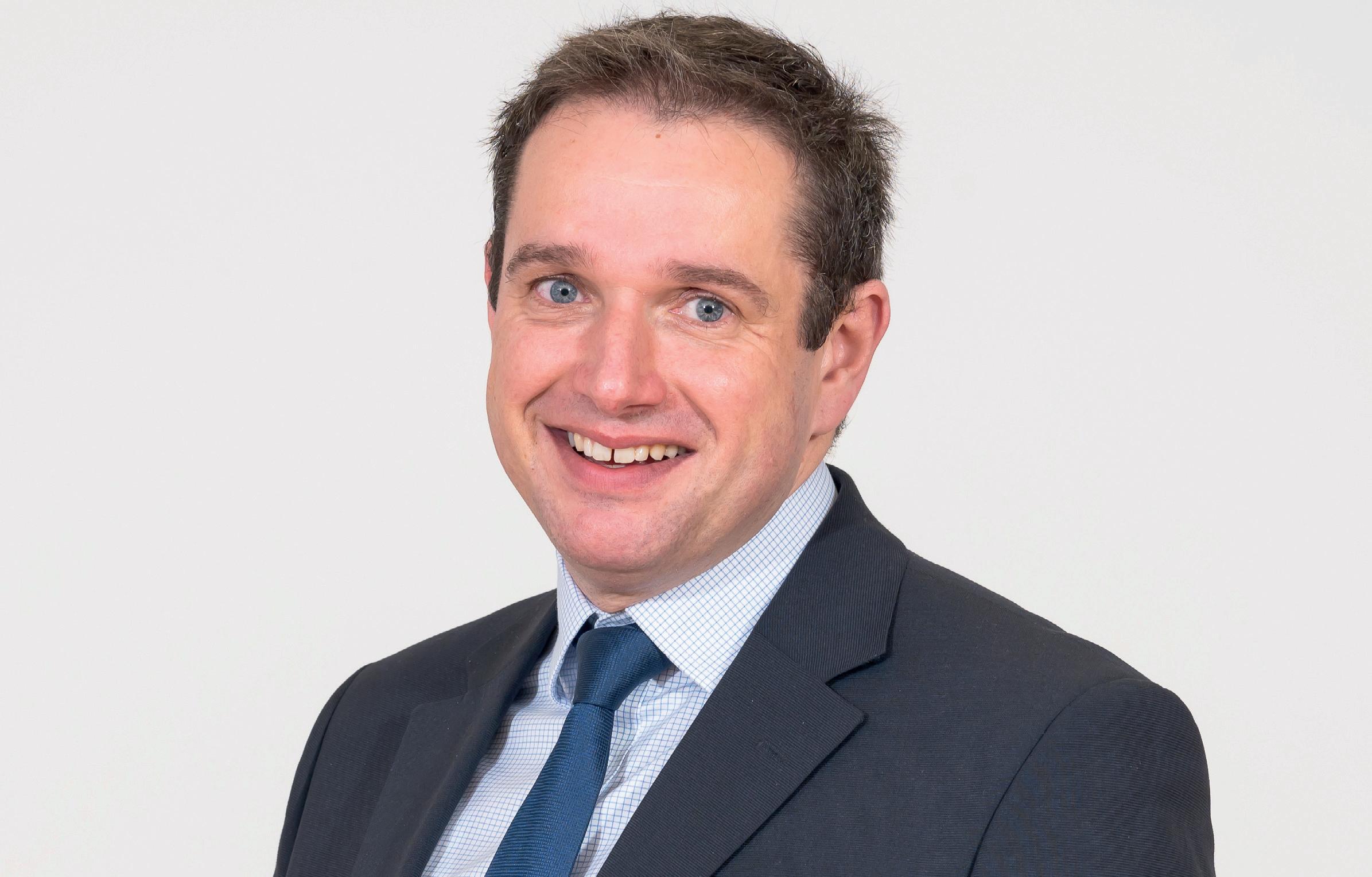
Utility Regulator cannot become a “blocker” to the development of a net zero future,
Chief Executive
the development and restructuring
the
agenda issues issues
16
says
John French, who outlines
of
organisation.
agenda
Outlining his desire to see the Utility Regulator keep pace with these changes, and ensuring the regulatory framework needs to be agile, whilst providing consumers with the protection that they are paying a fair and reasonable price for the transition, French states: “We cannot become a blocker to the development of a net zero future.”
The Utility Regulator says that the organisation is undergoing a process of development and restructuring, moving away from its three current functional directorates of wholesale, networks, and retail, to four functional departments of:
Markets: Looking at developing both retail and wholesale markets for gas and electricity;
Consumer protection: Looking to support domestic and business consumers through this crisis and the energy transition;
Price controls: Looking at price controls across the organisation, to support the development of a successful low carbon future at the best price for consumers; and
Networks and energy futures: Supporting the Department for the Economy’s (DfE) Energy Strategy, and the development of our networks so they can support the transition to a zero carbon future.

French says that, in addition, it is likely that the Utility Regulator’s statutory powers will evolve to enable them to regulate heat, hydrogen, low/zero carbon transport, etc.
Stressing that these changes will need to be focused on meeting the interests and needs of consumers, rather than developing technical policy focused initiatives, French says: “As a regulator, we will have to be open to doing things differently. We are already demonstrating, through things like our funding of low carbon investment and support for the green recovery programme, that we can support necessary intervention now, for the future.”
To this end, the Utility Regulator says the Department for the Economy’s Energy Strategy is the reference point for the
decarbonisation journey and welcomes the progress made to date, specifically, the launch of the recent consultation on the one stop shop.
Protection
French says that while the overall ambition is for a zero carbon energy system, in the short term, the Utility Regulator has a role in protecting consumers and ensuring industry helps consumers through the energy crisis.
Outlining a conscious move to a more public facing role, honestly explaining what is happening in the market, French says that there is no room for complacency as consumers and businesses in Northern Ireland continue to struggle.
The Utility Regulator has been working with the UK Government since June 2022 to bring their Energy Price Guarantee and Energy Bills Support Scheme, which, when fully delivered, French believes will bring much needed relief to consumers and businesses.
However, he is aware that mitigation has not fully shielded households and businesses. With support schemes only planned to run until March 2023, but the crisis predicted to remain for at least the next few years, he has called on stakeholders to work “more closely than they ever have before”.
“As a utility regulator, we take our code of practice very seriously, and we are clear that suppliers must comply with their obligations,” he states, adding that the Utility Regulator is working with the Department for the Economy, the Department for Communities (DfC) and the Consumer Council to develop a voluntary consumer energy charter for this winter, building on existing regulatory codes of practice.
He asserts: “We need everyone to act proactively on behalf of their consumers. Where this does not occur, we will take action.”
Concluding, French says: “It is a daunting but exciting time to work in the energy sector in Northern Ireland. This winter will be challenging and we need a collaborative response to support all consumers, particularly the most vulnerable.
“Despite these challenges, we must continue to assess how the energy crisis should change our approach and plan for the longer term to develop solutions that thoroughly addresses our current vulnerabilities.
“Ultimately, our long-term destination remains clear; we need to move to that smarter, secure, low cost, and zero carbon energy system that consumers deserve.”
issues agenda 17 agenda issues
“We cannot become a blocker to the development of a net zero future.”
Project Stratum: ‘The infrastructure project of a generation’
That is because Project Stratum has enabled the Belfast company to bring these rural customers out of digital darkness by giving them access to hyperfast broadband.
Fortunately, many more homes will benefit from what has been hailed as “the infrastructure project of a generation”, as Fibrus continues to roll out the transformative initiative at a time when broadband is considered as essential as electricity or water.
The incredibly encouraging news comes as the reliable full fibre broadband provider recently hit the halfway point in its delivery of Project Stratum.
Indeed, by the end of September 2022, nearly 47,000 premises (46,711 to be exact) can be connected to a fully fibred broadband service, thanks to Fibrus.
That impressive figure is from a total overall target of 84,651 premises due to be connected under the auspices of Project Stratum.
And, although the goal for the end of September was 43,158, Fibrus over-delivered on its objectives, linking an
impressive 3,553 more premises than initially forecast.
Jenny Lennon, Construction Director at Fibrus, explains that Project Stratum was the most important infrastructure project of this generation: “It is revolutionary for Northern Ireland, particularly for the communities and businesses who, to date, have had no meaningful broadband connection.
“This is an extremely challenging rural network build that began in the middle of a global pandemic.
“We commenced the build on the day we signed the contract, something that is generally unheard of, and both our work ethic and commitment to our customers has remained focused throughout.
“Planting those first poles in Coalisland on 19 November 2020, was a sign of our intent to connect people to high quality broadband as quickly as possible.
“We connected our first customer just three months later which is an absolute testament to the dedication of not only our own teams, but also our suppliers.

Fibrus has been busy making a difference to the lives of people across Northern Ireland, as almost 50,000 householders can confirm.
“We continue to remain focused on our delivery, we consistently evolve to meet the demands of our rollout and ensure we continue ahead of schedule.
“We recognise that full fibre broadband is key to unlocking the full potential of Northern Ireland and the ensuring every home and business is on a level playing field. The benefits full fibre brings to the Northern Ireland community are lifechanging.
“Broadband in rural areas was constantly missed because, without government intervention, it was not commercially viable, but here we are now, with close to 50,000 homes afforded hyperfast services thanks to future-proof fibre technology.”
Lennon adds: “In addition to Project Stratum, we are rolling out our own commercial network across smaller urban towns and villages, targeting a total build of 350,000 and we plan to expand on this.”
Project Stratum is financed by the UK Government, the Department for Economy (DfE), the Department of Agriculture, Environment and Rural Affairs (DAERA) and Fibrus, the full fibre broadband provider responsible for its delivery under the brand Hyperfast NI.
£165 million of public funding was initially allocated to Project Stratum to address just over 76,000 eligible premises. £150 million of this was allocated by the UK Government as a result of the confidence and supply agreement between the DUP and the Conservatives, with an additional £15 million allocated by DAERA. A further £32 million of public funding was secured for the project in January 2022, with £22 million allocated by the Department for
Digital, Culture, Media and Sport (DCMS), £5 million by DfE and a further £5 million by DAERA.
Fibrus Chief Operating Officer Shane Haslem, who describes Stratum’s goal as “bringing Northern Ireland out of the digital dark ages”, says the company’s agility was central to the project’s success.
“The life-changing element of Project Stratum was evident among those who had previously struggled with lack of speed and connectivity,” he explains.
“Families can now reap the benefits of being able to access everything the internet has to offer.
“Fibre to the premise technology is more robust and provides a much more stable and high-quality service.
“Unfortunately, digital inequality remains a reality for too many people and communities, but Project Stratum complimented with our own commercial build is helping to put an end to that in Northern Ireland towns and villages.
“Tackling that inequality, particularly in rural areas, is why Fibrus exists.
“We are committed to delivering significant, lasting change. That is not a goal, it is our crusade.”
A report by Ookla, published in October 2022, found that Fibrus offered “the fastest median download speed in four counties” in Northern Ireland when compared to some leading UK fixed broadband providers.
Haslem says the findings “confirm the speed benefits and reliability our network provides to customers who choose to sign up with us”.
He adds: “Many phone and TV companies still use slow copper networks from the cabinet to the premises whereas it is full fibre all the way with us, providing world class performance and faster network speeds. Consumers should no longer accept a service that delivers poor performance.”
Former Economy Minister Gordon Lyons MLA described Project Stratum as one of the most important major infrastructure projects that Northern Ireland has ever seen.
“Project Stratum is made possible by funding provided through the DUP/Conservative confidence and supply agreement and aims to make Northern Ireland one of the best-connected countries in the world,” he says.
“The 85,000 premises set to benefit from this much-needed public intervention will help close a broadband connectivity gap that has existed in Northern Ireland compared with other parts of the UK at superfast levels.
“Project Stratum aims to maximise coverage for as many eligible premises as possible across predominantly rural areas of Northern Ireland, and all premises to benefit will have access to full fibre, gigabit capable broadband.”
T: 028 9099 3230 W: www.fibrus.com
“Broadband in rural areas was constantly missed because, without government intervention, it was not commercially viable, but here we are now, with close to 50,000 homes afforded hyperfast services thanks to future-proof fibre technology.”
Opposing the status quo
Despite being an MLA for less than three years, the SDLP’s Matthew O’Toole is now a senior figure and leading face of the party.
O’Toole, a former Chief Press Officer in 10 Downing Street, relocated his family back to Northern Ireland when the opportunity arose to replace party colleague Claire Hanna MP as a representative for Belfast South in the Northern Ireland Assembly in January 2020. Despite his short tenure, he now leads the SDLP’s Assembly group.
The Belfast-born MLA’s escalation is set in the context of a bruising election in
May 2022 which saw the SDLP slip from third to fifth in terms of Assembly seats, relegating it from the Executive and ensuring the loss of some senior figures, not least its deputy leader Nichola Mallon.
In response to losing four of its previously held 12 seats, squeezed by increases in both Sinn Féin’s and the Alliance Party’s vote, understandably, shortly after the election, the party launched an internal review, the findings of which have now been shared with members.
Internal review

O’Toole outlines a three-stranded review which looked at membership structures, professional structures (including staff and elected representatives), and the party’s messaging.
“It has been a positive and constructive process,” he states. “At no point have we been in denial about the election and unlike others, we took our lumps.”
In July 2022, in the absence of a postelection new Executive, the SDLP announced a move to Opposition, with party leader Colum Eastwood MP formally

Following his party’s disappointing election performance in May 2022, SDLP MLA Matthew O’Toole talks to David Whelan about a move to Opposition, plans to renew the party, and his outlook on the constitutional future of the region. agenda issues issues agenda 20
nominating O’Toole as Leader of the Opposition.
Official Opposition at Stormont, made possible in 2016 through the Assembly and Executive Reform (Opposition) Bill, entitles parties to the right to determine Assembly business on 10 plenary days per year, extra speaking and questioning rights in plenary meetings, research, and some modest financial assistance.
O’Toole contests the idea that the move was a foregone conclusion, following the loss of the right to a seat on the Executive. “We did not have to designate as Official Opposition and we did not have to do it when we did,” he states, admitting that the timing enabled the unsuccessful application of “distinct pressure” on the DUP to return to fully functioning government, through the recalling of the Assembly.
The Belfast South MLA indicates that the move to Opposition underpins some of outcomes of the internal review.
“The move to Opposition is part of showing that we are taking a different direction as a party. One of the election outcomes was that we received a lot of second preference votes. So, there is a big array of people who still want the SDLP around and still want them in the political firmament.
“We need to understand who those voters are. We need to refresh ourselves as a movement in terms of what our core values are. Part of that is being in Opposition, part of that is rebuilding ourselves as a movement which has a vision of what we want in society, what we want for Northern Ireland and what we want in the Ireland of the future.”
O’Toole echoes comments made by the SDLP leader that the party has struggled to define itself in the years after the Good Friday Agreement.
“For a long time, a lot of people have seen the SDLP as a piece of infrastructure that they like having there. They trust us. But it is not our job to make everything work for everyone else.
“We want to see an Executive formed and we will be a constructive, serious Opposition,” he adds.
Interestingly, O’Toole indicates that the move to Opposition may have been on
the cards, even if the party had qualified for an Executive portfolio.
“It is highly probable that we would have considered going into Opposition,” he states. “The blunt truth is that in the last mandate, there were structures around how decisions were taken, particularly between the two big parties, which did not build a sense of shared governance.
“Certainly, we would have went in [to talks] with a constructive mindset but there is a strong probability that we would have been in Opposition anyway, given some of the lessons we learnt in the last mandate.”
A major consequence of the loss of an Executive mandate is the removal of the right to participate in currently ongoing talks with the Head of the Civil Service on a draft Programme for Government. However, O’Toole believes that party can use the opportunity away from government to grow, with an overall ambition of more votes and more seats.
Quizzed on where he sees these votes coming from, O’Toole says that a major message from the party review is the confident delivery of the party’s message.
“Part of what we need to do is to talk confidently about what we are and not allow other people to define us.”
The MLA believes the SDLP are uniquely placed to create a social democratic ‘new Ireland’ and identifies three big divisions in Ireland which they can help to address in the form of geographical division, division of the two traditions, and division of inequality and economic opportunity.
“A lot of people who want to end sectarianism in this society are aware
that the way we are constituted in this place and the way we were created 100 years ago has enshrined and perpetuated the daily division. Sinn Féin, in my view, cannot do reconciliation and I do not think they are as genuinely, truly committed to reconciliation being part of ending partition as we are. I do not think the Alliance Party want to talk about partition. They want to shy away from that because they have got an electoral coalition that works for them at the minute.
“We are a party that wants to end those divisions. None of us are kidding ourselves about the challenge we had in the election, but when I look at the political landscape, I think that there is a space for a progressive centre left party and a lot of people are in that space.
“We need to describe ourselves better. Young people have not had us tell them clearly what we want and what we are offering: an anti-sectarian, democratic new Ireland.”
Protocol

Of course, talk of a future mandate is done in the context that the Northern Ireland Assembly has yet to return after the election and no solid indication of how negotiations around the future of the Northern Ireland Protocol will shape the potential return of the institutions.
O’Toole believes little appetite existed for a second election in 2022 and is of the opinion that the UK’s current sovereign debt crisis has bolstered the likelihood of a deal being agreed between the UK Government and the EU.
The MLA insists his party has “led the debate” on the opportunities the Protocol 4
21 agenda issues
issues agenda
“Part of what we need to do is to talk confidently about what we are and are not allow other people to define us.”
represents for Northern Ireland. He welcomes the potential “smoothing” of barriers to trade, which he describes as an inevitable consequence of the Brexit referendum but raises opposition to any prospect of “our access to the single market being watered down”.

Future Ireland
A central plank of the SDLP’s renewed message, which they aim to deliver with confidence, is the ambition for creating an anti-sectarian, democratic new Ireland. In July 2020, the SDLP launched the New Ireland Commission, which seeks to “engage with every community, sector and generation on this island to build new proposals that can generate a consensus on our future constitutional arrangements”.
O’Toole contends that part of the SDLP’s role in Opposition will be to set out its
case for ending partition. Recent Census results, which recorded Catholics outnumbering Protestants in Northern Ireland for the first time, spurred fresh calls from some quarters for a border poll date to be set.
O’Toole wants constitutional change but is hesitant to define a date for when a border poll should be held. Instead, he believes calls for a border poll now is “narrow” thinking. However, when pushed, he adds: “I think years, not decades.”
The Belfast South MLA believes ‘when’ is the last element of the question around a border poll or unity, with ‘why’ and ‘how’ needing to be addressed first.
Discussing the ‘why’, O’Toole points to some “clear limits” of Northern Ireland such as economic opportunity, equality, and basic governance. He also points to “clear opportunities” of re-joining the EU
and of achieving “reconciliation on these islands and between these islands”.
“What our party brings to the table is reconciliation with unity. These projects have to go along together. That does not mean that every unionist has to be in favour, but it does mean that they know in the new Ireland being designed that there is a sincere, profound and deep attempt to not just try to accommodate unionism or Britishness, but to celebrate it.”
Additionally, he points to the potential benefits of meeting current challenges by delivering an all-island health service and addressing the climate change and biodiversity crises in a unified way.

“The ‘why’ is what gets you passionate, but you also have to consider the ‘how’,” he says. “How do we pay for it? How does it work bureaucratically, what will the transition look like in fiscal terms?”
“If you can answer ‘why’ and ‘how’, then the further question is the ‘when’. That is not putting the issue on the long finger, the ‘when’ question comes quicker when you have addressed the ‘why’ and ‘how’.”
To those who believe work towards constitutional change undermines work towards a functioning Stormont, O’Toole says that it is a completely reasonable approach to build a vision and then set out detail on how you mean to achieve it.
“A part of us being in Opposition is about setting out our case. We are not boycotting our role as a constructive and serious Opposition but we are also seeking to build a vision for an antisectarian, democratic new Ireland.”
Future
Looking to the future, O’Toole says that he looks forward to continuing to be involved in the party’s leadership group and to leading the Assembly group in Opposition.
“I think the key thing is refreshing our message and our vision for people. A big part of that is having a better Northern Ireland now and then building a vision for a social democratic new Ireland in the years to come,” he concludes.
agenda issues issues agenda 22

Housing Executive strategy zeros-in to eliminate carbon
As it moves towards its target of producing net zero carbon emissions by 2050, the Housing Executive recently launched its Corporate Sustainable Development Strategy and Action Plan (2022-2027).

A framework for helping to tackle the climate emergency, the new strategy outlines the organisation’s commitment to sustaining our environment for future generations and providing quality, affordable housing.
Over the next five years, the strategic housing authority has committed to improving its social and environmental impact while addressing the cost of living crisis.
Strategic sustainable development targets include:
• a 6 per cent reduction in carbon emissions by 2026;
• as a landlord, retrofit housing to increase energy efficiency by 2030, plus a 23 per cent reduction in carbon emissions up to 2030/31; and
• a corporate 25 per cent reduction in carbon emissions by 2030/31.
Key strategic actions include improving the organisation’s built environment, supporting biodiversity, assisting sustainable communities and promoting sustainable transport.
Educational empowerment leading to behaviour change is essential, and improved health and wellbeing outcomes through more sustainable living is also a key focus for change.
Housing Executive Chief Executive Grainia Long says: “Alarm bells about climate change and soaring wholesale energy prices have brought the urgency of the climate and energy crisis into sharp focus.
“Our housing sector faces a huge challenge. Northern Ireland has reduced greenhouse gas emissions by 24 per cent since 1990 but much more needs to be done.
“We recognise the need to decarbonise the built environment and we are determined to influence future best practice through innovation and collaboration.
“In this strategy we have put sustainability at our core, meaning we want to transform everything we do with an intent and urgency on the need to decarbonise our stock, improve energy efficiency, support the building of low-carbon homes and decarbonise our fleet.”
She adds: “The funding and scaling up of implementing energy efficiency measures across Northern Ireland is urgently required across all tenures, not just social housing, and we have a great opportunity to do this on a cross-governmental basis.
“We know that 14 per cent of greenhouse gases come from the residential sector and, in our unique role as Northern
Ireland’s largest landlord and its Home Energy Conservation Authority, we must play a leading role in reducing greenhouse gas.
“To achieve net zero, we need to work with government and other partners to insulate homes and replace fossil fuel heating systems with ‘clean heat’ technologies, such as heat pumps and heat networks.
“We will also encourage other housing providers to do the same,” Long states.
The Chief Executive says that decarbonising Northern Ireland’s housing stock was not only an essential part of tackling the climate emergency, it also combatted fuel poverty, stimulated the economy, created jobs, provided warmer homes and cleaner air and supported biodiversity.

“Last year we invested £35 million specifically on energy efficiency improvement measures within both landlord and regional services.
“This investment includes the rolling out of one of the largest retrofit programmes across the UK, which will see vast improvements in the energy performance of almost 2,000 of our homes. It includes improving thermal efficiency in aluminium bungalows and ‘no fines’ dwellings through the provision of new external wall cladding, new double glazing, improved ventilation and loft insulation,” she continues.

“At the core of the programmes is a range of innovative technologies to address the impact of climate change and improve sustainability. Taking a
‘fabric first’ approach to the decarbonisation of homes, and delivering at scale in this decade, presents a once in a generation opportunity to improve housing standards, reduce energy costs of households and create jobs.
“However, achieving our ambitions will require very significant investment in energy efficiency measures, the funding for which will not be available under our current funding regime.
Long concludes: “Consequently our 2030/31 targets for our housing stock will be reviewed as the issues of funding, technology and sector capacity become more clear towards the end of our initial five-year action plan period.
“The Housing Executive would like to thank all our stakeholders from across the residential sector, and in particular Sustainable NI who supported our strategy development.”
TARGETS
WASTE
• 60 per cent recycling on office estate by 2030 in line with the Northern Ireland municipal recycling target.
NATURE
• Promote habitat creation, biodiversity and carbon sequestration by planting 7,000 trees per year.
FUEL POVERTY
• Support a range of fuel poverty measures across our existing housing, deliver the Department for Communities’ private sector grants programmes, and provide energy advice across both public and private sector housing.
GENDER EQUALITY
• Ensure a highly valued, engaged, performance and customer orientated workforce, which is representative of our community, and an environment of dignity and respect and health and well-being, where all employees are enabled to reach their potential and be recognised for their individual contributions.
Housing Executive
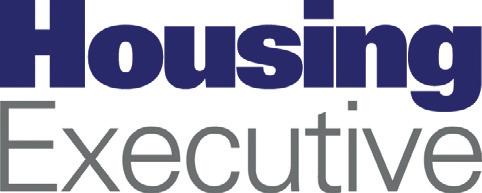
T: 03448 920 900
E: information@nihe.gov.uk
W: www.nihe.gov.uk
Sunak crowned as latest Tory leader
Rishi Sunak MP has become the Prime Minister of the United Kingdom, completing the most remarkable political comeback in recent times, following the disastrous premiership of Liz Truss MP, who set the record as the shortest ever serving Prime Minister.
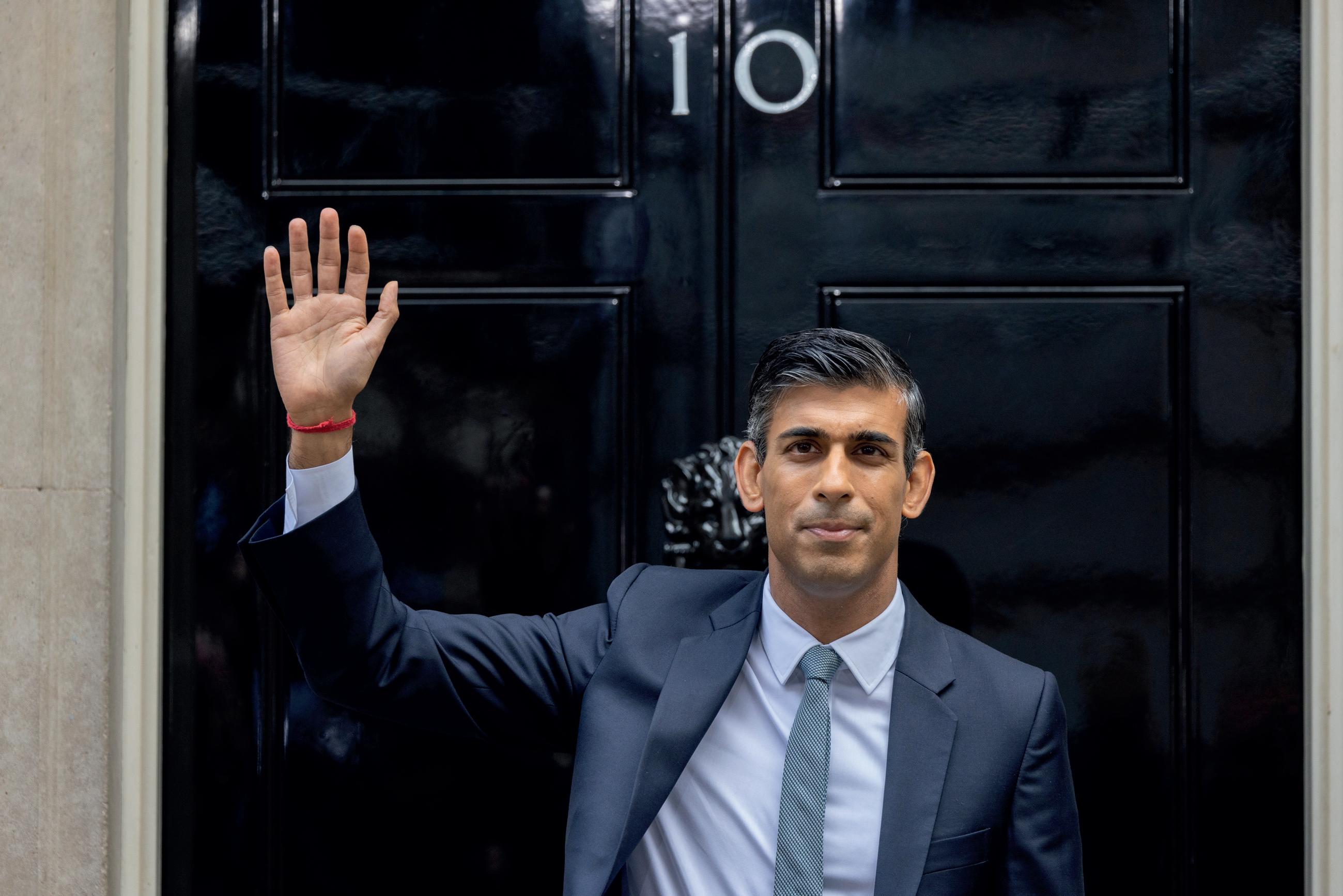

Sunak has been selected by the Conservative Party as he is seen as someone who can unite the party and who is not as controversial as his two predecessors. This is in spite of the fact that he received a fixed penalty notice over ‘partygate’ when he served as Chancellor of the Exchequer.
He is the youngest Prime Minister of the United Kingdom since Robert Jenkinson in 1812, and the first non-white Prime Minister.
The leadership election from which Sunak emerged victorious was a vastly different contest to the one he lost earlier in 2022. Indeed, Sunak was not elected on any specific platform other than uniting the Conservative Party and fixing the consequences of the disastrous ‘mini budget’ which took place under his predecessor.
He also had to contend with a viability exploration of his former boss, Boris Johnson MP, whom it appears was unable to garner the necessary support from his parliamentary colleagues and make a sensational return to the office he acrimoniously left only two months ago.
agenda issues issues agenda 26
A return to austerity and diplomatic ambiguity
Sunak’s coronation as leader by his peers is largely, although not exclusively, due to the economic catastrophe which was unleashed under his predecessor.
Although he garnered a reputation among some of his Conservative colleagues as a big spender, with Jacob Rees-Mogg MP even referring to him as a “socialist”, economic discipline will be at the heart of Sunak’s Government.
Michael Gove MP has proclaimed that “the grown-ups are back in charge”, thus suggesting that the Conservative Party will be making a move away from the economic populism of Johnson and his supporters, and back towards the austerity policies implemented by David Cameron and George Osborne.
One of the first actions undertaken by Sunak and the Chancellor Jeremy Hunt MP was to delay the autumn statement, which is expected to result in tax increases across the board with an emphasis on reducing debt as a share of GDP, as well as filling a £40 billion black hole in government spending.
The United Kingdom has not had a budget surplus since 2001, although the austerity policies under David Cameron and George Osborne were designed to ensure such a scenario.
Sunak’s foreign policy vision is ambiguous. He was a new MP during the Brexit referendum in 2016, although he did support ‘leave’, which reportedly led former Prime Minister David Cameron to say that ‘remain’ had “just lost the future of the Conservative Party”.
He is expected to continue the Government’s support for Ukraine, although he has confirmed that the foreign aid budget will not rise back to 0.7 per cent of GDP as had been previously committed, and it is further expected that defence spending will remain at the minimum NATO standard of 2 per cent, rather than the 3 per cent that had been supported by his predecessor.
His reappointment of Chris Heaton-Harris MP as Northern Ireland Secretary of State was seen as an olive branch to the Johnson supporters of the Conservative Party, although it does appear as though Northern Ireland is not high on the list of priorities for Sunak, with the United Kingdom potentially standing to lose a lot should they renege on the Northern Ireland Protocol.
Furthermore, there are suggestions that Heaton-Harris’s decision not to call a promised Assembly election on 29 October was motivated by direct orders from the Prime Minister, who has outlined his ambiguous stance of supporting negotiation with the European Union.
The reappointment of Suella Braverman MP as Home Secretary can be taken as a signal that Sunak’s compromise with the right of the party is that he and Hunt will control the economic agenda, whilst the right get to set the agenda with regard to social issues such as immigration.
A moment in history

Sunak is the first Prime Minister of south Asian descent in the history of the United Kingdom. As the son of Indian immigrants, the media in India responded by saying: “An Indian son rises over the [British] Empire, history has come full circle in Britain.”
He is furthermore the first Prime Minister to adhere to the Hindu faith, the first born in the 1980s, and is also believed to be the richest person to have ever become Prime Minister.
With an estimated net worth of £730 million, which is believed to be almost 30 per cent more than that of King Charles, Sunak is the first Prime Minister to have a higher net worth than a British monarch.
issues agenda 27 agenda issues
Access to digital education: Providing students in Northern Ireland with the skills and opportunities for a brighter future
Capita Education Cloud is providing a secure ICT environment for The Education Network for Northern Ireland Schools (ENNI), an innovative education technology service available to all grant-aided schools. C2k oversees delivery of the service as part of the Northern Ireland Education Authority.
Providing opportunities to succeed
Our ICT services provide schools with the flexibility, innovations and tools they need to access online and traditional learning resources. With 1,060 schools, more than 300,000 pupils and 50,000 teachers benefitting from the service, Northern Ireland schools are able to pioneer edtech solutions in teaching and learning by equipping young people with the digital skills to succeed.
Central to the solution is the Capita Education Cloud, which integrates public and private cloud services with local school-based resources, providing a secure ICT environment for every pupil and teacher in primary, post-primary, special education needs schools and EOTAS centres.
The proven power of managed IT services

Locally based delivery teams monitor, manage and support the ICT service and school ICT infrastructure, from system and network monitoring to operations management, foreseeing issues and proactively resolving them to ensure minimal disruption to the teaching and learning environment. A team of region-based field engineers assist schools with a range of ICT queries, including hardware break-fixing and project support, if on-site support is required.
Reflecting on value of managed services, Corinne Latham, Principal of Seaview Primary School, Belfast, remarks: “Teachers are busy people, their core function should be to focus on teaching and learning not fixing hardware. In addition to the C2k managed service we have a technician who supports Seaview PS on a regular basis. It allows the ICT coordinator to focus on leading the ICT curriculum and have an informed expert coming into school to assist figuring out some of the problems we encounter and finding positive solutions that don’t cost the earth.”
My-School: Access to personalised learning
Innovation in education has the potential to transform students’ lives, which is why we have introduced leading-edge digital solutions, advanced technology and collaboration platforms on which to innovate together. A core element of the cloud service is Capita’s My-School, a web-based platform that delivers personalised learning and single-sign on to all school-based services, applications and systems. Key features include:
• customisable interfaces for all ages and abilities;
• Office 365 and G Suite productivity tools;
• Newsdesk and Seomra Nuachta: Capita’s digital news reporting platform;

• media library and learning exchange: Offering service user guides and resources in video and written format; and
• access to a wide range of educational applications.

Speaking about their school’s experience, Michelle Clancy, Assistant Principal of St Patrick’s Grammar School, Downpatrick, comments: “The use of G Suite has raised the bar in learning and teaching at St Patrick’s.The G Suite tools have helped our students to succeed and achieve through increased communication, collaboration and active learning, inside and outside the classroom. The teaching staff and students are very excited about our next steps with Google and extending the use of Chromebooks into other lessons.”
Safe, smart and secure online environments
In parallel, we also provide a unique, secure wireless solution for schools, which delivers the highest level of online safety to pupils and teaching staff, while providing the freedom to access learning and appropriate online resources. We manage the security software on more than 80,000 devices and undertake school network scans daily, protecting against vulnerabilities and cyber exposures. With education email and web filtering in place and a dedicated team monitoring internet usage, school leaders are assured that all users are protected when using the school network.
The wireless solution has enabled schools to use a range of devices on the C2k network, from tablets, laptops and desktop PCs to connecting interactive panels and Macs to facilitate engaging and interactive lessons. This also provides schools with the flexibility to

implement mobile and BYOD strategies. This year we have supported the roll out of 21,000 Microsoft Surface Pro 7+ laptops to teachers in the region supporting innovative teaching, this program has been supported by a new professional learning programme to enable the teachers to build on their skills and access additional supports aligned to their personal learning and career preferences, while providing essential education software to best support the education experience for children and young people.
Digital learning is more about people than technology
We focus on adding value and ensuring that educators have access to advanced tools and technology to amplify their teaching and learning strategies. Annually, alongside C2k, we host an ICT Excellence Awards programme that assesses how the innovative use of technology has transformed teaching and learning and how it has improved educational outcomes for pupils and staff. In addition, we meet with Northern Ireland education sector stakeholders and schools regularly through an innovation forum, to discuss future developments for schools.
A strong successful future for Northern Ireland
We are committed to delivering lifelong learning pathways to level-up education in Northern Ireland. Our service continually offers leading learning and teaching opportunities to schools across the country.
T: 077 9204 5280 E: ross.anderson2@capita.com W: https://content.capita.com/NI_Education_Innovation
Teachers learning how to use their new Microsoft Surface Pro 7+ devices.
Teachers Capita and EANI presents school leaders with their awards at the ICT Excellence Awards 2021.
My Name is Joseph, a 12-minute short-film, which recently debuted at the Kerry International Film Festival and won best documentary short, offers an insight into the reality of circumstances leading up to what social justice expert Phil Scraton describes as “the most serious inquest verdict ever seen in Northern Ireland’s history”.



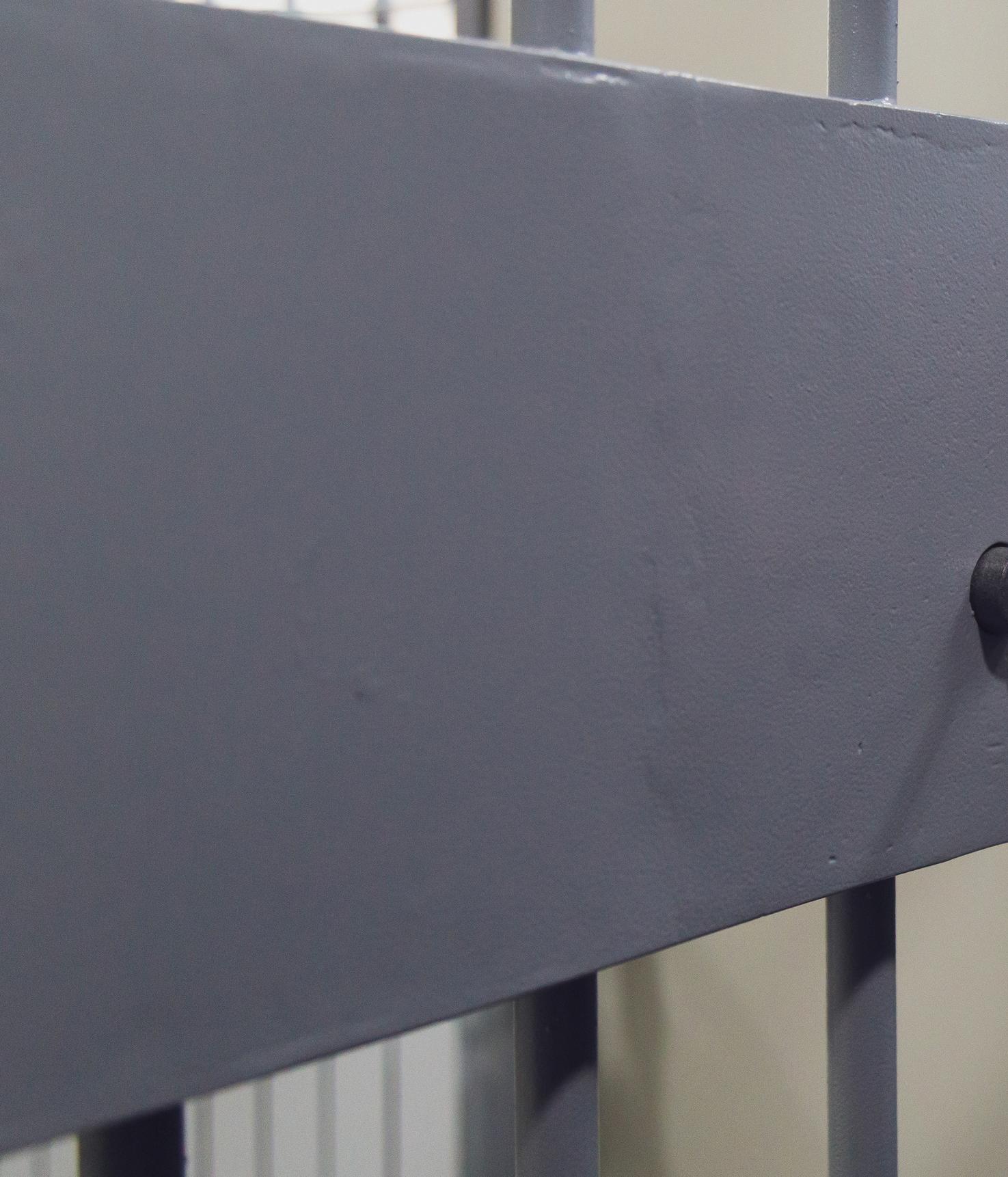

Joseph Rainey, a 20-year-old from west Belfast, attempted to take his own life just hours after being received in Hydebank Wood Young Offenders Centre in 2013. He died in hospital 10 days later. In February 2020, a 10-day inquest into the circumstances around his death delivered findings of six institutional failures on transfer to and reception prison; three institutional failures in the healthcare interview on his arrival; and six
institutional failures in relation to a lack of care and failure to implement previous recommendations.
In addition, the findings included systemic failures in staff training, suicide awareness, essential documentation, and the observation of prisoners at risk.
The film, which Murray says takes a “warts and all” approach, opens with a scene on 7 April 2013, where an actor playing Joseph can be seen breaking into a shop in Belfast city centre and subsequently being apprehended by police, visibly displaying the anguish that would have come with the realisation that he would face prison for a fourth time in his young life.
What follows is a re-enactment of Joseph’s
agenda issues issues agenda 30
Institutional and systemic failures which contributed to the death in custody of 20-year-old Joseph Rainey are part of a short film by acclaimed director Seán Murray aimed at highlighting the need for cultural change in the Prison Service.
committal to prison and a harrowing insight into Joseph’s final actions and, most poignantly, missed opportunities for intervention by those responsible for his care.
At the time of his arrest, Joseph’s admission that he suffered from depression and felt suicidal was recorded at Musgrave custody suite and he was deemed not fit for interview until two days later. Following his appearance at Laganside Court, he was sent to Hydebank where documents from the police station confirming Joseph was suicidal were not read. Instead, a reception officer, with no training in suicide awareness, later said he relied on his own observation of new committals, rather than relevant documentation.
When entering the committal landing, the documents were not read again during the committal interview, nor where they passed to healthcare staff, as should have been the case. A nurse initiated a supporting prisoners at risk (SPAR) document when Joseph reported: “Actually I might kill myself with my bed sheets. Despite the Prison Service’s suicide and self-harm prevention policy dictating that a SPaR initiator should remain on duty until a ‘keep safe’ interview was completed, the nurse left the prison and the interview was carried out by an officer with no previous knowledge of the prisoner.
This interview subsequently lasted approximately 70 seconds and less than one hour later, Joseph asked for the Samaritan’s phone number and to be able to make a call, which, after a delay in access, took place and lasted around nine minutes. Shortly afterwards, Joseph is observed writing a letter at a desk in his cell, which would transpire to be his suicide note.
Within three-and-a-half hours, Joseph was found hanging in his cell, having used his bedsheets.
In February 2015, an investigation report by the Police Ombudsman into the circumstances surrounding the death of Joseph identified 15 matters requiring improvement, the majority of which related to poor communication. However, it was highlighted that five of the 14 recommendations had been made and
accepted previously by the Northern Ireland Prison Service and the South Eastern Health and Social Care Trust, dating back as early as 2008.
At the time the Ombudsman said: “Repeated failure to implement recommendations that have previously been accepted is a matter of concern.”
Worryingly, a similar finding was concluded by the jury in the 2020 inquest into Joseph’s death, advocated for by his family. The jury found that errors or omissions by both the Prison Service and the health trust contributed to Joseph’s death and concluded that recommendations and issues of concern previously raised by the Prison Ombudsman were not actioned by the prison service.
Speaking in My Name is Joseph, Brenda Campbell KC, who represented the family, said a cultural change is required.
“There needs to an appreciation that young people, when they first come into custody are in crisis for one reason or another. They are at their most vulnerable at that moment in time and there has to be a cultural change within prisons broadly, to appreciate that at that point, there is a duty to keep young people safe.”



Discussing the origins of the film, director Seán Murray, says that he hopes the film will not only shine a spotlight on the failings which occurred, but also act as a physical lobbying tool for families demanding change.
Murray, the director of Unquiet Graves, the feature-length documentary investigating the role the British Government played in the Glenanne gang’s murder of over 120 civilians in counties Armagh and Tyrone from July 1972 to 1978, works closely with human rights groups, lawyers, and academics, seeking to “expand marginalised voices”.
He says that as well as serving as a powerful advocate to Joseph’s family, he hoped the film would serve to raise international awareness around the issue.
Following its screening at the Kerry International Film Festival, in My Name is Joseph has also been submitted to the Dublin International Film Festival, as well
as film festivals in the likes of France, Finland, Germany and Canada.
“Professor Phil Scraton described the inquest outcome to me as, in his eyes, the most damning verdict for a single case that has ever been seen on record in the North. The magnitude to that is unbelievable,” states Murray.
Murray comes from an academic background, and says that the decision to create a short film was driven by the desire to see the issues within the prison system, particularly for young people, brought to a wider audience.
“I understand that the length of time it takes to investigate and report on these issues is often years in some cases, and often the audience for these findings are within academic, government, or legal circles. A wider audience never sees the case details unless you have a good journalist that can shake these things out, and for me, the medium of documentary brings these issues to a wider audience.”
In the opening scenes of the film, the audience’s first encounter of the case is a
issues agenda 31 agenda issues
4
Director, Seán Murray.
hooded Joseph, armed with a crowbar, committing a crime. It is a scene that jars somewhat with the vulnerable young man seen entering prison and reaching out for help, and the person described by his parents as “a real good kid”, who “fell in with the wrong crowd”.
On his decision to open the film in this way, Murray says: “It had to be warts and all. As a filmmaker, you have to adhere to the truth. Joseph tried to break into a shop. The thing is, we stigmatise young people, we label them and there is little empathy for their situation. This film deconstructs that, because it is clear that a lot of these young people are stuck in a cycle. We are quick to blame individuals, but there is a social problem.
Since Joseph’s death, 39 deaths have been recorded in Northern Ireland’s prisons. Inquests have not been held on a number of these deaths in custody, but of those which have, five including Joseph’s have been confirmed as suicide by the coroner from 19 April 2013 to 30 September 2022.
Of those five deaths recorded by the coroner as suicide, two took place within 14 days of committal. For context of the scale of mental health challenges within the prison system, since Joseph’s death, 2,719 individuals have self-harmed in Northern Ireland’s prisons up to 30 September 2022.



Murray describes the failures depicted in My Name is Joseph as “culturally and institutionally, a damning indictment of the prison service”.
On the film’s ability to drive change, Murray concludes: “The film’s appearance at international film festivals will hopefully garner support for the families and raise awareness of the issues that need addressed. However, it also serves as a physical lobbying tool for families. There is an opportunity here to ask those authorities with responsibility for 12 minutes of their time.
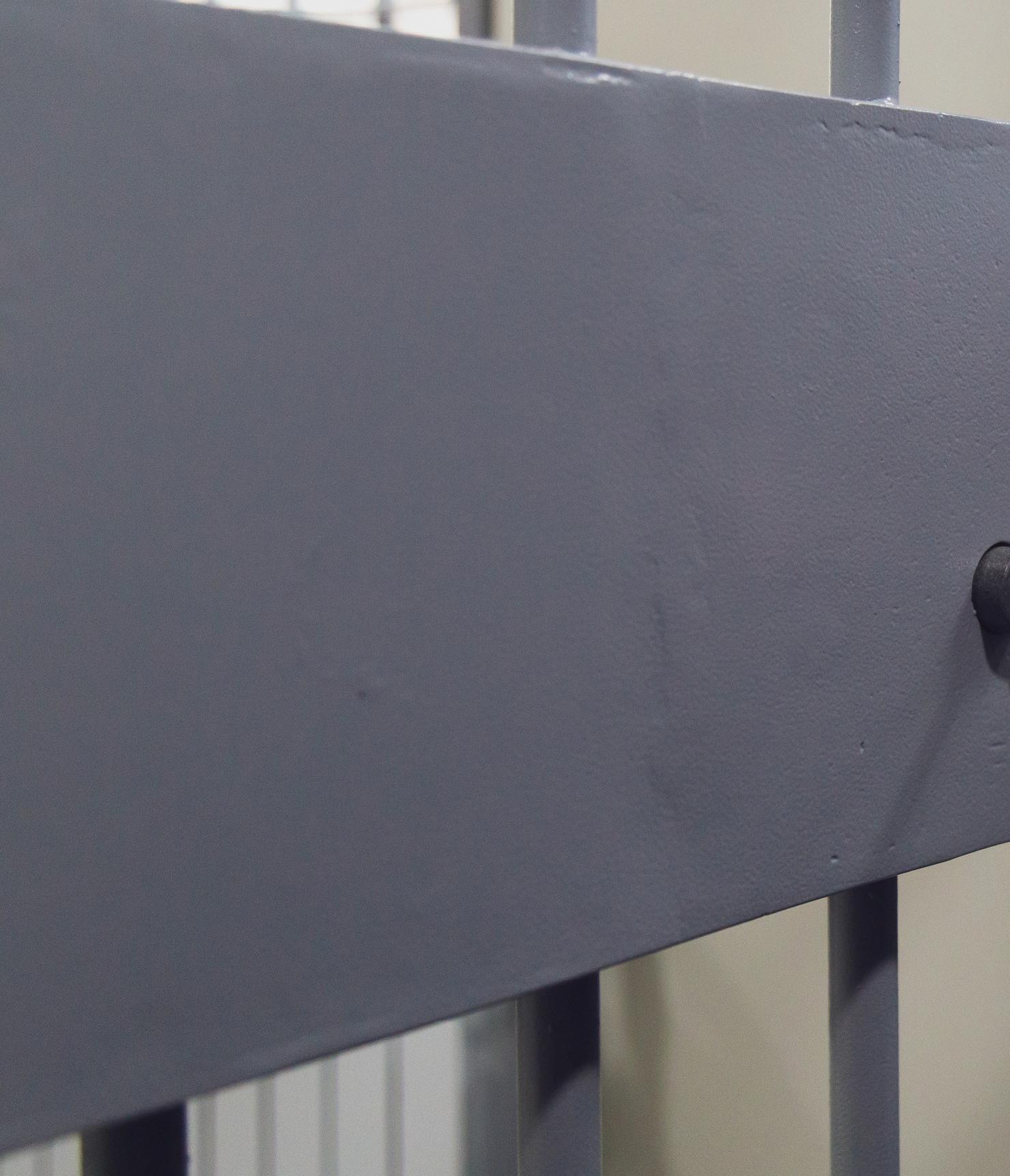
“I do not think anyone could watch My Name is Joseph and not sympathise with the families and make a decision that something can be done that might change the culture.”
A spokesperson for the Northern Ireland Prison Service said: “Every death in custody is a tragedy and that is particularly the case when it involves a young person, as was the case with Joseph Rainey. While it will be little comfort to his family, since his death nine years ago, no other prisoner has died in custody at Hydebank Wood and incidents of self-harm have reduced.”
Highlighting that Hydebank has undergone a transition to a “secure college which focuses on rehabilitating the young men in our care through learning and skills”, the Prison Service says improvements since 2013 include:
• a Joint Suicide and Self-Harm Risk Management Strategy and a Joint Management of Substance Misuse in Custody Strategy between the Prison Service and the South Eastern Trust;
• a new person-centred approach to Supporting Prisoners at Risk procedures (SPaR)
• the establishment of wellbeing hubs in each of Northern Ireland’s prisons; and
• an increase in Trust staff resources in their mental health teams and a dedicated team is in place in each establishment including a mental health assessment for everyone committed to prison.
The spokesperson concluded: “The Northern Ireland Prison Service is never complacent when it comes to the safety of people in our care and it will continue to review its processes and procedures while working closely with healthcare colleagues in the response to people who self-harm.”
agenda issues issues agenda 32
Joseph Rainey
Fujitsu: Trusted partner for the education and learning sector
account using a keyring barcode, at any Libraries NI location. This is ideal for users with limited knowledge of technology or those with limited access to technology at home,” says Curry.
As a result of self-service systems, staff have more time to engage with visitors on the ground. Customer analytics also helps Libraries NI to divert resources to where they are most effective and provide best value.
Fujitsu will also deliver digital skills volunteer support sessions and career development workshops to local community groups as part of the contract. This illustrates the company’s commitment to promoting equality, tackling poverty and social exclusion as a responsible business.
When digital transformation company Fujitsu became a trusted partner for Libraries NI in 2013, they were challenged to deliver the next phase of innovative IT services that would not only support the organisation and its network of 98 libraries, but also create a seamless service transition for its users and stakeholders.
Having secured a new seven-year partnership with Libraries NI, Fujitsu is building on the long-standing relationship which saw the organisations successfully replace and manage the entire ICT infrastructure in every public library across Northern Ireland.

The partnership is key to the success of Libraries NI’s mission critical e3 project to ensure the organisation has the necessary technology platforms and services to support the delivery of a diverse range of library services. As well as managed IT services, Fujitsu provides extensive technological and industry knowledge to align with the Authority’s in-depth understanding of their business. The provision of selfservice book lending facilities and printing solutions, relevant business intelligence systems to inform decision making and the creation of an effective platform for modern ‘virtual library’ services are just some of the initiatives which have been successfully established.
Desi Curry, Head of ICU and ICT for Libraries NI explains that the benefits of the investment go beyond creating a
technology infrastructure which has helped to modernise Libraries NI’s external services and internal corporate systems, it has also been an opportunity for staff to get to know their library user.
“By using the library management system and Fujitsu’s specially designed analytics solution, staff can determine which books or learning resources are in high demand and how customers are using the broad spectrum of services. This creates a holistic picture of our customers’ requirements,” says Curry.
Fujitsu’s mission to create innovative, accessible, and integrated technology solutions is evident through the specialist platforms it creates with industry leading partners. Curry explains that the overarching solution designed by Fujitsu provides services to users which are intuitive and easy to use, despite the complex underlying architecture which incorporates a diverse range of solution components.
“The self-service kiosks use infrared technology which allows library users to scan, log or return books onto their
Speaking about the role of libraries in our communities, Jim O’Hagan, Chief Executive of Libraries NI says developing tech-infrastructure creates further learning opportunities. He adds: “Libraries are a valued and trusted resource at the heart of communities and we are pleased to award this new contract to Fujitsu which as well as enhancing IT infrastructure, our partnership with Fujitsu will deliver a range of social inclusion initiatives including digital skills and career development workshops.
“Recently, thousands of students, groups, young people, and adults visited their local library as part of Book Week NI, a fantastic initiative delivered by Libraries NI in partnership with BBC Northern Ireland that encourages everyone to visit their local library to engage with literature and reading. We will continue to advance our technology platforms which help us remain at the cutting edge of library services, providing opportunities for people to learn and to connect.”
W: www.fujitsu.com
Moira Barratt, Fujitsu Delivery Executive; Jim O’Hagan, Chief Executive of Libraries NI; and David Clements, Client Director Fujitsu NI are pictured signing a new contract to deliver modern and innovative IT services to Libraries NI.
European gas market trends and outlook

Dubreuil believes that the advancement of the European gas market crisis into a global crisis is underpinned by dual causes. The first is that gas has now become a major component in electricity supply. The second is the globalisation of liquified natural gas, meaning that most importers are now consuming from the same pool. Therefore, what happens in Europe has much wider consequences.

Gas prices in Europe are now historically high. In August 2022, there was a 100-fold increase on the lowest prices during the pandemic just over two years before. A better contextual measure is a 10-fold increase since the beginning of summer 2021.
As Dubreuil explains, this price crisis goes beyond Europe. Although lower, Asian prices have been tracking behind Europe. Where previously Asia’s lack of alternative supply to LNG made it a premium-paying market, it is now Europe paying the premium price to get LNG to its market and consumers. Similarly, despite the US

agenda issues issues
34
Demand destruction and fuel switching means the accelerated phase-out of Russian gas does not necessarily entail higher gas imports over the medium term, explains Jean-Baptiste
Dubreuil, senior analyst at the International Energy Agency (IEA).
agenda
being largely self-sufficient and actually exporting natural gas throughout the world, prices have doubled in the past 15 months.
Dubreuil explains that the physical impact of these trends is not only rising energy bills for consumers but also on consumption itself, describing evidence of “fuel switching and demand destruction” at play in different markets throughout the world.
“Demand is switching,” he explains, “Natural gas was heralded as an enabler of change and a move away from carbon intensive sources of energy but our calculations show stark increases in oil burning and coal generation for this coming winter. Tight gas supply and high prices have triggered fuel switching and demand destruction across all major gas-importing markets.”
Transitioning away from Russian supply, in eight months of 2022, Europe’s LNG imports rose by 65 per cent, triggering a wholesale realignment of LNG trade flows around the world. Global LNG supply rose by around 6 per cent this year but the strong increase in European purchase of LNG has come at a cost to other markets, particularly Asian buyers and specifically Chinese buyers.
One example of the impact of an increase of global demand on a finite pool of LNG supply can be observed in that Japan has announced it is to restore 17 nuclear reactors to operation.
Dubreuil explains that while large demand will see a tightness in the LNG market this winter, the longer-term impact of that tightness is a fall in demand. “The reconfiguration of global LNG trade flows means that Asia Pacific demand increase will be capped by tensions on access to supply,” he says. Meanwhile, European gas consumption is projected to plunge below its 2020 (Covid-19) demand.
“Current market tensions and medium-term uncertainty result in a 60 per cent cut in our projected of average growth in gas demand to 2024, compared to our previous outlook,” he adds. Reopening of economies post-Covid 19 lockdowns

saw a 4.5 per cent increase in gas demand consumption globally. However, in 2022, a contraction of around 1 per cent is taking place, mostly in Europe. Price is a major factor but so too are temperature-related challenges.
Dubreuil explains that global LNG trade is expected to grow at an average annual rate of 4 per cent to 2025, led by European demand and North American supply. At the same time, global natural gas demand grows at an average of 0.8 per cent per year through 2025, a marked slowdown on previous forecasts.
Highlighting that growth of production of natural gas is largely limited to North America and the Middle East, combined with the tight LNG market, he says that economies face not only a challenge in procuring energy this winter and beyond but also around being on track to ensure consistency with their decarbonisation targets.
Beyond the challenges of this coming winter, Dubreuil believes the European Union and its member states have taken strong steps towards independence from fossil fuels, particularly those of Russia.
Pointing to diversification of supply, the development of domestically grown gas sources such as biomethane and hydrogen, and demandside aspects such as higher energy efficiency and enhanced levels of renewables, he says: “We estimate that by 2025, if those measures are implemented, we are on the way to completely get rid of Russian gas dependence or equivalent by 2027.
“Facts may prove us wrong in that it is not only a demand question but also a supply question, and that supply may run out before 2027, but the EU and its members have acted strongly to make sure the market is more resilient, diversified and still on its way to total decarbonisation to 2050.”
issues
35 agenda issues
agenda
“Tight gas supply and high prices have triggered fuel switching and demand destruction across all major gas-importing markets.”
conference report
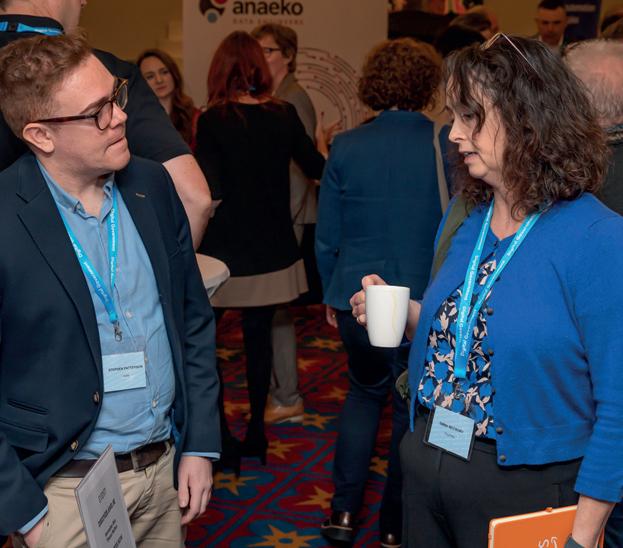
Digital Government Conference
The annual Digital Government Conference took place in October 2022. The event brought together key stakeholders and delgates gained an insight into the government’s objectives for digital transformation and heard directly from those responsible for driving this forward. Expert speakers included Ignatius O’Doherty, NICS Enterprise Shared Services; Gillian Armstrong, Amazon Web Services; Dan West, Department of Health; and Martyn Wallace, Scottish Local Government.

A massive thank you to our conference sponsors AWS, Expleo and Capventis, our conference exhibitors and to all speakers and delegates who joined us at Titanic Belfast and made the 2022 Digital Government Belfast Conference a huge success.


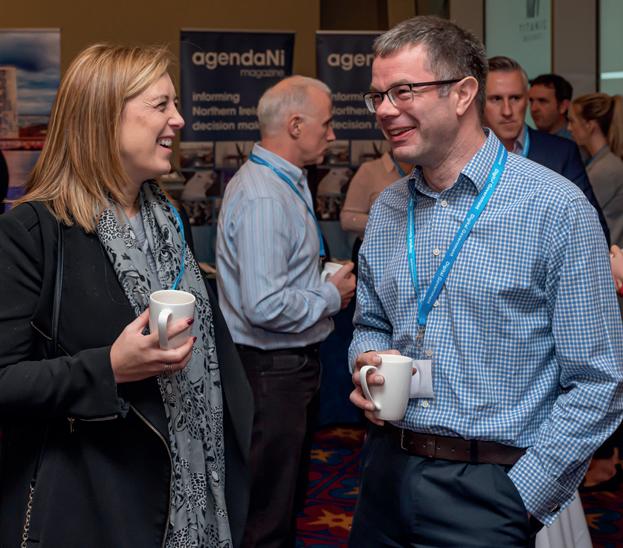


 Stephen Dallas, The Bytes Project; Joan Condell, Ulster University; Bill McCluggage, Laganview Associates; Clare Costello, Translink; and Andrew Bruce, Expleo.
Ignatius O’Doherty, NICS Enterprise Shared Services opens the conference.
Tanya Otterson and Ian Boylan, Invest NI.
Exhibition area at the 2022 Digital Government Belfast Conference.
Speaker John Glennane from Capventis addressing the 2022 Digital Government delegates.
Stephen Dallas, The Bytes Project; Joan Condell, Ulster University; Bill McCluggage, Laganview Associates; Clare Costello, Translink; and Andrew Bruce, Expleo.
Ignatius O’Doherty, NICS Enterprise Shared Services opens the conference.
Tanya Otterson and Ian Boylan, Invest NI.
Exhibition area at the 2022 Digital Government Belfast Conference.
Speaker John Glennane from Capventis addressing the 2022 Digital Government delegates.
36
Andrea Montgomery and Neil Sinclair from Pytilla LTD.
Stephen Patterson, AWS with Emma McCrory, Fujitsu.
Environment, waste, and water report





Digital Events Print
Environment, waste, and water report


Work in progress: Edwin Poots MLA
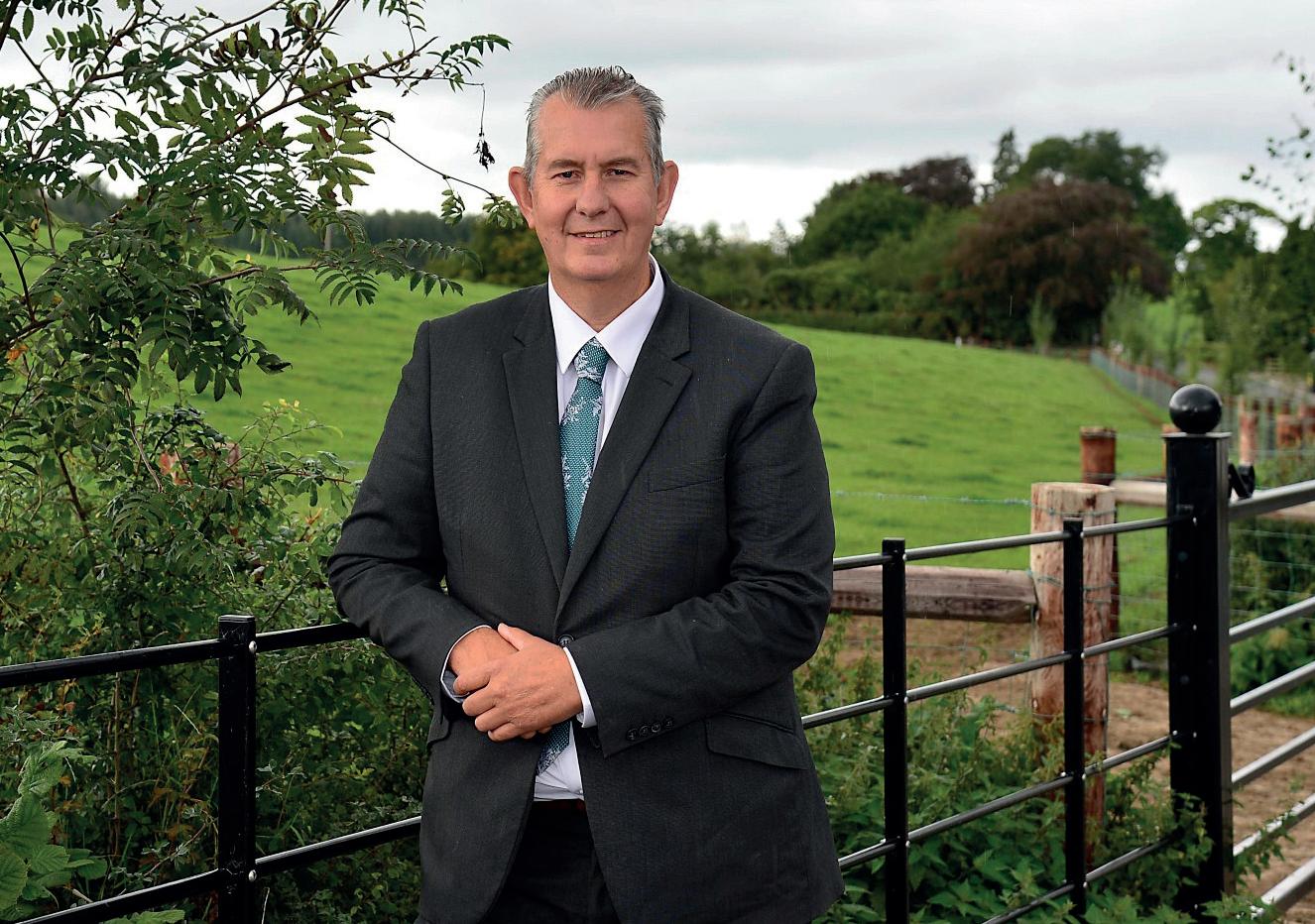
Just days before leaving post, former Environment Minister, Edwin Poots MLA, outlined recent progress on environmental policy including the development of Northern Ireland’s first climate action plan, the delivery of a circular economy and the implications of The Retained EU Law (Revocation and Reform) Bill.
The draft environment strategy outlined six detailed strategic environment outcomes. What progress has been made on these outcomes to date and what are the most pressing challenges?
The Northern Ireland Environment Strategy will be one of the main strategies underpinning the Northern Ireland Executive’s green growth agenda and will provide the focus for protecting and enhancing our natural environment for the coming decades. It aims to be ambitious, inspiring, targeted, and most importantly, challenge us to put the environment at the heart of what we do across government.
I approved the finalised Environment Strategy on 23 March 2022, and it is intended that this will be designated as Northern Ireland’s first ‘environmental
improvement plan’ (EIP) by July 2023 (the Environment Act 2021 requires Northern Ireland to adopt an EIP by this date). Improvements in our natural environment will be measured against the targets set out in the EIP, with regular reporting to the Office for Environmental Protection (OEP). My department has established a coordination team to report on progress against the EIP to the OEP. This process will commence once the EIP has been formally adopted. In the interim, work will continue on a wide range of actions to deliver the six strategic environmental outcomes.
The Climate Change (Northern Ireland) Act 2022 will have a huge impact on every section of our society and will have profound effects on every aspect of our lives; from where we build accommodation, the type of accommodation we build, the materials we use, the transport system we
develop, how we work, the food we eat, and the fuel we use. Meeting the targets in the Act will help us to protect the environment and our health whilst also contributing to a green recovery. In addition to setting the 2050 net zero target for Northern Ireland, the Act requires the setting of carbon budgets to limit emissions across five-year periods and the production of climate action plans to set out how we will meet the emission limits set out in carbon budgets as well as the longer-term emission reduction targets. Work is already underway in terms of the development of Northern Ireland’s first climate action plan, which has to be published before the end of 2023 and this plan will contain policies and proposals from all departments.
In terms of adaptation, my department coordinates the development of the Northern Ireland Climate Change Adaptation Programme (NICCAP) on
38
Former Minister for the Department of Agriculture, Environment and Rural Affairs, Edwin Poots MLA.
behalf of all Northern Ireland departments to fulfil the requirements of the UK Climate Change Act 2008. The current adaptation programme runs to September 2024 and is currently undergoing a mid-term progress review through which an assessment of the progress of delivery of actions to deliver climate change adaptation across departments and councils has been undertaken. That review should be published later in 2022.
To build upon the progress review, my department has also commissioned the UK Climate Change Committee (CCC), as the independent statutory advisor to government on matters relating to climate change, to undertake an independent assessment of the programme and to make recommendations for the next programme. I expect that independent assessment to be available in spring 2023. I believe that this independent assessment by the CCC will help put us in a better position in relation to climate adaptation and provide assurances on the approach taken in the subsequent adaptation programme. Additionally, the Climate Change Act (Northern Ireland) 2022 requires that the Climate Action Plan incorporates climate resilience. This should help to ensure that climate mitigation and climate adaptation are more closely aligned as many projects such as afforestation, peatland restoration, and even building design can deliver dual benefits.
The strategy also detailed the intention to publish a range of forthcoming strategies, not least a waste strategy and an air quality strategy. Can you outline how these are being progressed and whether their intended impact will be affected by delays in progress, in the absence of an Executive?
In June 2022, the Northern Ireland Waste Strategy closure report was published, setting out the formal closure of the Northern Ireland Waste Management Strategy 2013. I have committed to publishing a new Northern Ireland Waste Management Strategy by 2023, which will set the policy direction for the future management of waste in Northern Ireland for the next six years. A public consultation on the draft Strategy is planned for the second quarter of 2023.
My department continues to progress the development of Northern Ireland’s first Clean Air Strategy, publishing the synopsis of consultation responses to the Clean Air Strategy Discussion Document in June 2022 with comments received informing the basis of the actions proposed in the strategy. A cross-departmental stakeholder group, the Clean Air Strategy Inter Departmental Steering Group, has now been established and comprises officials from several key government departments. Other departments may need to be involved depending on the final agreed scope of the strategy. The group will meet regularly over the coming months to agree the Clean Air Strategy actions and draft the final strategy in advance of public consultation.
Will levels of fuel poverty and global concerns around security of energy supply in the time ahead have an impact on Northern Ireland’s ambitions for environmental improvements and the slowing of climate change?
My department has been leading on the development of the Green Growth Strategy on behalf on the Northern Ireland Executive. This multi-decade strategy sets our long-term vision for tackling the climate challenge by

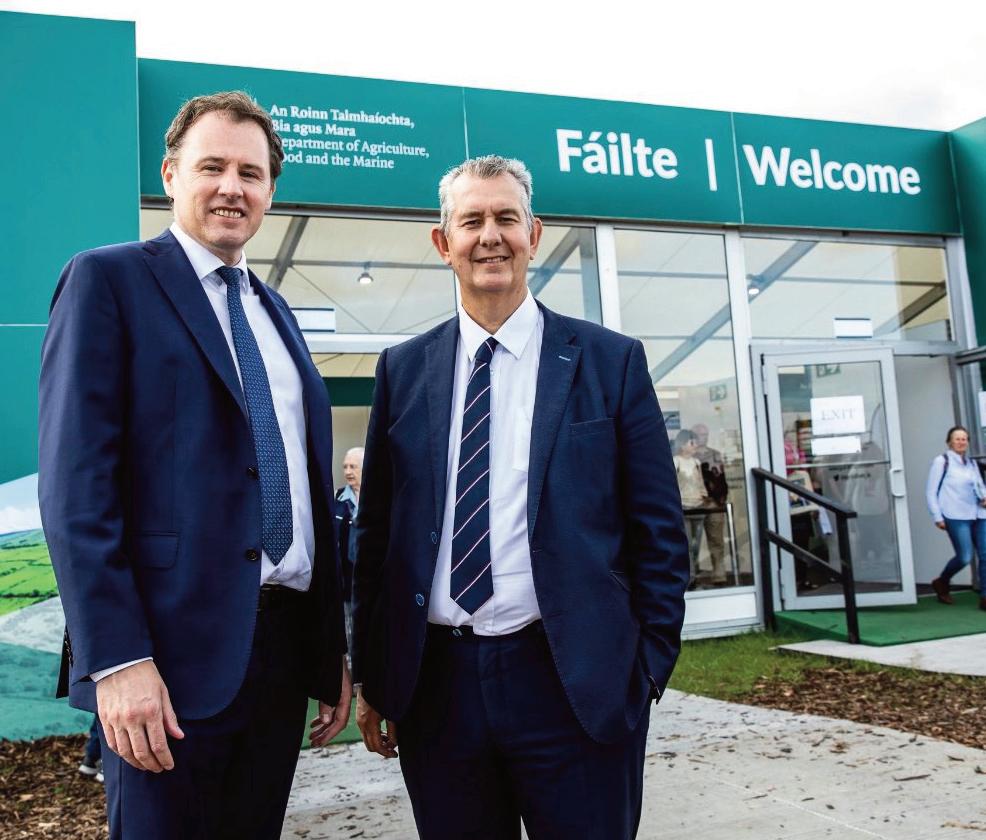
balancing climate action with the environment and the economy in a way that benefits all our people. It aims to ensure future government policy-making has climate and environment action at its core.
In December 2021, the Department for the Economy published the Northern Ireland Energy Strategy, Path to Net Zero Energy in which it outlined its intention to replace fossil fuels with renewable energy. Three of the many policy objectives set out in this strategy include phasing out fossil fuel home heating oil, phasing out coal and certain solid fuels for home heating, and introducing support for low carbon heat technologies including heat pumps. The future energy solution will be a mix of fuels and technologies including hydrogen, eFuels, geothermal, onshore and offshore wind, solar, and biomethane produced as a result of our agricultural practices. All of these solutions will contribute to our security of supply and stop Northern Irish consumers being a price taker of fossil fuels.
In this context, any policy on phasing out coal and certain solid fuels would include consulting on plans for financial support for groups where these fuels are the primary source of heat and how any transition is affordable. No date has yet been set for this consultation.
4 39 Environment, waste, and water report
Former Agriculture Minister Edwin Poots MLA (right) pictured with Charlie McConalogue TD, Minister for Agriculture, Food and the Marine at the National Ploughing Championships in Ratheniska, County Laois.
Environment, waste, and water report
My officials will continue to work with colleagues in the Department for the Economy in consideration of the restriction of coal and solid fuels to ensure that issues such as ambient air quality, rural equality, and climate change are fully considered in any proposals or options put forward for consultation.
In February 2022, the Assembly approved the OEP becoming the independent oversight body for Northern Ireland. Can you outline why this decision, rather than a Northern Ireland-specific environmental protection agency, was chosen?
The creation of the Office for Environmental Protection (OEP) was a core provision of the Environment Act 2021. The OEP’s broad role is to provide an environmental oversight role previously undertaken by the European Commission. It is important not to confuse the role of the OEP with that of the Northern Ireland Environment Agency (NIEA), which remains the primary environmental regulator in Northern Ireland. The OEP has no powers to act against individuals or private companies – instead, it focuses its attention on public authorities, including DAERA, to ensure they are complying with their statutory duties to implement environmental law. The Executive supported the extension of the OEP’s jurisdiction to include Northern Ireland and the commencement of the relevant provisions was approved by the

Assembly on 22 February 2022, with the OEP commencing operations here on 28 February. There are clear benefits in having the implementation of Northern Ireland environmental law overseen by a larger organisation with access to much greater resources at significantly lower cost than a bespoke Northern Ireland body would have.

I am also considering the implications of the New Decade, New Approach proposal for the establishment of an independent Environmental Protection Agency to form part of the possible outline of a future Programme for Government. An independent Environmental Protection Agency, in other words a replacement for the NIEA, cannot be created overnight. Consideration needs to be given to appropriate options and these will require robust economic appraisal to determine the best option for Northern Ireland. It is no small task to scope all of the potential impacts, including significant legislative, financial, and human resource issues, which would be necessary before decisions can be made.
My department currently operates an Environmental Farming Scheme (EFS), which made payments of £7 million in the most recent scheme year to farm businesses across Northern Ireland for the purposes of promoting environmentally sustainable farming practices. Since 2018, over 530km of new hedgerows have been planted and 60,000 hectares of priority habitats are under favourable management as a result of the scheme. The first pilot
scheme was the Rural Community Pollinator Scheme which provided funding of £1.5 million to 178 rural groups in 2021/22. The £2.4 million School Pollinator Garden scheme, specifically for schools in urban and rural areas is to improve the health of our bees and pollinators and help protect our eco-systems, currently benefits over 300 schools.
The Retained EU Law (Revocation and Reform) Bill introduced at Westminster would remove the majority of EUderived law, with some campaigners voicing concern that divergence from EU environmental law in Northern Ireland could be detrimental. What is your assessment of concerns that legislating domestically, even to align with current laws, could negatively impact wider policy and legislative work?
The key point is that we have already undertaken an extensive legislative programme to maintain our environmental protections and standards. There has been no reduction of the protections we had while members of the EU. The UK Government has introduced the Retained EU Law Bill to regularise the position of the EU laws we preserved, and we are assessing the impact of that Bill, not just on the environment but on all sectors. The Bill has only just been introduced into Parliament and we will
40
Former Environment Minister Edwin Poots MLA helps with a path rebuilding project at the summit of Slieve Donard following damage caused by wildfires.
be monitoring its passage closely. Many of the laws which are DAERA’s responsibility, including most environmental laws, fall into the category of retained EU law and will be affected by the Bill.
I remain committed to ensuring that Northern Ireland has a clear statutory basis for protecting the environment and human health as has been the case throughout the changes resulting from the UK’s withdrawal from the EU.
You recently identified your priorities of post-Brexit farm support. How big of a role does agriculture have in achieving our environmental ambitions and how can farmers be supported to take on this role?
Last year, I published the Future Agricultural Policy Framework that identified outcomes and a vision for the agricultural industry in Northern Ireland. Following a major consultation at the end of last year, I announced 54 decisions on future agricultural support in the Assembly. Support measures will focus on a number of key themes: recognising the role of active farmers in adopting sustainable production practices, creating the conditions that will provide encouragement for young people coming into the industry, and driving up efficiency levels across the industry. These policy decisions provide a clear direction of travel for future agricultural policy in Northern Ireland. However, there is still significant work to progress which my officials will continue to take forward.
Future policy must allow farmers to have the best possible tools at their disposal. It is vital that we embrace a greater investment in science and technology, encourage innovation, promote the uptake of new knowledge that can deliver the sustained benefits to the industry, its customers and to the citizen. Schemes must help farmers and land managers develop, become more
efficient and maximise the sustainable returns for the assets at their disposal. Environmental assets are central to this.

I launched a new Soil Nutrient Health Scheme (SNHS) in March 2022 that will be delivered over the next four years. The £45 million scheme will provide information on soil nutrient levels and estimates of carbon stocks in above ground biomass. This information will enable farmers to match nutrient applications to crop need, increasing efficiency, reducing excess run-off to watercourses, and improving economic and environmental sustainability.
To date, my department has offered £43 million in grant support under the Farm Business Investment Scheme (FBIS) –capital to help improve the sustainability of farm businesses in Northern Ireland. In September 2022, I also announced the re-opening of Tier 1 FBIS Capital which will build upon the success of the previous tranches of Tier 1, which, to date, has provided £26 million grant support to over 4,000 farmers and growers.
I am encouraged by the work being undertaken by the industry to deliver on a recommendation from the Kendal Report to create a new Sustainability Body for Northern Ireland. This body will work in partnership with my department to fulfil its requirements under the Northern Ireland Climate Change Act 2022 in respect of carbon audits of farms in Northern Ireland with the data being captured, analysed, and used to deliver performance improvement at all levels.
My vision is that the management of the environment becomes a profit centre rather than a cost and managing the environment is another enterprise on the farm. I am determined that Northern Ireland will play its part and that we will have a sustainable agri-food sector; producing high value food products and contributing to a clean, healthy environment that benefits people, nature, and the economy.
A recent report highlighted a 92 per cent circularity gap in Northern Ireland’s economy. Can you outline your vision for transition away from the current linear model?
My officials are working closely with the Department for the Economy on the draft Circular Economy Strategy which will set the vision and ambition for the circular economy in Northern Ireland. A public consultation on the draft Circular Economy Strategy will be launched in due course following a period of preconsultation engagement with all departments, the Cross Departmental Steering Group and Circular Economy Coalition.
I am keen to see our resources moved as far up the waste hierarchy as possible, minimising waste and maintaining and maximising the value of products and materials for as long as possible. The benefits of circularity to the Northern Ireland economy are significant for all people living here, with the creation of green jobs as well as saving our businesses, customers, and suppliers’ money and building supply chain resilience.
Recycling is the preferred option where waste generation cannot be prevented, and re-use has been exhausted or an item has reached the end of its useful life. The adoption of the Circular Economy Package introduced challenging new recycling targets for Northern Ireland with a target of 65 per cent of municipal waste recycled by 2035 as well as a range of measures which are aimed at reducing consumption and reliance on virgin materials. I have always said that we need to go further than this and ensure that Northern Ireland is at the forefront of ambitious recycling rates and the recently enacted Climate Change Act (Northern Ireland) 2022 requires Northern Ireland to achieve a 70 per cent recycling target by 2030.
My department will be considering the infrastructure requirements that will be needed to deliver an impactful circular economy. We will also be supporting new initiatives that will reduce consumption, waste, and pollution and which will support clean and inclusive growth.
41 Environment,
waste, and water report
“There are clear benefits in having the implementation of Northern Ireland environmental law overseen by a larger organisation with access to much greater resources at significantly lower cost than a bespoke Northern Ireland body would have.”
Commingled bins make recycling simple, increase volumes and improve convenience for householders
At Re-Gen we know that people are busy so if councils want to hit the 65 per cent recycling target, they must provide both simplicity and convenience for householders to recycle, writes Managing Director, Joseph Doherty.
Our materials recovery facility (MRF) in Newry uses a combination of highly automated technology and plant operatives to sort materials that householders have placed in commingled bins. It is a straightforward system that lets the waste companies do the heavy lifting. Simplicity and convenience lead to more materials being collected, and ultimately, recycled.
I would encourage councils to get behind the commingled system to make recycling easier for their householders, increase the recycling rate, and let the recycling experts sort the materials. Local authorities need to embrace the sorting excellence that is being achieved in the commingled collection system.
The difficult question is: Are councils happy to make peoples’ lives more inconvenient and place further burdens on householders by making them sort their own recyclables into a number of boxes at the kerbside and risk further confusion on what to put where?
It is clear that councils need to work with well-run, well-
invested MRFs and be sure they write their contracts in a way that maintains a high barrier of entry when considering the quality of MRFs they work with. Investment is only part of the story. A best-in-class sorting facility also needs a good management team that understands the materials.
As the Managing Director of a MRF I admit to being biased, but the only system that gives convenience to the people we encourage to recycle is a fully commingled one. Separating recyclables into lots of different receptacles creates confusion and apathy.
We are in an era where technology is the future. It can do the heavy lifting for us and the recycling industry needs to embrace it. It will allow us to capture more material and value from waste, and gone are the days when material quality is an issue.
In the new world of 65 per cent recycling, we believe data will be king, and the recycling and waste industry is quite immature when it comes to capturing and
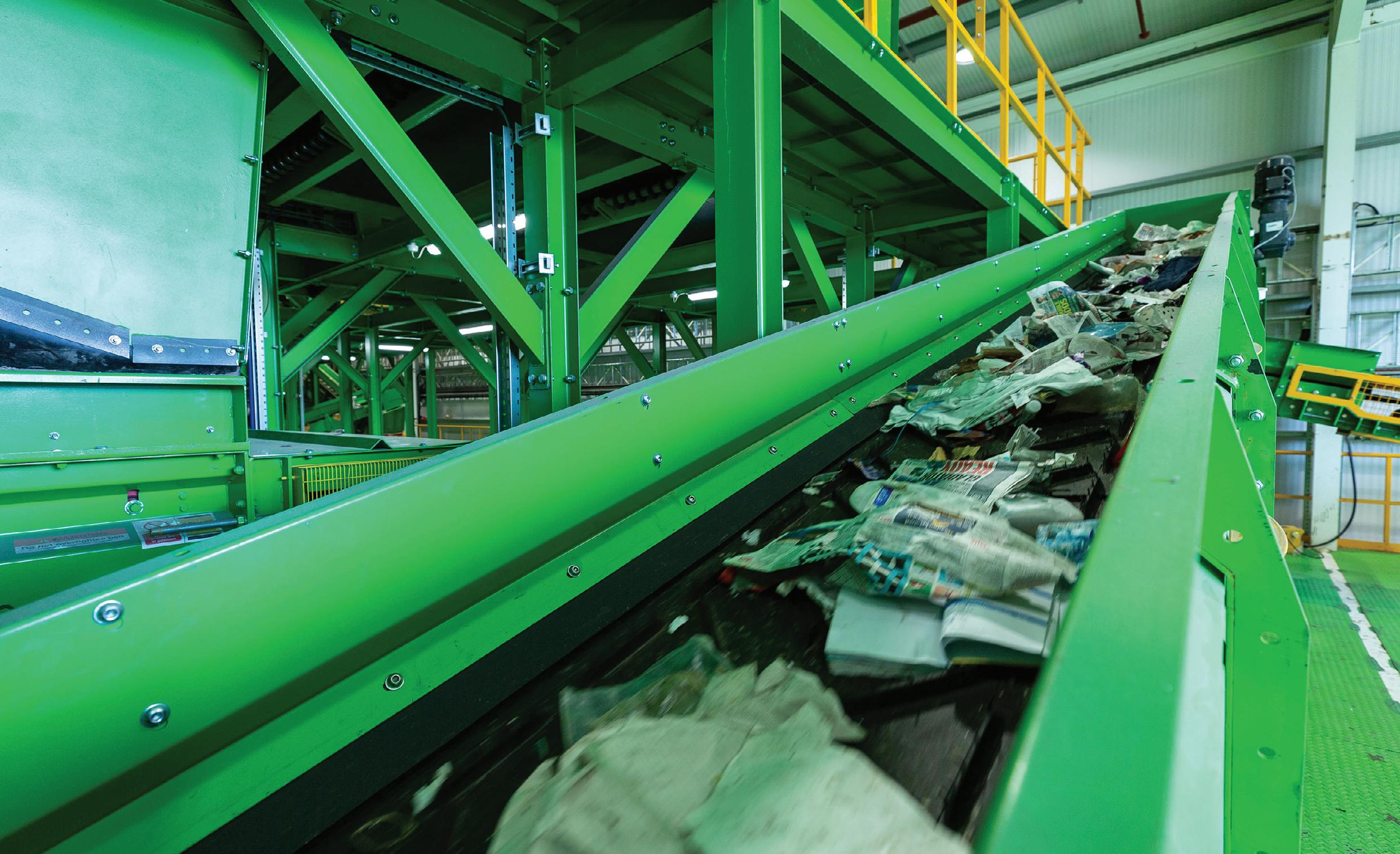
42
Environment, waste, and water report
analysing data. We need to become a technologydriven industry, it will move us on in our mission to make our future cleaner. We need to really understand our waste to ensure that continual improvements can be made to the whole circular system. Modernisation of data capture will be a key change for the industry, and Re-Gen is investing in data capture at several points throughout our MRF. This will provide quality monitoring and information on the breakdown of materials we process.
There are transformational changes coming in with extended producer responsibility (EPR) and deposit return schemes (DRS). As a result, we will need to know exactly what material comes through our plant and whether our MRF has processed DRS leakage material, EPR packaging or non-EPR materials. Visual technology will help us read brands and shapes to capture this information and, soon enough, it will help us to know exactly how many of each type of packaging format by brand has been processed. This data can go back to brands, to help with their corporate social responsibility
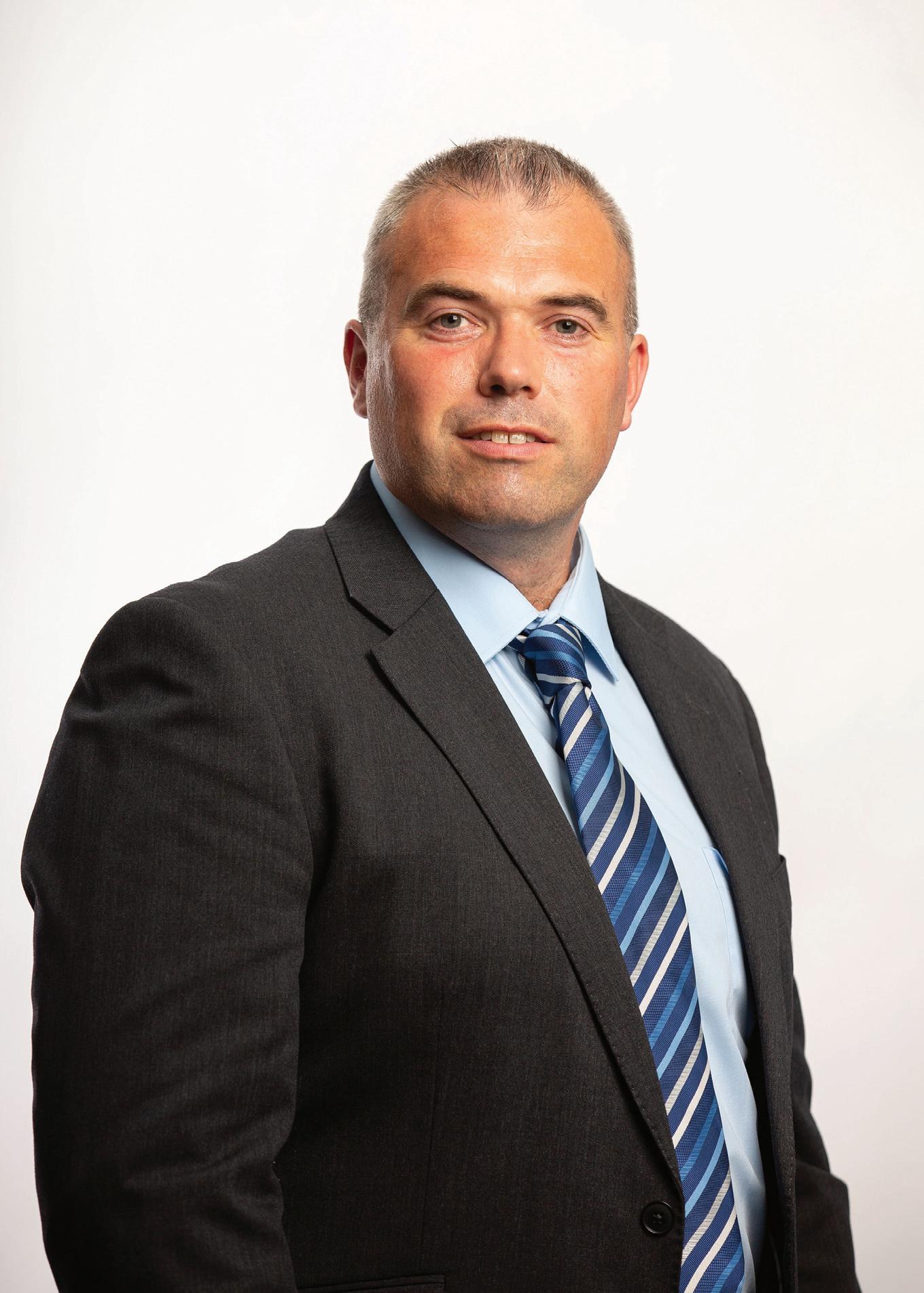
or environmental, social and governance reporting. This will be important because they will want to have the data to prove that their products have been recycled.
Investing in technology also reduces the need for manual pickers. Re-Gen spent more on technology because there were fewer operatives available, but this has made our operation much more efficient. Councils will need to work with MRF operators that are able to often deliver solutions in innovative and inventive ways, alongside teams that are agile and able to respond to the new world of ‘resources’ and not ‘waste’.
To achieve higher recycling rates, we will need to create a system and end markets for the lower-grade recyclable materials that remain in the residual stream, as well as try to move more recyclables from the residual to the recycling stream.
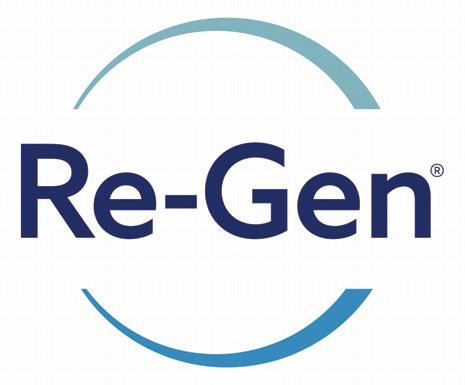
Figures for Northern Ireland from the Department of Agriculture, Environment and Rural Affairs show that, in an area where a commingled bin is operating, there are a lot fewer recyclables in the residual waste, whereas in an area with a kerbside sort, the number of recyclables increases in the residual waste bin. The highest recycling rates in Northern Ireland are with fully commingled systems.
MRFs can get far higher value from the non-recyclable waste in commingled collections. There is greater value in manufacturing good quality solid recovered fuel as a coal replacement in terms of carbon emissions and value for money. This translates to a lower cost for the MRF and the council. There is a falsehood that once material is sorted at the kerbside it is fine and uncontaminated. But we have taken dual stream material, where card and paper are collected separately, and there has been a 15 per cent contamination rate in the paper bin, more than we get with fully commingled collections.
We sell paper that comes in through fully commingled collections to a paper plant in Northern Ireland to make egg cartons. People said it wasn’t possible, but we have done it and continue to do so.
Waste T: 028
5432 W:
Re-Gen
3026
www.regenwaste.com
43 Environment, waste, and water report
Joseph Doherty, Managing Director, Re-Gen.
Environment, waste, and water report Environment strategy: Reducing emissions

In March 2022, former Minister of Agriculture, Environment and Rural Affairs, Edwin Poots MLA, announced to the Northern Ireland Assembly the Environment Strategy, which aims to reduce water pollution, and become the overarching strategy which supports Northern Ireland’s environment.
The strategy exists under the umbrella of the Green Growth Strategy, the stated aim of which is to balance addressing climate change and improving the environment with developing the economy, although the aim is for the Environment Strategy to become the overarching umbrella strategy for environmental policy.
Whilst Northern Ireland’s greenhouse gas emissions have reduced since 1990, the reduction has been at a rate which is only half the UK average, with emissions in the transport and agricultural sectors increasing in the last 30 years.
The Climate Change Act, passed by the Northern Ireland Assembly prior to the election in May 2022, commits Northern Ireland to net zero CO2 emissions by the year 2050, although methane (CH4) emissions only have to be reduced from base levels by 46 per cent by the same year.

The Climate Change Act further commits a Northern Ireland Executive to set transitionary emissions targets for the years 2030 and 2040, something which has not yet been done due to the lack of an Executive.
Introducing the strategy in March 2022, Poots said: “It is envisaged that this Strategy will be adopted as Northern Ireland’s first ‘Environmental Improvement Plan’ which, subject to the approval of the Northern Ireland Assembly, will be a statutory requirement under the future UK Environment Act, setting the Strategy in a legal context and putting in place a statutory requirement to monitor environmental progress against the Strategy on an annual basis.”
44
Ammonia and agriculture
One of six strategic environmental outcomes which the draft document outlines is ensuring that there is an excellent quality of air, water, land, and neighborhoods.
Monitoring stations measuring the air quality were able to generate reliable data demonstrating the level of compliance with existing legislation. Of the three sites that measure PM2.5, all pollutants met the EU Stage 1 (25 μg/m3) and EU Stage 2 (20 μg/m3) limit values.
Whilst there are positive changes in some pollutant levels, the document states that there is still a problem with ammonia, which is mainly due to the prevalence of the agricultural sector in Northern Ireland, meaning that the air quality standards objective previously set out by the department has not been met.
96 per cent of Northern Ireland’s ammonia emissions come from agriculture. From 2010 to 2017 agricultural ammonia emissions increased by 20 per cent, reaching a level equivalent to the peak emissions of the late 1990s.
The report states that the rise has been due to increasing livestock numbers; greater use of indoor housing systems; and insufficient uptake of ammonia reduction measures. “The majority of designated sites are experiencing ammonia concentrations and levels of nitrogen deposition at which damage to plant life may occur.”
As a countermeasure, the draft document outlines the intention of the establishment of a clean air strategy before the end of 2022, although with no Executive, this appears unlikely to happen.
It furthermore proposes improving the infrastructure available to ensure high-quality data gathering and subsequent analysis of both air quality and traffic figures.
In addition, the draft document outlines the intention to create an ammonia strategy which will be integrated with the existing farm business support schemes, although there is no date which has been set as a target for this.
Improving water quality
Only 37 per cent of Northern Ireland’s water bodies are at a good environmental standard, according to the draft document, which adds: “Rivers and lakes are showing deterioration, whilst our coastal and transitional water bodies remain unchanged.”

Only one of Northern Ireland’s 21 freshwater lakes achieved a good environmental standard, in addition to only 31 per cent of the rivers in Northern Ireland.
It further raises the challenge posed by the current state of many freshwater sites due to increasing levels of phosphorus, which is causing 39 per cent of freshwater bodies to fail to reach a good environmental standard.
The solutions to this, according to the document, are centred around the implementation of the Living with Water in Belfast plan, which was published by the Department for Infrastructure in 2021.
In addition to this, the publication of the Water Resource and Supply Resilience Plan, which is due to be completed before the end of 2022, is seen as being of paramount importance, although, as with many schemes which have not yet been published, it faces potential delay due to the lack of a functioning Executive in Northern Ireland.
The strategy is also focused on the publication of conservation management plans and site nutrient action plans.
The strategy sets a target for 2027 of 70 per cent of Northern Ireland’s water bodies being at a good environmental standard as well as achieving the sustainable management and efficient use of natural resources including water and soils, which will work in tandem with an increase in investment in water treatment infrastructure, and the measures which have been outlined in the river basin management plans. 4
Environment, waste, and water report
45
Environment, waste, and water report
Reforming agriculture
The agricultural sector is the main sector which needs to reduce emissions in Northern Ireland, currently contributing 5.5 MtCO2e, as of 2020, which is 26.6 per cent of the overall greenhouse gas emissions in Northern Ireland.

This is compared with respective figures of 9 per cent in England, 15.6 per cent in Wales, and 18.4 per cent in Scotland.
The sector retains a lot of economic influence in Northern Ireland, with an increase in the populations of cattle, pigs, and sheep having been consistently recorded over the last decade.
Consequently former Minister of Agriculture, Environment and Rural Affairs, Edwin Poots MLA, acted to ensure that the initial proposal for net zero methane emissions as demanded in the original Bill which led to the Climate Change Act was reduced to a target of a 46 per cent reduction by 2050.
The document states that there will be a public consultation on any future policy proposals which reform the agricultural sector.
It further states that the future model for agriculture should be: “An industry that: is environmentally sustainable in terms of its impact on, and guardianship of, air and water quality, soil health and biodiversity, while making its fair contribution to achieving net zero carbon targets; pursues increased productivity in international terms as a means of sustained profitability, closing the productivity gap which has been opening up with other major suppliers.”
It further states that the agricultural sector should display “improved resilience to external shocks which are ever more frequent and to which the
industry has become very exposed; and which operates within an integrated, profitable, efficient, sustainable, competitive and responsive supply chain, with clear transmission of market signals and an overriding focus on high quality food and the end consumer”.
Announcing the strategy to the Assembly in March 2022, Edwin Poots MLA outlined a reform in agriculture funding. “There will be progressive capping of the farm sustainability payment above £60,000 per farm business. I have listened to the significant and numerous concerns raised by stakeholders about my proposals for a minimum claim size, and I have decided to set that minimum claim size at five hectares for the farm sustainability payment.”
Enhancing green energy
Under the 2010 Strategic Energy Framework, the Northern Ireland Executive set a target that 40 per cent of electricity consumed in Northern Ireland would come from renewable sources by 2020. For the 12 month period ending 30 June 2021, 45.4 per cent of total electricity consumption in Northern Ireland was generated from renewable sources located here, largely from onshore wind penetration.
This has led to a significant decrease in greenhouse gas emissions from the energy supply sector which has seen a 45 per cent reduction (-2.4 MtCO2e) between 1990 and 2018. While laudable, it should be borne in mind that the energy supply sector still accounts for 15 per cent of all greenhouse emissions in Northern Ireland. The Energy Strategy, published in 2021, commits Northern Ireland to establishing a support scheme for renewable electricity, although it is not yet clear what form his will take.
46
Exporting waste
Northern Ireland’s 11 local council areas exported 260,132 tonnes of municipal waste in 2020/21 for landfill, recycling, and energy recovery to a diverse portfolio of markets ranging from Saudi Arabia to Singapore.
Only four of Northern Ireland’s council areas exported waste outside of Northern Ireland for landfill, meaning that over 97 per cent of exported waste is sent for either recycling or for energy recovery purposes.
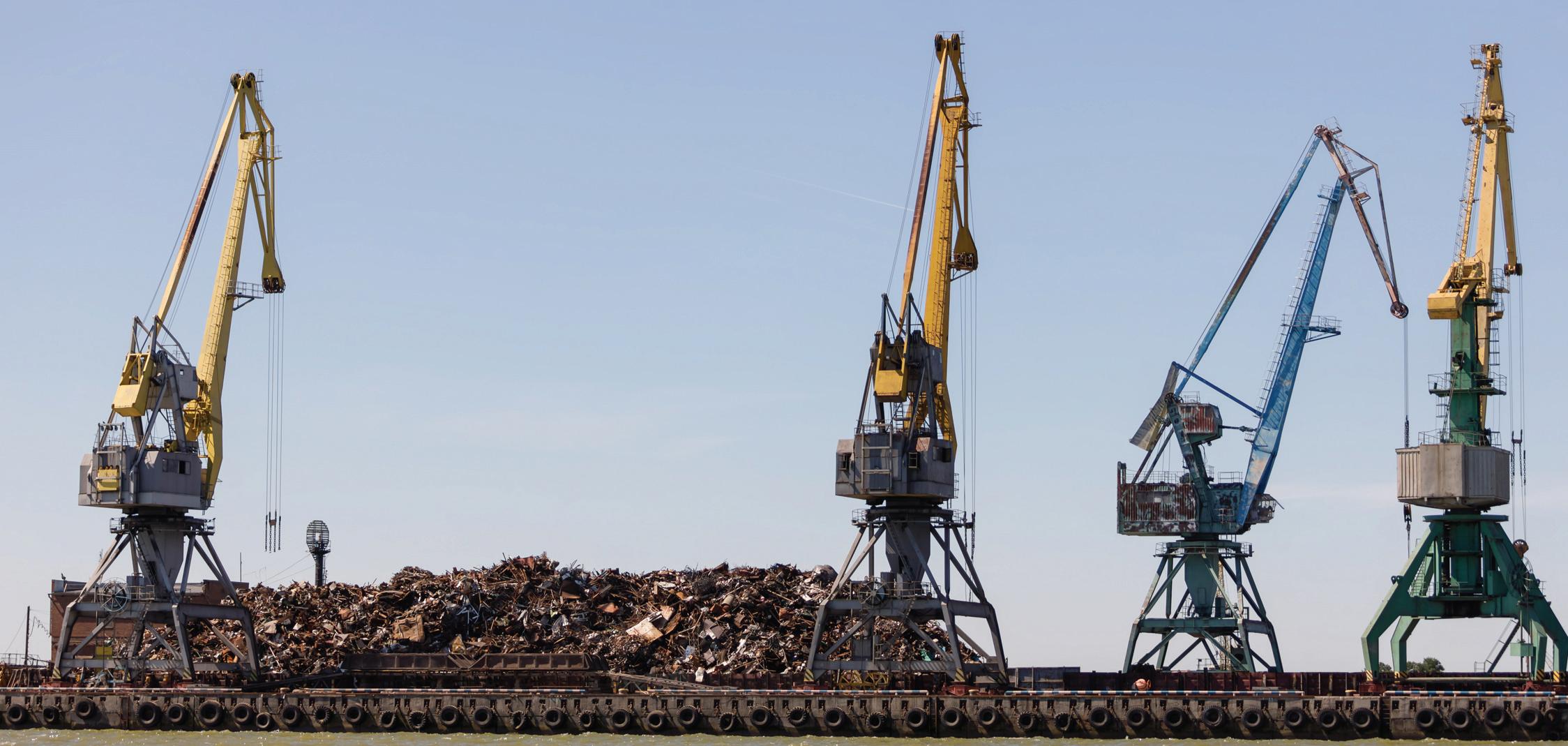
Information released by the Northern Ireland Environment Agency, through freedom of information, reveals the extent of exportation of municipal waste collected in Northern Ireland in the 2020/21 financial year.
The volume of municipal waste exported by Northern Ireland’s councils varied extensively in the year, ranging from a high of 51,631 tonnes from Newry, Mourne and Down District Council to a low of 7,645 tonnes from Lisburn and Castlereagh City Council.
Great Britain was the only export market for landfill for Northern Ireland’s councils in 2020/21, with only four councils exporting for this purpose. Newry, Mourne and Down District Council was the largest exporter for waste to landfill outside of Northern Ireland with 3,732 tonnes, followed by Mid Ulster District Council (2,555 tonnes), Armagh City, Banbridge and Craigavon Borough Council (833 tonnes) and Causeway Coast and Glens Borough Council (302 tonnes).
The majority of municipal exported waste from Northern Ireland in 2020/21 was for recycling, to a diverse range of countries. Great Britain was in receipt of 27,372 tonnes of municipal waste from Northern Ireland for recycling, compared to 18,089 tonnes to the Republic. However, India (38,110 tonnes) was the largest market for export of waste for recycling, significantly higher than countries like Spain (6,853 tonnes); Belgium (4,408 tonnes); Germany (3,299 tonnes); and the Netherlands (2,637 tonnes).
However, beyond those large export markets, Northern Ireland’s council areas export municipal waste for recycling to countries across the globe. India, Great Britain, and the Republic are the only export markets utilised by all 11 councils, but the likes of Indonesia, Malaysia, Saudi Arabia, Taiwan, Turkey, and Thailand are utilised for exporting waste for recycling by several councils.
Among the unique export markets is China, to which Armagh City, Banbridge and Craigavon Council sent 876 tonnes in 2020/21. Belfast City Council was the only council to export municipal waste to France (75 tonnes), while similarly, Causeway Coast and Glens Borough Council exported 139 tonnes of municipal waste for recycling to Hong Kong in isolation, and Derry City and Strabane (42 tonnes) were the only exporters to Portugal.
Additionally, one tonne was sent to Sweden by Causeway Coast and Glens Borough Council, a combined 80 tonnes were sent to Singapore by three councils, 11 tonnes were sent to Hungary, 153 tonnes were sent to Norway, and 187 tonnes were sent to Vietnam.
Energy recovery
Waste exported from Northern Ireland for energy recovery, including both incineration and gasification, in 2020/21, was mostly sent to the Republic (86,497 tonnes), levels well above those sent to Sweden (22,474 tonnes), Denmark (19,473 tonnes) and Great Britain (10,796) tonnes. Five councils export municipal waste to the USA for energy recovery but only at a volume of 2,752 tonnes. One outlier is the Netherlands, where only Antrim and Newtownabbey Borough Council export, totalling 31 tonnes.
47 Environment, waste, and water report
Newry, Mourne and Down: Protection and prevention
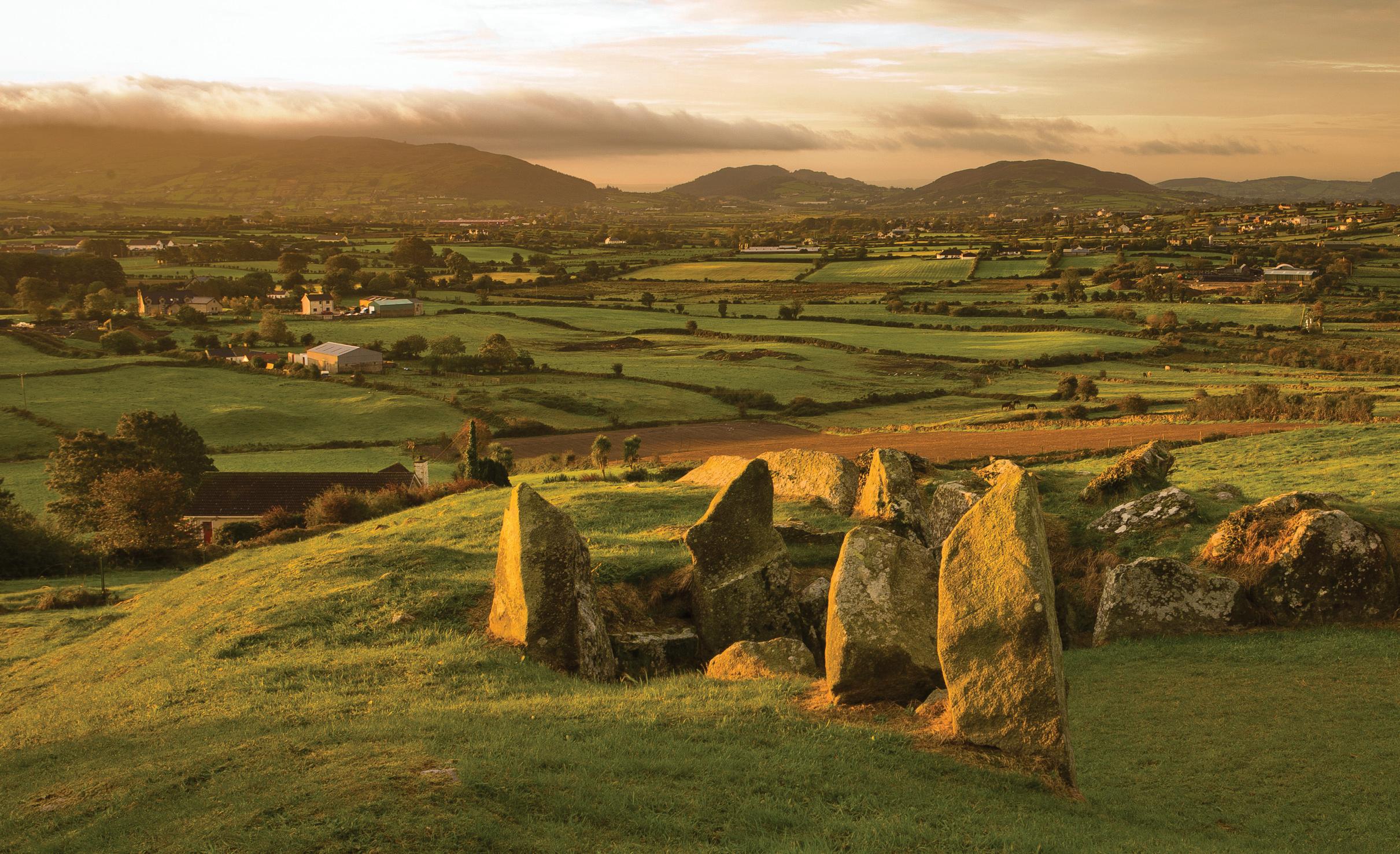
With a strategic location on the Dublin-Belfast Economic Corridor, Newry, Mourne and Down District Council is busy preparing for once-in-a generation investment activity. The Belfast Region City Deal, together with complementary fund investment, will see almost £200 million injected into the area, which is positioning itself as one of the best places to live, work and visit. Part of Newry, Mourne and Down’s appeal is, of course, its geographical location, its 1,634 square kilometres bordered by a 150 kilometre coastline, and all overlooked by three Areas of Outstanding Natural Beauty: the Mournes, Ring of Gullion, and Strangford and Lecale.
Protecting the district’s stunning natural and built resources is its privilege as well as a challenge. One of the Council’s main corporate objectives is to “enhance, protect and promote our environment” and ultimately ensure residents benefit from a “clean, quality and sustainable environment”.
Whether working on innovative sustainability projects, or encouraging residents to meet ambitious recycling targets, the overarching onus is climate action and environmental protection.
Having declared a ‘climate emergency’ back in October 2019, Newry, Mourne and Down District Council has been working to help both the Council and the community reduce their carbon footprint through a number of practical measures. Its 10-year Active Travel Masterplan, for example, has been accompanied by on-
the-ground initiatives promoting cycling in schools, cycle programmes for employees and even bike maintenance workshops in the community.
Alongside active travel, the Council recognises the important role that electric vehicles will play and is a member of a Northern Ireland consortium which recently secured funding to install electric vehicle charge points. It is also a partner in a cross-border project funded by the Shared Island Fund, examining options to develop low and zero carbon solutions for larger council vehicles.
An innovative approach to tackling climate change is to use natural capital, resources such as trees, peatland and wetlands to make our local areas more resilient to the impacts of climate change. As part of this work, Newry, Mourne and Down District Council is carrying out rewilding at certain sites across the district, allowing nature to take its course, reducing grass cutting frequency and planting wildflowers and community orchards. Sustainable Food Places is another of its programmes at the heart of the community, with an active Community Growing network sharing best practice and tips on growing your own fruit and vegetables.
And when it comes to their three designated Areas of Outstanding Natural Beauty, the Council has innovative local partnerships that manage these important resources. It was, for example, the Lead Partner for the CANN (Collaborative Action for the Natura Network) Project, a €9 million EU INTERREG VA funded project
A sustainable Newry, Mourne and Down is protecting its natural assets and rethinking waste to meet 2030 recycling targets.
48 Environment, waste, and water report
Ballymacdermot,
Ring of Gullion.
covering Scotland, Northern Ireland and the Republic of Ireland supporting the protection and restoration of protected habitats including peatlands and wetlands.
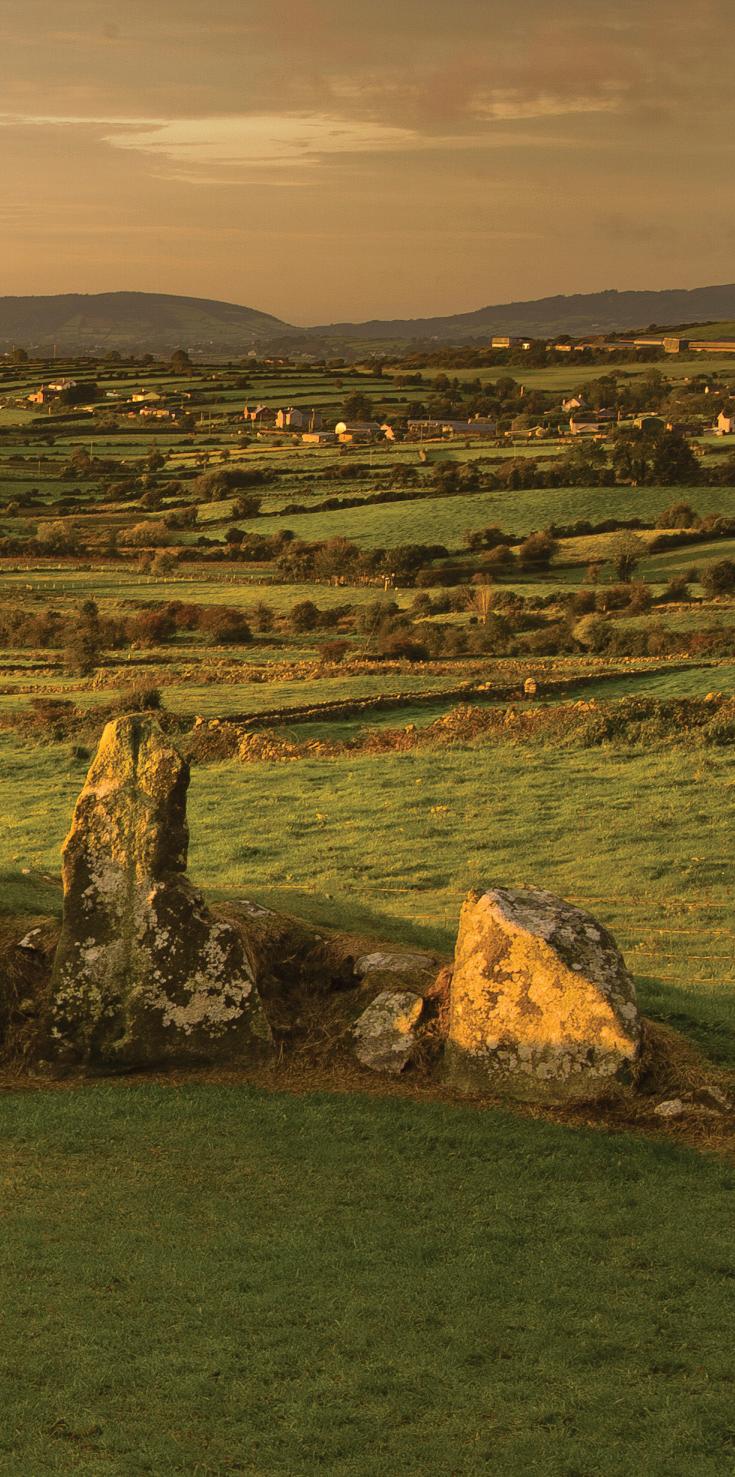
With an increasing sustainability focus to its work, Newry, Mourne and Down District Council recently replaced its Neighbourhood Services directorate with a Sustainability and Environment directorate to incorporate wider environmental issues, as well as the important day-to-day functions of waste management, cleansing and maintenance. Its new director, Andrew Cassells, believes the public is becoming increasingly better informed on these subjects but stresses there is much to do to meet ambitious recycling targets by the end of the decade.
Between 2015 and 2021, Newry, Mourne and Down District Council saw an 85 per cent reduction in the amount of waste sent to landfill (to 2,494 tonnes), the second lowest level of waste sent to landfill across all Northern Ireland councils. Customer satisfaction surveys for the local authority also indicate that recycling is important to 86 per cent of residents and that 93 per cent are satisfied with the Council’s recycling service. It is a positive picture, but in those circumstances the Council wants to explore why recycling rates are not higher still.
“We have to rethink waste to meet 70 per cent recycling targets by 2030,” says Cassells. “Working with organisations such as WRAP and supporting campaigns such as Recycle Week educate the public on how to reduce waste and what to put in each bin.
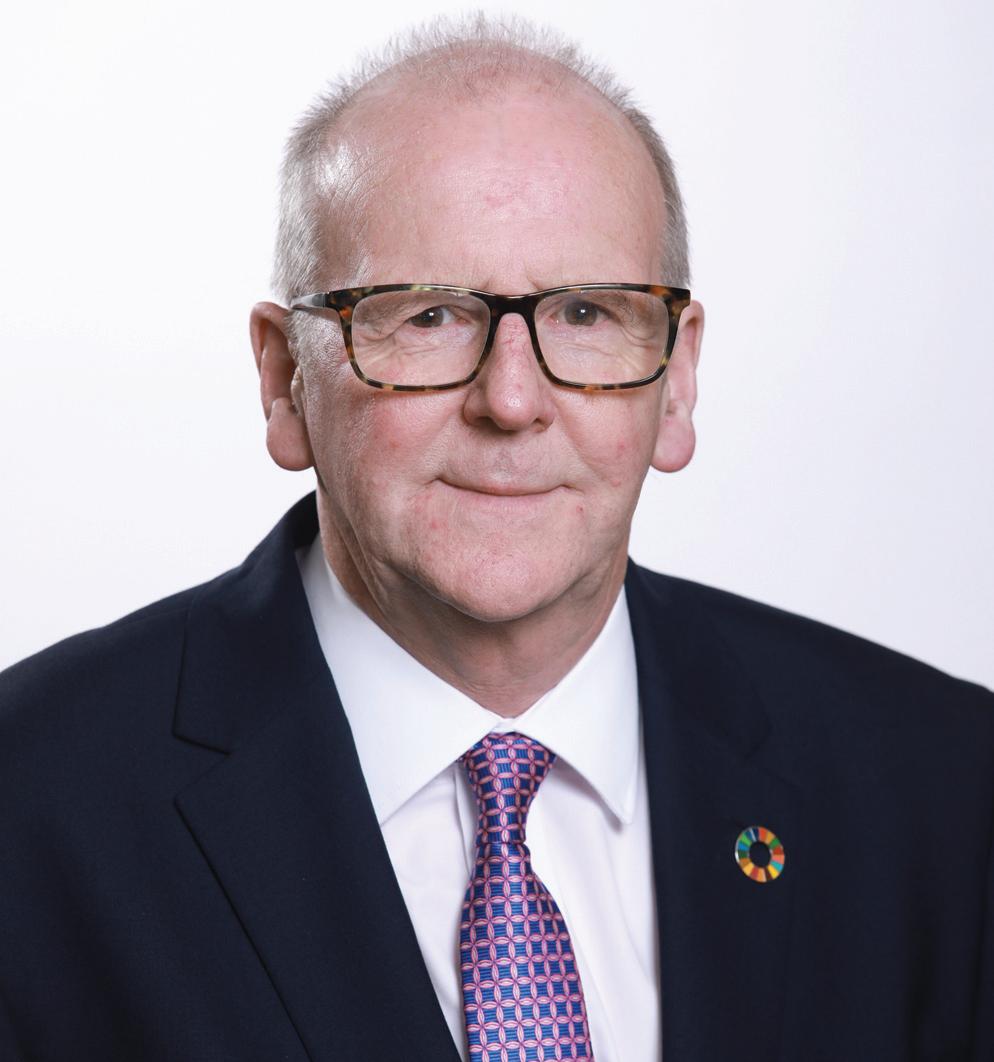
“But looking at it simply, to achieve an increased recycling rate the starting point is to reduce the waste created in the first instance and re-use materials, such as containers, jars and bags, when possible.
“Ultimately, it is the householder that recycles not the Council. Our residents’ survey indicates that residents have ‘the will’ to recycle and ‘the way’ needs to be supported to facilitate their recycling ambitions. This could be realised through provision of increased capacity to recycle by increasing blue/green bin capacity for
recyclable materials and reducing the frequency of nonrecyclable waste collections.
“The cost to the environment and economic costs of waste disposal and recycling are intrinsically linked. The financial cost to dispose waste to landfill is significantly higher than the cost to recycle and the environmental price is incalculable.”
Turning to littering, fly tipping and dog fouling levels, he adds: “Discarded cigarette ends and glass bottles, in addition to being unsightly, can create serious issues for local communities in our Areas of Outstanding Natural Beauty. Newry, Mourne and Down District Council is in the process of finalising a review of district cleansing provisions which will increase resources to help ensure residents are living in a clean, safe and attractive environment.
“Thank you to all those who do respect our district. Continued collaborative working between the Council, residents and local community groups will help to reeducate and re-enforce our key messages. Rethinking what we do with our waste is also key to achieving the ambitious 70 per cent recycling target by 2030.
“Newry, Mourne and Down District Council is placing a high importance on the education of children and young people on the principles of recycling to pass the message to the next generation and change behaviours at home.”
T: 0330 137 4000 W: newrymournedown.org
49 Environment, waste,
report
Andrew Cassells, Director of Sustainability and Environment, Newry, Mourne and Down District Council.
and water















50 Environment, waste, and water report
gas emissions • Overall greenhouse gas emissions 2019 21MtCO2e Down 19% since 1990 Projected to decrease by 14% by 2030 Agriculture emissions up by 8% since 1990 Agriculture emissions predicted to increase by 4% between 2019 and 2030 Transport emissions increased by 22% since 1990 Transport emissions predicted to increase by 2% between 2019 and 2030 Source: Department of Agriculture, Environment and Rural Affairs
Northern Ireland environment Waste management Q2 2022 (April to June 2022) 266,355 tonnes of waste collected by councils 7.5% decrease since Q2 2021 Recycling rate of 52.8% 0.7% increase since Q2 2021 Landfill use 22.5% 0.9% increase since Q2 2021 Energy recovery 23.1% 0.7% decrease since Q2 2021 Source: Department of Agriculture, Environment and Rural Affairs 1 2
Greenhouse
The
Water quality

In 2015, 147 (33%) of the 450 river water bodies were classified as good or high overall status. In 2018, 141 (31%) of
river water bodies were classified as good or high overall status. In 2021, no river water bodies achieved good or high overall status.
In 2015 and 2018, 5 (24%) of the 21 lake water bodies were classified as good overall status. In 2021, no lakes achieved good overall status.
In 2015, 8 (32%) of the 25 transitional and coastal water bodies achieved good overall status and 1 (4%) achieved high overall status. In 2018, 10 (40%) water bodies achieved good overall status. In 2021, no water bodies achieved good overall status.
In 2015, 49 (65%) of the 75 groundwater bodies achieved good overall status. In 2021, 51 (68%) achieved good overall status.
Source: Northern Ireland Environment Agency, and Department of Agriculture, Environment and Rural Affairs
Air quality












Roadside nitrogen dioxide levels have decreased from 35.1μg/m3 in 2011 to 24.0μg/m3 in 2021
In 2021, the mean nitrogen dioxide level for the 10 sites, previously used as an indicator for PfG reporting was 26.3μg/m3. This was 2.0μg/m3 greater than the level reported in 2020.

In 2021 there was no breach of the UK Strategy Objective or EU Limit Values of 40 μg/m3 for the annual mean concentration of particle matter (PM10)
Annual mean concentration of PM10 across urban areas was 14 μg/m3 and the mean for the Lough Navar rural background monitoring site was 7 μg/m3
• In 2020, of the ammonia emissions from agriculture: 89% came from livestock, 7% from the application of fertilisers containing nitrogen, and 4% from the application of other organic materials to land (sewage sludge and digestate).
Source: Northern Ireland Environment Statistics Report, NISRA
Environment, waste, and water report
51
3 4
Northern Ireland has an opportunity to set a climate focused example to the world
A year on from the COP26 Climate Change Summit at Glasgow, and six months since the Northern Ireland Assembly passed the historic Climate Change Act, Colm Warren FCA, Chief Executive of leading organics recycler Natural World Products (NWP) lays out what the group is doing to support both the environment and the economy and considers the opportunity for Northern Ireland to develop a truly collaborative circular economy.
When Northern Ireland’s Waste and Resource Management Strategy was launched in 2013, it set what at the time seemed ambitious targets for the sector, seeking to transition from simply managing ‘waste’ to treating it as a resource.
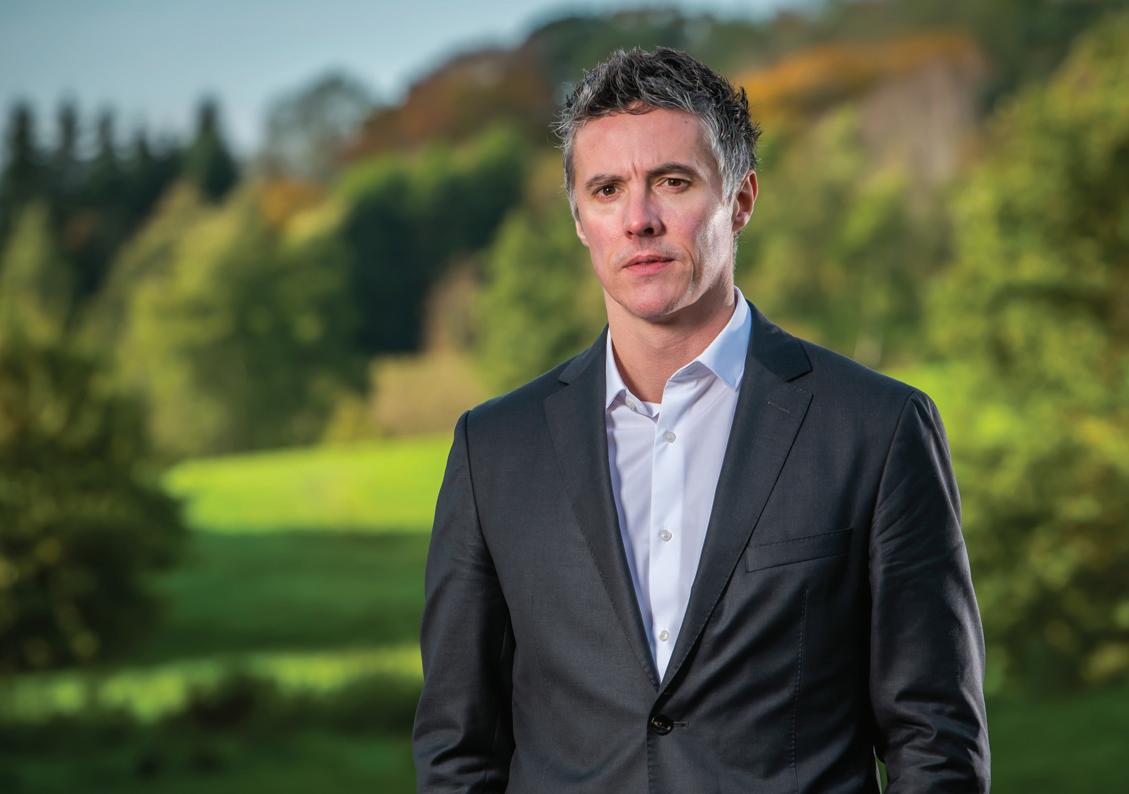
There was considerable political and industry scepticism about the viability and relevance of those targets.
A decade later, there is much greater awareness of the challenges posed by damage to the environment and a greater urgency in addressing it.
At NWP, we understand the need to take a wider and longer-term view on waste and resource management to develop our green economy and find new climate solutions.
The bill for efforts to tackle climate change cannot simply be left to the ratepayer or tax-payer.
Governments and policymakers, the private and public sectors and local communities must collaborate in new and effective ways if we are to succeed, and we can.
Policymakers need to tread carefully as Northern Ireland has its own bespoke circumstances, challenges and opportunities that are worthy of specific consideration.
Let us consider what is most important and relevant here and what is practically and economically viable for our local authorities, businesses and ratepayers in times of significant economic hardship.
Obviously, diverting as many tonnes and materials as possible from landfill is critical but we also need to think more about how we can make our agri-food sector more sustainable, restore crucial organic matter back to our soils and sustainably move away from devastating our peatlands as critical natural carbon sinks.
At NWP, we are seeking to lead efforts to increase the circular nature of organics recycling, drive up the amount of recyclable food and green waste that is processed, composted and returned to soils, boosting carbon capture, improving soil health and reducing unnecessary landfill and peat extraction.
This creates a natural extension of the agri-food

52
Environment, waste, and water report
sector’s ‘farm to fork’ initiative, extending this to ‘farm to fork to field’.
The huge boost to carbon capture resulting from such interventions will go a long way towards offsetting the carbon footprint of the agriculture sector. This is a truly collaborative circular economy at work.
Producers and recyclers working closely together, to reduce the environmental impact of food production, grow ingredients as close to consumers as possible and improve the quality of soil health and nutrition, leading to higher more sustainable crop yields and improved economic returns.
Over the past 18 months, NWP has invested heavily in expanding capabilities at operational sites across Northern Ireland, enabling us to handle hundreds of thousands of tonnes of organics every year.
Even more ambitious net zero transformational infrastructure projects are imminent to help further address key structural problems, including decarbonisation of the gas network, It is critical that, as an island, we fully understand the importance of well segregated, clean streams of household food and garden waste as much-needed resources that can help address key structural issues beyond landfill diversion.
Organics should be collected together wherever and as often as possible, it is most economical and all the leading and most robust forms of treatment technology for these materials DO NOT require separation of the elements in collection systems.
High Solids Anaerobic Digestion treatment and In-Vessel Composting Systems treat garden and food waste together, and, as the leading processor working in long-term partnership with most of the councils across Northern Ireland for the next decade, we will be mixing them once received anyway.
With bans on the use of peat-based composts in private gardens and allotments imminent, NWP has developed a product range that is already helping to replace peat based growing media and that is far more effective due to its rich, plant-available nutrient content.

That high quality recycled product is crafted and refined directly from the garden and food waste collected from households across Northern Ireland.
This enables individual communities and citizens to play an immediate role in combatting climate change.
Through such collaborative and readymade circular approaches, Northern Ireland can be an example of a region focused on sustainable climate solutions that will actually work over the long term
to achieve the targets set out in the Climate Change Act.
The economic advantages of such an approach can enhance our attractiveness to external investors, allow us to build infrastructure to address the right structural problems (not create new ones) and deliver a raft of new and sustainable jobs in the process.
Working together with partners from the education, energy, gas, and utility sectors, our aim is to continue to progress next generation infrastructure and product development possibilities with the aim of high-volume recycling operations that are fully self-sustaining.
Get it right, and Northern Ireland can be an example to other regions across the world of using waste and resource management to find real, practical, and economic climate solutions.
Colm Warren is Chief Executive of Natural World Products, Ireland’s leading organics recycling company.
T: 028 9060 0145
E: colm.warren@nwp-recycle.com
W: www.naturalworldproducts.com
53
Environment, waste, and water report
Climate change: Impacts, adaptation, and vulnerability

“The science is clear, any further delay in concerted global action will miss a brief and rapidly closing window to secure a liveable future,” explains Hans Pörtner, co-chair of the Intergovernmental Panel on Climate Change (IPCC) Working Group II.
Pörtner outlines the key findings of the Climate Change 2022 report, the working group’s contribution to the IPCC Sixth Assessment Report, which not only assesses the impacts of climate change by looking at ecosystems, biodiversity, and human communities at global and regional level, but also reviews the vulnerabilities, capacities, and limits of the natural world and human societies to adapt to climate change.

Setting the context for the report, Pörtner says that it is clear human pressure on biodiversity is increasing constantly, with conservation efforts failing to stem the loss of biodiversity on a global scale. In parallel, man-made climate change is increasingly threatening nature and its contributions to people, leading to losses to overfished stocks, excessive droughts and wildfires, and heatwaves.
“The scientific evidence is clear, climate change is a threat to human wellbeing and the health of the planet,” he states. “We need to consider how resilient we are with respect to the changes that are
ongoing. Between 3.3 to 3.6 billion people live in hotspots of high vulnerability across the continents, including large parts of Africa, South Africa, Central and South America, small islands, and the Arctic.”
Pörtner explains that a larger concern is that not only are these places of high vulnerability, but also where the largest changes are occurring with respect to destruction of natural resources and the life-sustaining functionality of ecosystems. This, in turn, impacts the areas where the human species can exist. Exposure to high temperatures and high humidity will have consequences for migration movements, with wider impacts such as economic disruption.
“Our civilisation, our current system that we look at as being the backbone of our wellbeing and of our wealth, is clearly in danger under climate change,” he adds.
Pörtner highlights that risk is not just isolated to humans. A rise in global warming to 3°C, as is predicted without severe mitigation, would see a 10-fold increase in extinction in biodiversity
54
report
Environment, waste, and water
hotspots, a backbone for the life-saving functions of ecosystems and their productivity.
“Nature’s crucial services are at risk in a warming world,” he states. “Climate change combined with unsustainable use of natural resources, habitat destruction, growing urbanisation, and inequity. Very clearly, on all continents, this is reducing people’s and nature’s capacity to adapt.”
Highlighting that warming alone is not the sole driver and that simultaneous extreme events and impacts compound risks, the co-chair offers the example of the knock on effects of increasing heat, meaning a reduction in crop yields made worse by heat stress among farm workers. Reduced crop yields also means increased food prices and reduced household incomes. A local effect, therefore, quickly becomes a global challenge.
Another example offered by Pörtner is the impact of rising temperatures on water scarcity. At 2°C warming, regions relying on snow melt would have a 20
per cent decline in water availability for agriculture after 2050.
The IPCC uses a complex evaluation of global and regional risk, relating that risk to global warming with the aim of providing guidance on climate action through mitigation and adaptation, while also considering the limits to adaptation.

The evidence reiterates the science that risk can be kept at a moderate level more often by keeping global warming below 1.5°C. This, however, does not mean that damage will be reversed. Data on warm water corrals, for example, a largescale ecosystem service, shows that they have already passed the tipping point of exposure. At 1.5°C, 70 to 90 per cent of them will be lost but if the globe’s temperature rises to 2°C, 99 per cent will be gone.
“To avoid mounting losses, it is urgent to adapt to climate change and close the adaptation gap,” he states.
“Keeping the maximum number of adaptation options open by deep cuts in greenhouse gas emissions.”
Adaptation
Adaptation options listed in the report include the likes of: water management; improving food security; transforming cities; the co-benefits of mitigation; and avoiding maladaptation.
However, as the co-chair explains, even effective adaptation cannot prevent all loses and damages. Pörtner explains that with warming above 1.5°C, some natural solutions may no longer work and a lack of freshwater could mean that people living on small islands and those dependent on glaciers and snowmelt can no longer adapt. A rise to 2°C will be challenging to multiple farm staple crops in many current growing areas.
Setting out that ambitious emissions reductions protect biodiversity and its contributions to climate mitigation and the bioeconomy, Pörtner highlights the global challenges that need mastering, including the avoidance of deforestation and degradation of intact ecosystems; a reduction of land use competition, which can affect food prices and impact food security and livelihoods with possible knock-on effects related to civil unrest; a reduction of excessive land use for animal feed production; the development of novel food and feed sources; and the implementation of broad education initiatives.
Spatial planning
Pörtner stresses that spatial planning is key to integrating conservation, climate and societal actions.
“Treating climate, biodiversity, and human society as coupled systems is key to successful outcomes. To be successful, conservation and climate actions would go hand-in-hand across landscapes, in cities and rural areas, taking people’s needs into consideration, for maximised benefits for climate, biodiversity and humans.”
The solutions framework included within the report, aimed at delivering “climate resilient development”, has ecosystem stewardship at its core and seeks to deliver effective and equitable conservation and restoration of approximately 30 to 50 per cent of land, freshwater and ocean ecosystems can help ensure a healthy planet.
Pörtner concludes: “Starting today, every action, every choice and every decision matters. Worldwide action is more urgent than previously assessed. Any further delay in concerted global action will miss a brief and rapidly closing window to secure a liveable future.”
55 Environment,
waste, and water report
Drinking water quality remains high
The report acknowledges that the comparisions between 2021 and 2020 may be somewhat skewed due to the inability of the Northern Ireland Environment Agency (NIEA) to conduct the scheduled amount of tests, due to the impact of Covid-19, which resulted in less than 30 per cent of the intended sites being adequately tested in 2020.
It further outlines that there was a 99.92 per cent overall micro compliance, as well as a 99.82 per cent consumer tap compliance.
“Although this is a lower overall compliance than last year (99.94 per cent), the figure for 2020 was higher than anticipated due to the changes in the sampling programme because of the Covid-19 pandemic,” the report states.
Former Minister for Agriculture, Environment and Rural Affairs, Edwin Poots MLA said: “I am pleased to welcome the Drinking Water Inspectorate’s annual report on drinking water quality in Northern Ireland. The quality of our drinking water remains high which is vital for Public health, the hospitality sector, farming, and the economy.
“The Drinking Water Inspectorate has an important role to play in providing the Northern Ireland public with independent assurance that their water supply is safe and clean. Through regulatory enforcement, DWI has helped bring about improvements to Northern Ireland Water’s infrastructure for the benefit of us all."
Lead
There was a notable increase in instances of lead in water, with the lead compliance having reduced by 2 per cent.

The lead compliance was 98.08 per cent compared to full compliance in 2020. However, less than 30 per cent of the scheduled lead samples were taken in 2020 due to the Covid19 pandemic, as these samples must be taken at consumer taps.
The report says that “compliance with the lead standard is still an issue in properties built before 1970” so it is important that Northern Ireland Water continues to implement its lead strategy to effectively manage the risk to public health.
When a sample has contravened the standard and Northern Ireland Water’s lead leaflet investigation finds the property’s service pipe contains lead, it notifies the consumer. It is the owner’s decision whether or not to replace their supply pipe and any other lead pipes within the property.
The Drinking Water Inspectorate’s (DWI) annual water quality report has found that the overall compliance for the mains water supply in
2021 was high, at 99.88 per cent.
56
Environment, waste, and water report
The regulations require Northern Ireland Water to treat the water to reduce the risk of the concentration of lead being greater than 10 μg/l. Northern Ireland Water has a lead strategy in place to deliver improved compliance for lead.
Looking at the overall trend in lead compliance, there has been a gradual trend upwards since 2017. Notwithstanding the increased compliance, potentially due to reduced sampling in 2020, the decrease experienced in 2021 indicates that a significant amount of work is still required to ensure compliance improves in the future.
Water quality contacts
The report states that Northern Ireland Water received 7,305 complaints over the quality of water in Northern Ireland, a 21 per cent increase on the 2020 figures, although this is partially due to the skewed figures due to the context around Covid-19.



The most common complaint was to do with the colour of the water, accounting for 3,220 of the contacts received.


The report explains this, stating: “In 2021, as in every year, the majority of
appearance concerns (68 per cent) related to discoloured water. The most common cause of discoloured water concerns is an orange, brown or black discolouration caused by suspended particles of iron (orange/brown) and manganese (black).
“Iron discolouration may occur through natural iron present in the raw water passing through inadequate treatment, from the treatment process, or from corrosion of cast-iron distribution mains. Manganese is naturally present in some raw waters and may not be fully removed if treatment is inadequate.”
It further states that white water, caused by a mixture of burst pipes, faulty water mains, or the release of chalk, accounted for over 30 per cent of the contacts received.
18.2 per cent of the complaints received by Northern Ireland Water were related to the taste of running water, a figure similar to the 18.9 per cent recorded in 2020.
“All water sources contain naturally occurring minerals. Water also contains dissolved gases, such as oxygen and carbon dioxide, which give tap water a characteristic taste. One substance, which is added to drinking water for disinfection, is chlorine, and this can give rise to consumer complaints,” the report states.
It further states that “other taste and odours should not be present in drinking water for aesthetic reasons such as TCP or earthy/musty, or for health reasons such as pollution from petrol and diesel”.
Environment, waste, and water report
57
Environment, waste, and water report
Harnessing the energy value of waste
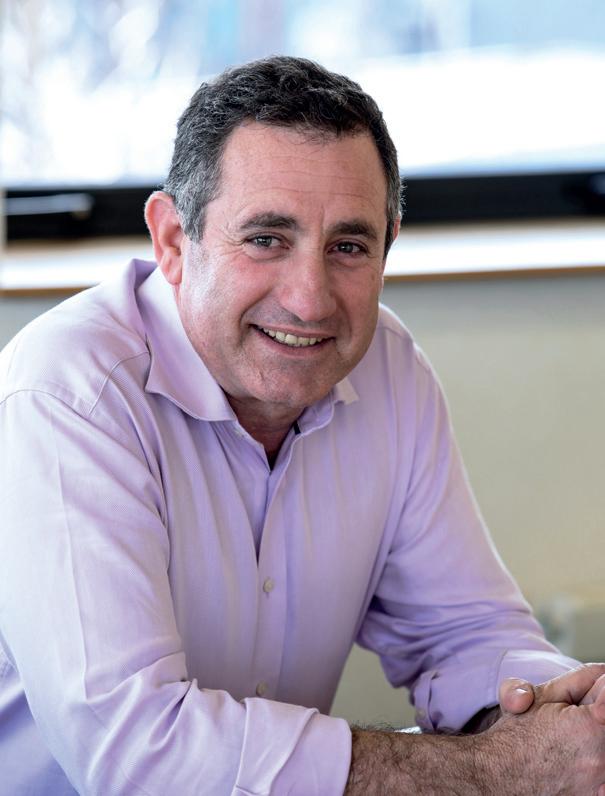
Albert Einstein once wrote that “energy cannot be created or destroyed, it can only be changed from one form to another”. Waste, therefore, is simply a collection of materials each containing varying levels of trapped energy waiting to be released in one form or another.
When waste is landfilled it decomposes and releases methane gas, a greenhouse gas that is up to 80 times more potent than carbon dioxide. While being a dangerous gas to our atmosphere when released in an uncontrolled fashion, it presents a powerful solution when captured and used efficiently.
Methane is a primary component of natural gas, so, wherever we use natural gas we can (within limits) use methane to replace it. When extracted from a waste source the gas is known
as biomethane and it is becoming a highly sought-after source of energy.

In Northern Ireland alone, the aspiration is to generate 1,400,000 MWth of biomethane each year. When topped up very slightly with propane, the gas can be injected into the Northern Ireland gas network to substantially decarbonise it. Using hydrogen to achieve this level of decarbonisation is far costlier and complex and this is one of the primary reasons why all other UK regions and the Republic of Ireland have already started developing the infrastructure.
Europe as a whole is aiming to increase its biomethane production to over 320,000,000 MWth. Key to generating biomethane is a feedstock that has a large element of methane in it and this is where RiverRidge comes in.
RiverRidge’s R&D focus over the past five years has been to design a technology that can maximise the extraction of methane gas from its waste streams. The company has been receiving household waste from several of Northern Ireland’s councils since 2011. Historically, its desire to divert this waste stream from landfill has focused on the combustion of the waste in order to create electricity. While this is still a fundamental part of the company’s strategy, it is recognised that the combustion of waste, particularly plastic waste, carries with it an unacceptably high carbon footprint.
If Northern Ireland is to realise carbon neutrality in the waste sector, a longterm alternative to the combustion of waste will be imperative.
RiverRidge deals with waste streams that are co-mingled, this means that every load received contains everything from paper to plastic to food to metals. Treating a waste stream like this is
RiverRidge’s commitment to innovation and dedication to decarbonising the Northern Ireland waste sector is reaching new heights, outlines CEO and Director of Full Circle Generation, Brett Ross.
CGI of the £50million project which aims to make a significant impact on Northern Ireland’s biomethane target.
58
complex and the presence of contaminants like food waste and other liquids makes it near impossible to divert commonly recyclable materials like paper, cardboard, and plastic into traditional recycling markets. RiverRidge has had to come up with innovative treatment methods to ensure as much material can be recycled early on in the process. This percentage is, however, low.
The company has therefore focused on finding a technology that will increase the level of recycling from residual waste as well as harness the energy value of waste thus allowing it to change the energy from one form to another.
BioCircul8
In 2019, the company developed the first stage of its BioCircul8 technology, which involves the refining of the waste stream to a point where it is consistent enough to be used in the second stage of the process. Working with a number of sector specialists and engineering consultants, the company has perfected the first stage of this operation and now is ready to develop the second stage. Its BioCircul8 technology seeks to convert elements of the waste stream into a usable soil improver while extracting the precious methane gas it contains.
The £50 million project aims to make a significant impact on Northern Ireland’s biomethane target. Biomethane output is estimated to be in the region of 150,000 MWth, making it one of the region’s largest facilities. It will also dramatically
Brett Ross
reduce the carbon footprint associated with treating household waste but also ensure that the waste is used entirely within Northern Ireland and not exported abroad. Keeping this value local is a core aspiration from RiverRidge.


The company has shown that local solutions in the waste sector are achievable. In 2018 it commissioned its gasification facility in Belfast and immediately ensured that over 100,000 tonnes of waste need no longer be exported to European energy from waste facilities.
RiverRidge may be a small, local company in the context of several of its UK and European competitors, but the company’s commitment to innovation and dedication to its community have ensured that its vision – to treat waste as a valuable resource and in so doing ensure a positive outcome for our plant and communities – is fast becoming a reality.
T: +44(0)28 95 313 313
E: info@riverridge.co.uk
W: www.riverridge.co.uk
RiverRidge’s first bio-gas vehicle. Pictured are RiverRidge Group Transport Manager, Stephen Thompson (left) with David Hyde, Sales Manager at Macpac Refuse Bodies.
“If Northern Ireland is to realise carbon neutrality in the waste sector, a long-term alternative to the combustion of waste will be imperative.”
59 Environment, waste, and water report
Waste management strategy by 2023
The Department of Agriculture, Environment and Rural Affairs has launched a pre-consultation stakeholder engagement process, with the aim of launching a public consultation on the draft strategy in the second quarter of 2023.
The new strategy, according to the recently-departed Minister for Agriculture, Environment and Rural Affairs, Edwin Poots MLA, will set the policy direction for the future management of waste in Northern Ireland for the next six years.

Northern Ireland’s last waste strategy Delivering Resource Efficiency was published in 2013. A closure report published in June 2022 meant that governance arrangements for the strategy, including completion of its monitoring and reporting arrangements, concluded.
Waste Framework Directive (2008/98/EC), retained,
post-Brexit, the establishment of one or more waste management plans. In Northern Ireland this requirement is currently fulfilled through the Waste Management Plan for Northern Ireland published by the Department in 2019. The plan includes the Northern Ireland waste management strategy and the regional waste management plans prepared by the three district council waste management groups.
Strategy strands and legal requirements
The consultation document outlines a list of legal requirements which the upcoming strategy must ensure are taken into account, including ensuring that it is in accordance with the waste hierarchy, protection of human health and the environment, and principles of self-sufficiency and proximity.
A new waste management strategy, which could seek to limit waste to landfill levels to just 10 per cent by 2035, will be published by the end 2023.
60
Environment, waste, and water report
There is a proposal in the development of the strategy that there must be strong consultation with district councils, devolved adminstrations, UK Government, and others, which should also be given an early and effective opportunity to express their opinions on the proposals.
Conformation to the current plan for the reduction of biodegradable waste going to landfill is seen as key, in addition to analysis of the current waste management situation. There is also support for a chapter in the strategy on the management of packaging and packaging waste.
There have been discussions to include measures which aim to promote preparing for re-use, promote high quality recycling, including the setting up of separate collections of waste, containing its policies in relation to the recovery and disposal of waste, as well as encouraging the recycling, including composting and digestion, of bio-waste.
The consultation document outlines the strategy strands which must underpin the future strategy over the various processes prior to the publication of the strategy, scheduled for December 2023. The first of which is the “need for change: strategic context”, as well as a strand for sustainable production which will be focussed on achieving a circular economy and meeting Northern Ireland’s net zero commitments.
Complementary to the aims of increasing the circularity of the Northern Ireland economy is avoiding waste by means of prevention and encouraging re-use of products, in addition to maximising the retention of resources via recycling.
Paramount to all of this is the proposed strand of “extracting value and preventing harm” by other recovery and disposal methods, which are not as of yet specifically outlined. Changing attitudes and behaviours is another strand via communication and educational methods.
Whilst there is some legislation in place already, such as the Climate Change Act, the document states that there is a need for additional robust legislation, along with the accompanying regulation and enforcement.
The final two strands outlined in the document include the supporting innovative methods such as the use of data, research, and infrastructure, in addition to ensuring that the proper monitoring infrastructure is in place.
Proposed actions
At the engagement stakeholder event, some of the proposed actions on waste management include a target to send no more than 10 per cent of Northern Ireland’s waste to landfills by 2035, as well as a further proposal to introduce legislation to reduce the consumption of single-use plastic items.
There were further engagements surrounding the implementation of the upcoming Extended Producer Responsibility Scheme for Packaging, which will be introduced by the UK Government in 2023. Additionally, there were discussions on the viability of introducing a deposit return scheme in Northern Ireland by the middle of this decade.
Increasing the circularity of the Northern Ireland economy is seen as a complementary action to the reduction of waste. Currently, Northern Ireland has a circularity gap of 92 per cent, although a study by Circle Economy has found that the circularity gap can be viably reduced to 84 per cent by 2032.
Northern Ireland currently has a footprint of carbon waste which is double the world average. Circularity would involve the recycling of materials, and the reductions which can viably be achieved have the half the material footprint currently put out in Northern Ireland, although there are concerns of the ramifications for the economy in this event, given the wide transition which is needed in the labour market in order to facilitate this.
61 Environment,
waste, and water report
NI Water: Completing the virtual circle

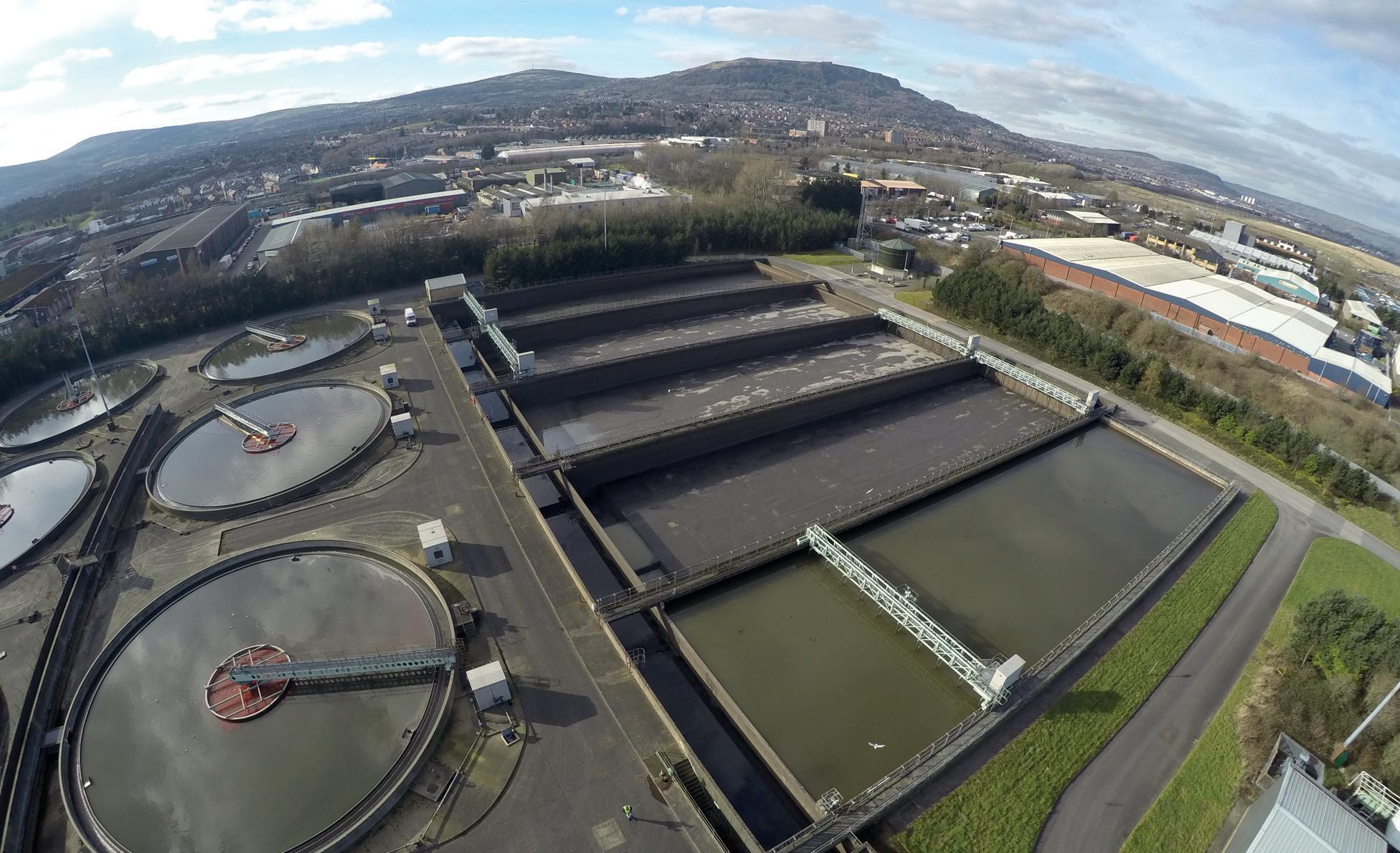
The job description for NI Water, at first, seems straightforward as an essential utility dedicated to delivering what matters for Northern Ireland including the environment, the economy and the public’s health, seven days a week, 365 days a year.
That means continuing to provide the quality of water that is essential to our daily lives and health. But it also means making up for the legacy of under-investment in the part of the water service that people tend to ignore: waste water treatment.
Failure to invest in that in the past means we do not have enough capacity to permit the natural growth in housing and business development that our economy needs to keep growing.
But it also means that we may have discharges of diluted waste into our rivers and water courses at a time when people, rightly, are demanding higher standards.
On top of that come other challenges. The Northern Ireland Assembly’s Climate Change Act has now enshrined in law the target of net
Running a utility these days sometimes feels like trying to align all the colours on one of those old Rubik’s cubes. There are so many different elements it is difficult to see how they all fit together.
62 Environment, waste, and water
Belfast wastewater treatment works.
report
zero by 2050 and NI Water, like all public bodies here, will be expected to play its part in reaching that target both in the way it manages its natural assets and in its consumption of energy as the biggest user of electricity in Northern Ireland.
And, of course, the price of that energy has risen exponentially in the last year, at the same time as public finances have become much tighter.
It is a daunting list, but not impossible, so long as we approach it in the right way.
The danger is that we take each issue on its own without thinking through the synergies, and tensions, involved. That is what happened in the past and we are paying the price for it today.
It was perfectly understandable why at a time when money was short to think that prioritising water quality over wastewater services was the right thing to do, but the result was that, collectively, we failed to realise the implications of that both for the economy and the environment which is such an important part of our “sell” to the outside world. Thankfully, working with the Department for Infrastructure and the Utility Regulator, we have begun to put that right.
Equally, however, now it would be a mistake to think of how we lower the cost of energy and meet the net zero climate change target as two separate issues in which we have to choose to prioritise one or the other. We not only have to do both but there is a real opportunity to create a win/win situation for Northern Ireland if
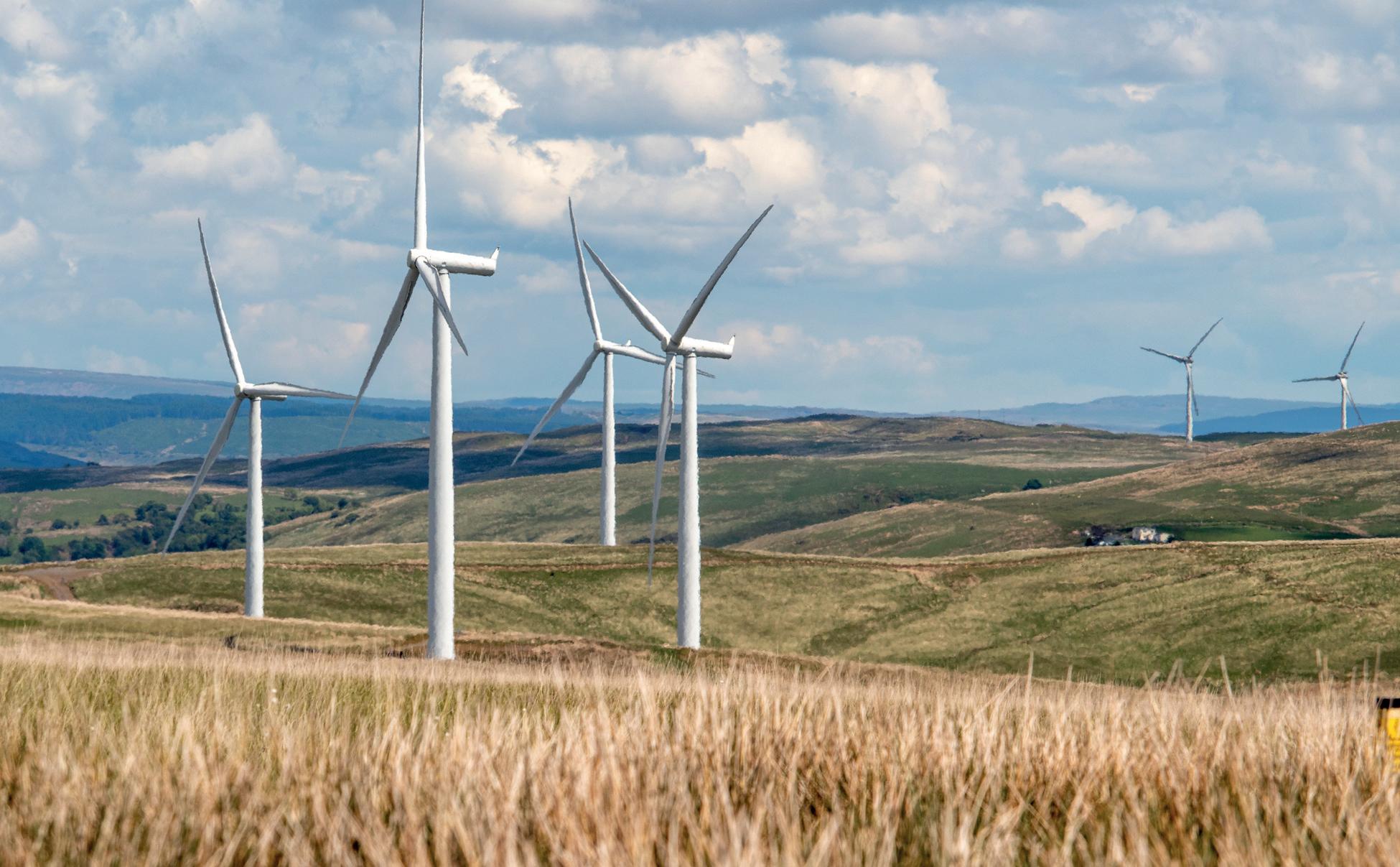
we think of them as essentially flip sides of the same coin.
We can both lower the cost of our energy and do it in such a way as to reduce our impact on the climate, as well as addressing the legacy of under investment in our wastewater services.
NI Water is exploring the possibility of establishing its own wind farm to meet its energy needs. The thinking is at an early stage, but the possibility is there and if realised would mean the cost of the electricity we use would no longer be tied to the global price of gas. It would also mean we would have more control over one of our main costs, and, therefore, the burden we place on the taxpayer.
And Northern Ireland, as a whole, would have to import less fossil fuels and, therefore, find it easier to hit the target of reaching net zero. A virtual circle is possible.
Electrolysis is another possibility. Splitting water into oxygen and green hydrogen at our treatment works would have two benefits. A pilot project we ran at Kinnegar near Holywood showed that
using the oxygen from electrolysis has the potential to increase the capacity of our wastewater treatment works, and, in turn, that would make room for more housing and business development.
And increasing capacity would not just help address that legacy of underinvestment it would also help future proof against the adverse effects of climate change. More frequent floods could mean more discharges in our rivers unless we start acting now.
At a time when budgets are tight or shrinking and the focus is naturally on the immediate pressures we all face such ideas can seem slightly irrelevant to dealing with present day reality. But it was the failure to think strategically and to join up the dots that has helped create those pressures. That is a mistake we should not make again.
Contact us for further info: niwater.com/contact-us/ or Email: waterline@niwater.com

“We can both lower the cost of our energy and do it in such a way as to reduce our impact on the climate.”
63 Environment, waste, and water report
NI Water is exploring the possibility of establishing its own wind farm to meet its energy needs.
Environment, waste, and water report
Climate crisis needs to be treated as a health crisis
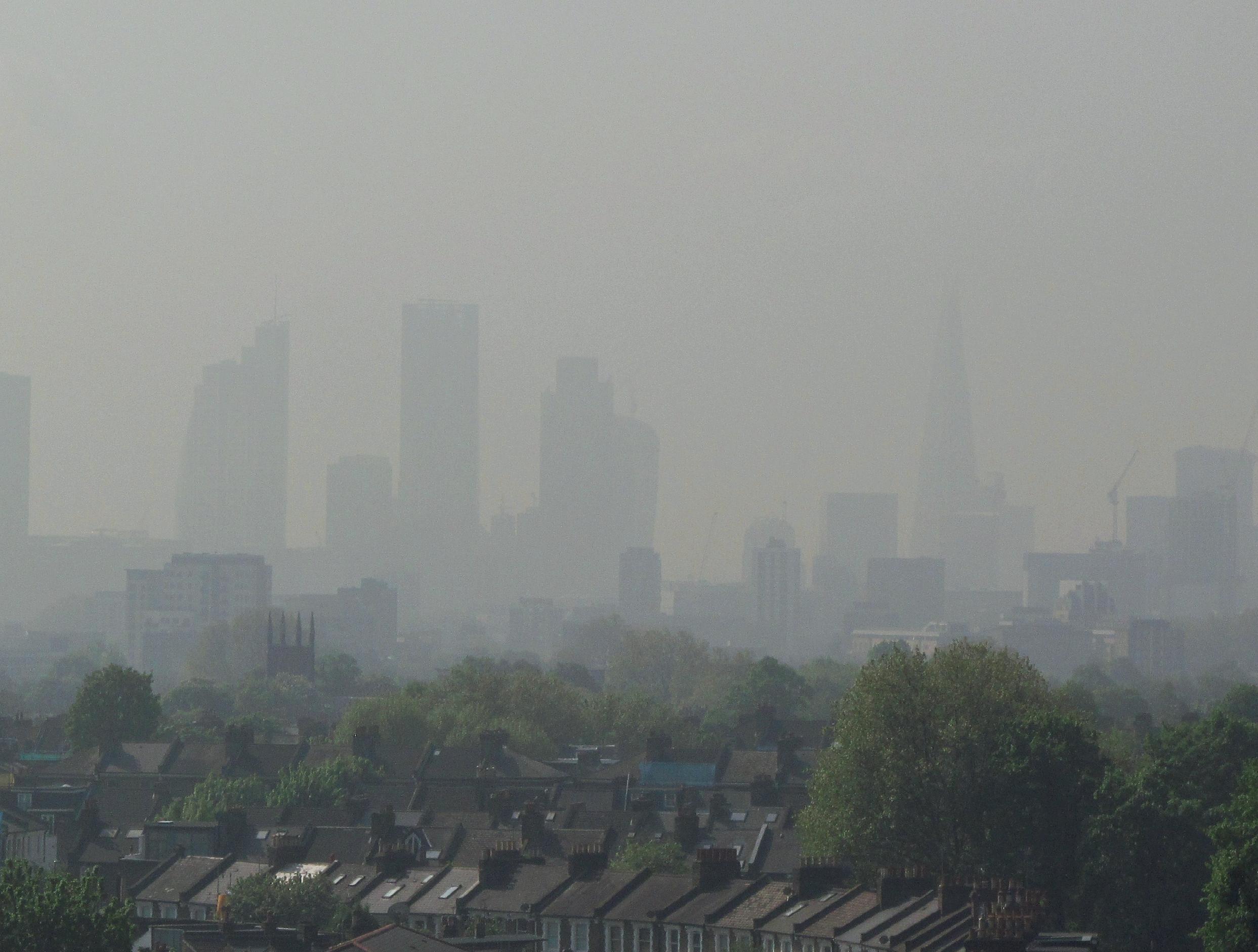 Mulcahy, Director
on
Mulcahy, Director
on
Mulcahy states that an 80 per cent reduction in greenhouse gas emissions in power generation systems by 2050, has the potential to result in a 60 per cent reduction in NO2 levels in the air, saving seven million life years as a result of a reduction in exposure to NO2.
However, if things remain as they are right now, the global temperature will have risen by 2.5°C by 2057, meaning that places such as Scotland will have no more snow in winter, and will suffer from intense flooding and rainfall.
She further states that summers will be 3°C higher, meaning that the UK and countries with a similar climate will find themselves prone to flash floods, with the climate to become akin to tropical countries without the necessary infrastructure in place.
Health impacts of global heating
Mulcahy gives an overview of the dire health consequences which will emerge as a result of the climate change, highlighting that there has already been a 50 per cent increase in heat-related mortality over the last 50 years.
Using a pointed example of a women in 2057 who may wish to have a child, she outlines the additional health complications which will apply for women by then if action is not taken in the immediate term.
Elaine
of UK Health Alliance
Climate Change, talks about the impact of climate change on public health, and the consequences which await us if action is not taken immediately.
64
Credit: David Holt
“By 2057, pregnant women will have a far higher risk of having a stillbirth and will be more likely to have a preterm baby with a low birth rate. Furthermore, people by then will be more at risk of dying from heat.
“By 2050, 7,000 people a year in the UK will die from heat-related causes. They will be more at risk of Lyme disease, salmonella poisoning, diarrhoea, and blood infections from water; that generation will experience more pandemics than anyone today has.
“Everyone’s physical and mental health will suffer. Increased dehydration, renal function loss, skin cancers, tropical infections, adverse mental health outcomes, pregnancy complications, and allergies.”
In July 2022, the United Nations declared that access to a clean and healthy environment, which includes clean air, was a human right. Despite this, 99 per cent of the global population currently breathe air which exceeds the guidelines of the World Health Organisation.
Indeed, there are cities in the world, such as New Delhi, where the air quality is so poor that it has the equivalent effect on lungs as smoking 7.7 cigarettes per day.
Mulcahy surmises this crisis by quoting Tedros Adhanom Ghebreyesus, Director General of the World Health Organisation, when he said: “The modern addiction to fossil fuels is not just an act of environmental vandalism. From the health perspective, it is an act of self-sabotage.”
“Replacing half of UK meat and dairy consumption with fruit, vegetables and cereals, would result in a 19 per cent reduction in agricultural greenhouse gas emissions, while also avoiding or delaying 37,000 deaths a year from coronary heart disease, stroke and diet-related cancer.”
A route to recovery
Mulcahy states that “it has become clear that we are facing a predicament that strikes at the very heart of humanity,” outlining her belief that the climate crisis needs to be “treated first and foremost as a health crisis”, as the health impact of changes to the climate will be the most profound.
For a route to recovery, she outlines a course of action which she believes can be taken on a grand scheme to mitigate from the worst health consequences, although she does state that some changes are permanent cand cannot be solved.
She further states that more energy-efficient homes have a critical role to play in the reduction of carbon emissions.
“Improving insulation and ventilation and a switch from fossil fuel sources would result in a reduction of 0.6 megatons of CO2 per million population and potentially save 850 disability adjusted life years per million population,” Mulcahy states.
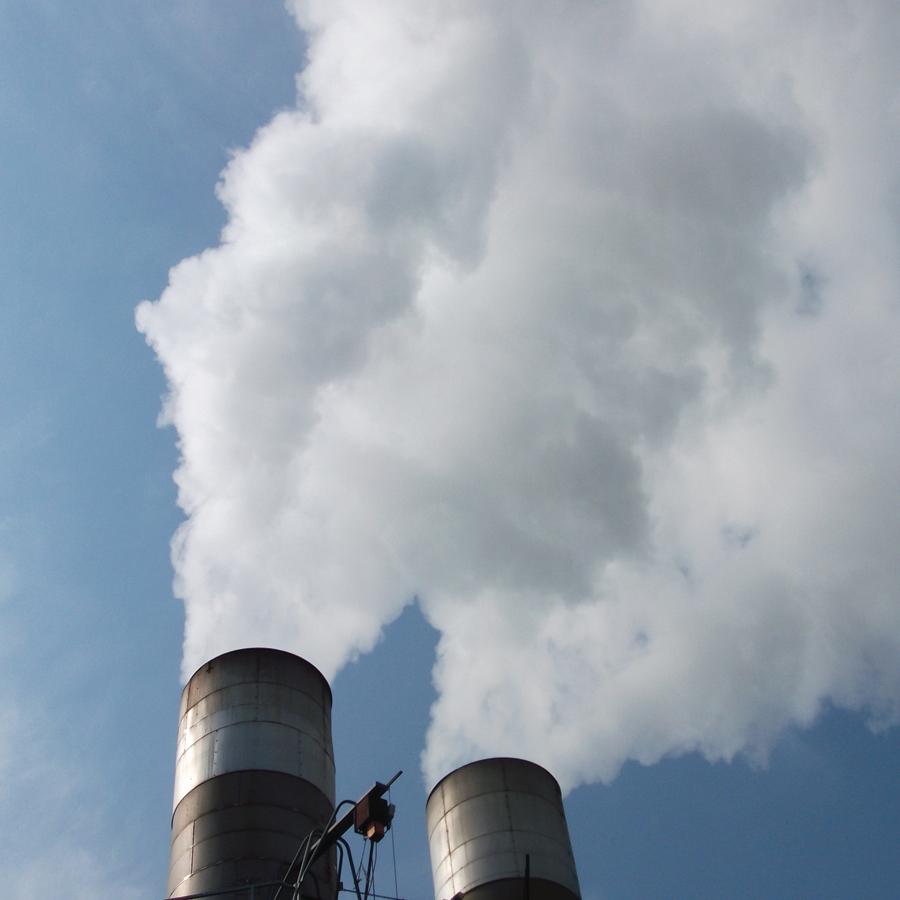
Complementary to this is an advocation of a change of dietary lifestyle, which can reduce emissions by reducing the scope of the agricultural sector, whilst further fostering better health by a reduction in consumption of fats and more consumption of healthier foods.
“Replacing half of UK meat and dairy consumption with fruit, vegetables and cereals, would result in a 19 per cent reduction in agricultural greenhouse gas emissions, while also avoiding or delaying 37,000 deaths a year from coronary heart disease, stroke and diet-related cancer.”
She further outlines the importance of active travel, stating: “Increased uptake of public transport and active travel with a transition away from private motor vehicle use, could lead to improvements in health combined with significant savings on healthcare costs as a result of reduced air pollution and higher levels of physical activity.”
65 Environment, waste, and water report
conference report
Northern Ireland Energy Forum
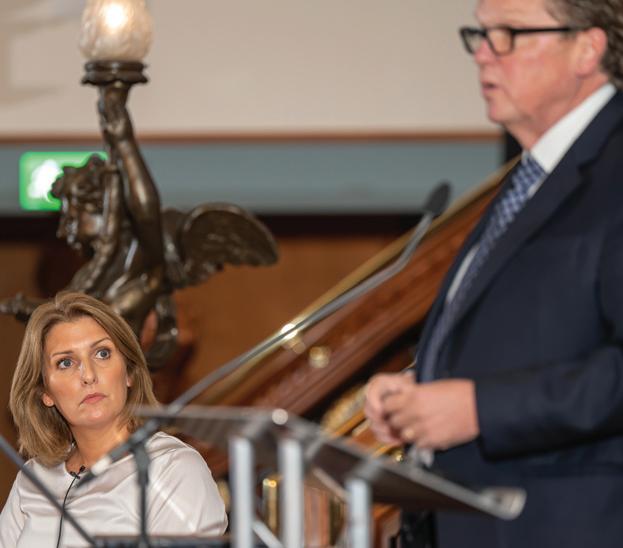


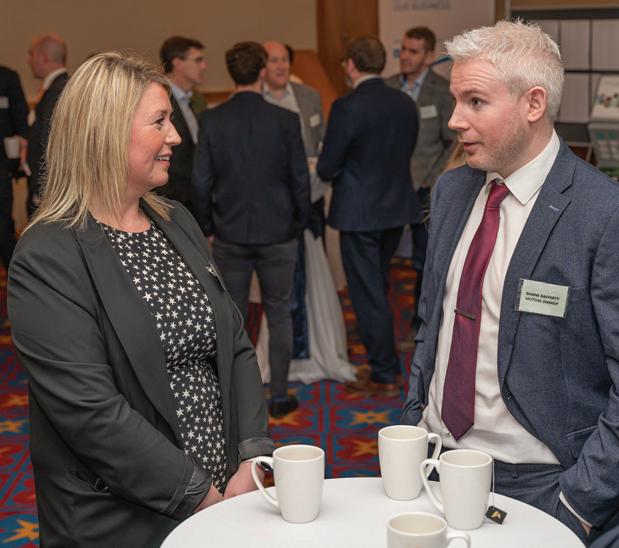

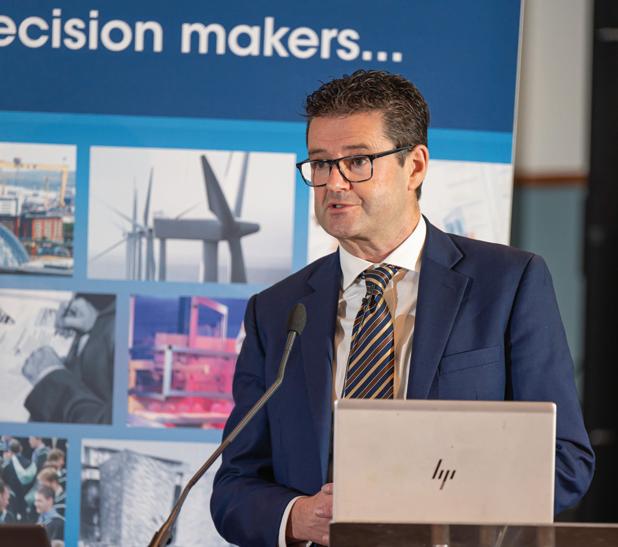
The

The Forum covered some of the major issues shaping the energy landscape. Topics included: regulatory outlook for energy, decarbonising the gas network, the path to net zero, the role of energy storage systems and developing the hydrogen economy.

Thank you to our conference sponsors and to all speakers and delegates who joined us at Titanic
conference a success.
 Speakers: Derek Hynes, NIE Networks; Richard Rodgers, Department for the Economy; Kevin Murphy, TLT; Anouk Honoré, Oxford Institute for Energy Studies (OIES); John French, Utility Regulator and Niall Martindale, firmus energy.
Richard Rodgers, Department for the Economy addressing the 2022 Northern Ireland Energy Forum delegates.
Shane Rafferty, Mutual Energy with Tamasin Fraser, ABO Wind.
Speakers: Steven Agnew, RenewableNI; Catherine Sheridan, EIH2; Andrew Ryan, TLT and Martin Doherty, Centre for Advanced Sustainable Energy (CASE).
Niall McClements and Alicia Trainor from SONI.
Marie Cowan, Geological Survey of Northern Ireland putting a question to the panel.
annual Northern Ireland Energy Forum took place in November 2022. Supported by firmus energy, TLT, NIE Networks and CASE, delegates heard from a number of expert speakers including Richard Rodgers, Department for the Economy; John French, Utility Regulator; Catherine Sheridan, EIH2 & Simon Todd, CausewayGT.
Belfast and made the
Speakers: Derek Hynes, NIE Networks; Richard Rodgers, Department for the Economy; Kevin Murphy, TLT; Anouk Honoré, Oxford Institute for Energy Studies (OIES); John French, Utility Regulator and Niall Martindale, firmus energy.
Richard Rodgers, Department for the Economy addressing the 2022 Northern Ireland Energy Forum delegates.
Shane Rafferty, Mutual Energy with Tamasin Fraser, ABO Wind.
Speakers: Steven Agnew, RenewableNI; Catherine Sheridan, EIH2; Andrew Ryan, TLT and Martin Doherty, Centre for Advanced Sustainable Energy (CASE).
Niall McClements and Alicia Trainor from SONI.
Marie Cowan, Geological Survey of Northern Ireland putting a question to the panel.
annual Northern Ireland Energy Forum took place in November 2022. Supported by firmus energy, TLT, NIE Networks and CASE, delegates heard from a number of expert speakers including Richard Rodgers, Department for the Economy; John French, Utility Regulator; Catherine Sheridan, EIH2 & Simon Todd, CausewayGT.
Belfast and made the
66
Edel Creery, NIE Networks and conference chair, watches on as Simon Todd, CausewayGT addresses the delegates.
Health and care services report





Digital Events Print
health and care services report
Fall in health funding advantage raises “real concerns” about healthcare



Growing cost pressures and a slower growth in the available budget when compared to England represents a “material risk” to the financial sustainability of healthcare delivery in Northern Ireland.
Health spending in Northern Ireland has fallen below that of England for the first time and is set to stay that way until at least 2025, meaning that spending will not address Northern Ireland’s significant health needs.
The Northern Ireland Fiscal Council’s report on the sustainability of the health service says that analysis of the Northern Ireland Executive’s draft budget and spending plans for the Department of Health show that health spending in the region is growing at a significantly slower rate compared with the Department of Health and Social Care in England (DHSC).
For the past 20 years, until 2020/2021, health spending per capita in Northern Ireland has been roughly 7 per cent higher than in England, representing an additional £181 per person. However, recent budget implications mean that health spending per head has fallen below that of England for the first time in 2022/23 and will remain between 2 to 3 per cent lower until at least 2024/25.
68
Previously, analysis suggested that the overall need for health and social care expenditure in Northern Ireland was 107 and 109 per cent of that of England, with the relative need for health spending alone, slightly lower. However, it is now expected that the relative level of health spending compared to England is also expected to fall below the latest measures of relative health need.
“The slower growth in health funding more recently means that Northern Ireland would not be able to afford to deliver the same standard of services as in England unless it ran its services more efficiently than they are run in England,” the report states.
While one-off annual health budgets have contributed to the relative drop in health spending, the primary cause is the expectation that the block grant will fall relative to the UK Government equivalent spending per head of the population in the coming years. Health spending is expected to be 39 per cent of the Executive’s block grant in 20242025, compared to 36 per cent in 20142015.
Historically, larger spend per capita on health in Northern Ireland relative to England has been explained as necessary because health outcomes are worse and therefore spending need is greater. While the Fiscal Council report does flag that worse outcomes could also be a result of policy delays or inefficiencies in the health service, it highlights some areas where outcomes are worse. The report suggests that, while the additional need for spending on health in Northern Ireland relative to England does not appear to be as high as is sometimes assumed, a range of between 4 and 7 per cent additional need for health spending is probable.
Analysis by the Nuffield Trust to support the Fiscal Council’s report shows that the costs for providing hospital services in Northern Ireland are higher than those in England. Although not directly comparable, estimates show a 36 per cent higher cost for hospital care, despite serving a smaller population. The average cost of patients admitted to hospital in Northern Ireland rose by 28 per cent in Northern Ireland between 2015/2016 and 2019/2020, compared to an 8 per cent increase in England over the same period.
Health spending per head in Northern Ireland and England
3,500
3,000
2,500
2,000
1,500
1,000
4,000 £spendperhead NI England
500
pgpg 0
9 8
8
plans 8
6
4
6
2
0
-2
0 0
7
8
9 -4
2016-172017-182018-192019-202020-212021-222022-232023-242024-25
Source: HM Treasury, NI draft budget 2022 and NI Fiscal Council calculations.
Unit costs for all patient care episodes
5
3
4
1
2
Northern Ireland unit cost England unit cost
2,000
1,500
2,500 Unit cost
1,000
500
%difference 0
0 2015-162016-172017-182018-192019-20
Source: Nuffield Trust using DoH and NHS England data.
69 health
care services report
and
4
health and care services report
Number of people waiting for elective surgery
300
Total numbers waiting per 1,000 population
50 100 250
0 200
Mar-16Sep-16Mar-17Sep-17Mar-18Sep-18Mar-19Sep-19Mar-20Sep-20Mar-21Sep-21
Source: Nuffield Trust using NHS and DoH Data.
The Fiscal Council agrees with the Nuffield Trust’s analysis that there is significant inefficiency in the Northern Ireland health system, highlighting examples such as a 1.5 days longer average length of hospital stay per admission in Northern Ireland than in England, a four times greater wait for planned care in Northern Ireland, and a 43 per cent higher spend on drugs per capita compared to England by Northern Ireland pharmaceuticals.
Included in the Fiscal Council’s report were long-term projections for healthcare spending which highlight the need for actions to alter current business-as-usual. Although spending will be dictated by the Northern Ireland Executive and subsequently allocated by the Department through each budget process, the projection (what spending might occur if the Executive were willing to accommodate demographic and non-demographic pressures) is that health spending could be the equivalent of up to 77 per cent of the block grant.
The projected 2.3-3 per cent real-terms annual increase, if accommodated, would see Northern Ireland’s health spending increase from £5.5 billion in 2024-2025 to potentially up to £22.2 billion by 2071-2072.
“The combination of growing cost pressures and slower growth in the available budget compared with DHSC in England, represents a material risk to the financial sustainability of health care delivery in Northern Ireland over the short and longer term,” the Fiscal Council states.
“This will have serious implications for the delivery of both healthcare and wider public services.”
Options to address the financial challenges set out by the Fiscal Council range from Executive budget prioritisation, through to increasing efficiencies and increased funding from the UK Government.
The Fiscal Council says that the health sector needs to make “strategic use” of the funding it receives and emphasises the importance of longer-term planning, stressing that some elements of this planning remain possible in the absence of certainty over budget levels.
Stating that it is essential to address system inefficiencies to maximise the quality and quantity of services that can be provided within existing budgets, the report says that, while some inefficiencies may be “explainable” in terms of economies of scale, “it is still important to identify inefficiencies and to work towards minimising their effects”.
“While the level of health spending in Northern Ireland appears to have previously been broadly in line with relative need, lower rates of efficiency imply that the services delivered to the public were not of the same quality or quantity as in England,” the report states.
70
Highlighting that this has been reflected in the persistently longer waiting lists for hospital treatment in Northern Ireland, the Fiscal Council concludes: “The recent fall in health spending per head relative to England has exacerbated the situation with both funding and efficiency now lower than in England meaning that action is required on both fronts both over the next three years and the longer term.” 150
Northern Ireland England
Increased number of children who require protection
The Department of Health released a report entitled Northern Ireland Children's Social Services Data during Covid-19 which sets out that the number of children on the Child Protection Register, as of 30 September 2022, is 2,402. The figure before the onset of the Covid-19 pandemic was 2,246, meaning that the number of children on the child protection register has increased by 7.2 per cent, and has been continuously higher, since the beginning of the Covid crisis.

Similarly, there has been an increase in the number of children in care. As of the end of September 2022, this figure stands at 3,661, which is 8.9 per cent higher than the last official figure prior to Covid-19 of 3,362, recorded in September 2019.
The number of referrals to child protection services peaked at 335 per month in November 2020, a period of time encompassing one of the peaks of the Covid-19 pandemic.
The exact causes of the increase in numbers is unclear, but the figures do correlate with the period of time of the Covid-19 pandemic, illustrating that the change in lifestyle that has taken place for
many people has had a negative impact on the lifestyles of many children in the region.
This thesis is backed up by research by the NSPCC, who published a report in February 2022 entitled Statistics briefing: The impact of coronavirus. This report found that there is evidence of some forms of child abuse having increased during the Covid lockdowns, with assessment that the figures provided underestimate the true extend of abuse.
The NSPCC further reported that calls to its helpline increased by 23 per cent in the period of 2020 and 2021, as well as a calls to their domestic abuse helpline having increased by 61 per cent in the same period of time, thus suggesting that there was an increase in domestic abuse during the lockdown periods.
Despite the increase in the number of children in care, the number of children who have been adopted from care setting stands at 89, below the figure for 2020 and the figure for 2021 fell to a 10-year low of 57.
71 health and care services report
Since the onset of the Covid-19 pandemic, there has been a notable 8.9 per cent increase in the number of children in care, and a 7.2 per cent increase in the number of children on the child protection register.
Making a difference is in our DNA
Research shows that Covid disproportionately impacted the vulnerable and this is likely to be an enduring trend as the cost of living crisis deepens. As a result, there is increasing pressure on both the private and public sectors to do more to deliver positive results for communities that need it most.
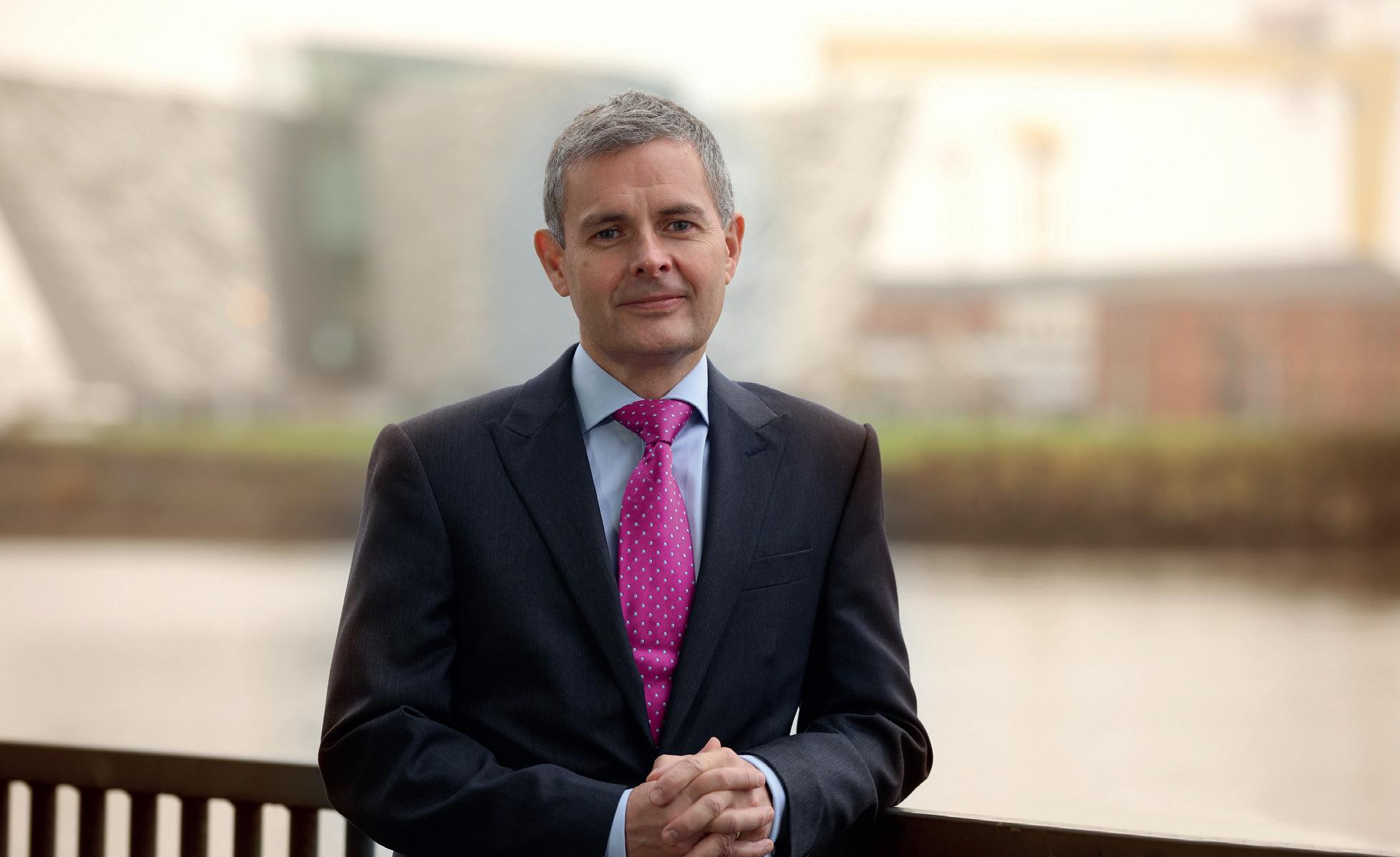
“Social impact is inherent in the work we do across health and welfare. Across our contracts, we are placing people into work, transforming NHS services and we are ensuring vulnerable people are getting access to key financial support. It is critical work.
“Clearly, processes need to be properly defined, executed and controlled, but we cannot lose sight of the fact that we are interacting with people who are going through challenging and, in some cases, distressing circumstances,” says King.
Delivering
Take the Personal Independence Payment (PIP) contract, which Capita has delivered on behalf of the Department for Communities (DfC)

across Northern Ireland for six years. Their 200-strong team of healthcare professionals is made up of former paramedics, physiotherapists, occupational therapists and nurses who have conducted over 300,000 assessments to date.
“Our healthcare professionals bring their empathy and compassion from the wards to the PIP experience. Our customer satisfaction levels are well over 95 per cent and a lot of that is down to the interaction the individual has had with our
against society’s big challenges
72
Managing services that deal directly with vulnerable citizens brings huge responsibility, even more so in the current climate. Antony King, Managing Director and Client Partner at Capita’s Health and Welfare business, shares how the human traits of empathy and compassion must always be at the heart of service delivery.
health and care services report
healthcare professional on the day. They tell us they were put at ease or felt able to talk freely about their disability. This means we will deliver a better service and the Department for Communities will be better able to make a fair and accurate decision on somebody’s PIP claim.”
And when Covid forced the government into lockdown measures, how did Capita ensure vulnerable people could still access the service?
“We had to do whatever it took to protect claimants and our colleagues. In a week, we stood up an operation, in partnership with the Department for Communities, that enabled us to assess people over the telephone. This has since prompted a pilot to explore the viability of video assessments. Offering a multi-channel service means we can interact with claimants in a way that best suits their needs and reduce undue anxiety.”
Putting citizens at the heart of our service
More recently, Capita has been supporting the Victims’ Payments Board (VPB) to design and deliver the Troubles Permanent Disablement Payment Scheme (TPDPS) disablement assessment process. The scheme is designed to acknowledge the harm suffered by those injured in Troubles related incidents during the conflict, and to aid reconciliation between people and communities following Northern Ireland’s past.
Following an international review, it was established that there was no model or blueprint to follow and, given the scale and unique nature of the clinical challenge and socio-political context presented, it demanded a bespoke solution that would sensitively and fairly deliver the necessary outcomes, and crucially, endeavour not to re-traumatise individuals going through the process.
“Alongside the VPB, we were clear that this had to be a wholly victim-centric approach. We collaborated with leading trauma and ‘Troubles’ experts from QUB, UU and Harvard University to research and design the process. We also worked closely with specialist stakeholder groups, such as WAVE Trauma Centre, which delivers specialist trauma training for our TPDPS clinical assessors. We
Capita in Northern Ireland
• Capita is a major investor and employer in Northern Ireland, currently employing over 1,800 people;
• Capita is a Disability Confident Leader; and
• the business supports key public services in Northern Ireland within health and social care, education, agriculture and infrastructure, as well as for other public bodies including the BBC.

also engaged with external specialists in disability assessment medicine.”
This input has been invaluable and acted upon by the Capita team, which is led by healthcare professionals. For instance, anybody applying for TPDPS and requiring an assessment of their permanent disablement will be assigned to one clinical assessor for the entire assessment journey. This avoids the need to potentially recall and repeat distressing information to multiple people.
Not standing still
These contracts are complex, high profile and subject to a lot of scrutiny. They are also bound by policies, regulations and the obvious budget controls, but at the centre of each case is an individual.
“That is why we do not stand still,” King says. “We will keep learning and keep
improving; using our experience to redefine how the private sector can deliver key public services in a compassionate and empathetic way. That has to be an imperative as demand for those services is only going to increase.
“I am immensely proud of the work we do and the positive difference we make every day, which sets us apart from the stereotypical corporate. As a trusted partner to government, we deeply care about the role we play and never forget that it is the public at large whom we serve.”
For more information on Capita’s health and welfare operations visit: www.capita.com/expertise/industryspecific-services/welfare
“We will keep learning and keep improving; using our experience to redefine how the private sector can deliver key public services in a compassionate and empathetic way.”
73 health and care services report
health and care services report
Challenges in moving to a permanent digital delivery model for health
Following the publication of Northern Ireland’s Health and Social Care Digital Vision and Strategy, the Department of Health’s Chief Digital Information Officer, Dan West, discusses prioritisation, finance, and workforce capacity.
Identifying a major obstacle to the delivery of a permanent digital delivery model in health and social care in the shape of a projected £540 million overspend in the budget, West says a further challenge will be the need for more streamlined policy direction.
Northern Ireland is unique in the UK and across most of western Europe in having a fully integrated health and social care system with a funding scheme that comes to “provider organisations that have both halves of the health and social care equation”.
The overarching strategy is the Digital Strategy for Health and Social Care, published in May 2022, which he believes has benefitted from the digital innovations which were made during the Covid lockdowns, although there are further challenges to be tackled.

West explains that the Department of Health has been focused on the development of an implementation plan, developing further engagement, and prioritisation.
Drawing on the lessons from the feedback, he further states: “We need to get better at using digital technology, better at using data, and using research and innovation. All of those things are good, but people are concerned about our ability to execute.”
74
Departmental policy priorities
West believes that there are too many overarching priorities from the various health strategies which have the potential to cause confusion among staff and patients, which will potentially further curtail the progress made on the digital side.
“If you are trying to do everything, and everything is treated as a priority, then nothing is truly a priority and it is very hard to do the small number of impactful things which will set us on the way through this journey. We need to get better at prioritising what we are asking of the service, what we are asking of our population, and what we are asking of our staff over the next few years.”
Strategic investment
West says that there is a need to prioritise current investment more strategically if a digital transformation is to be achieved.
“The capital plan for the HSC includes the digital strategy strand of the investment portfolio. It thinks as much about how we build hospitals and build capacity, resulting in a problem with capital availability due to the number of conflicting strategies and aims and objectives.
“Within that portfolio is evaluation of some of the things which worked during the Covid crisis, such as agile delivery and smartphone apps. All of that needs to be part of our plan going forward, and maintained whilst learning from some of the difficulties that we faced in and beyond the Covid pandemic.”
There are further challenges with funding, West states: “We have to recognise the current funding with the broad political context in which we sit and think about health and social care and its budgets for this year. We are £540 million overspent in our budget for 2022.”
West states that the funding gap needs to be rectified if the digital transformation is to take place. “It is further difficult to maintain focus on transformation so that we can hand the health and care sector to our children’s generation without it being bankrupt.”
Workforce capacity and immediate priorities
The digital transformation will require a change in the direction received among all staff, as well as clear departmental guidance.
“Our digital capacity is really important, ensuring that we have the people with the right skills, the right number of people to deliver the programmes, and also asking how we build the digital capability across the whole workforce and how do we deliver these tools and capabilities so that staff are able to use and embrace them and give staff the ability to use them at the top of their licence.
“We also need to think about the broader workforce size and capacity in how we deliver health and care and how we can optimise use of the clinical and multidisciplinary resources in delivering the best care outcomes, whilst training new doctors and nurses – even if we do not have the money to do that – is something that is going to take some time.”

West further states that undergoing this transformation must work in tandem with the task of enduring the predicted winter crisis in the health service, given the rise in flu, Northern Ireland’s higher per capita level of respiratory illness than most European countries, and the again-increasing levels of Covid.
“We cannot just focus on transformation; we have to keep the lights on in our organisations and keep delivering high quality care and clinical services to our patients and those who need it most. Doing that is hard and doing that whilst doing transformation is hard.”
75 health and care services report
“We need to get better at prioritising what we are asking of the service, what we are asking of our population, and what we are asking of our staff over the next few years.”
health and care services report
Department of Health announces mental health strategy delivery plan
Although it could be curtailed due to the absence of an Executive for the foreseeable future, the Department of Health has released its implementation plan for the Mental Health Strategy for this decade.

The plan outlines the 35 actions to be achieved over the next two years, in order to facilitate the implementation of the Mental Health Strategy, the stated aim of which is to “promote mental wellbeing, resilience and good mental health across society, provide the right support at the right time, and find new ways of working”.
The plan is accompanied by a funding plan, which outlines an implementation cost of £1.2 billion over the next 10 years. The source of this funding is not clear, especially as the health budget has already been critiqued by officials in the Department of Health as requiring a further £400 million “just to stand still”.
The latest draft health budget allocated £6 billion to health spending per annum. Given that the figure of £1.2 billion is for the 10 year period, “the funding for mental health will only account for 2 per cent of the overall health budget over the next 10 years.”
Mental health funding in Northern Ireland is 30 per cent less than that in England and Scotland, as a proportion of population, despite the prevalence of mental illness being 20 per cent higher in Northern Ireland than both of those estates.
76
Funding gap
Without the formation of an Executive in Northern Ireland, the Mental Health Strategy may not be able to be fully implemented, as acknowledged by the report itself.
“In light of the significant financial challenges across the health and social care system, it is not possible to fund this level of implementation from within the Department of Health’s existing resources”, the report states.
It continues: “A significant level of additional and sustained funding is therefore required in order to implement the strategic improvements outlined in the strategy and to address the challenges facing mental health services.”
Actions currently in progress
The document, despite the funding gap, outlines the actions which are currently being undertaken to facilitate the implementation of the Mental Health Strategy for the decade.
One action is the creation of an action plan for promoting mental health through early intervention and prevention and increasing public awareness to reduce perceptions of stigma. The document further states that action is underway to create clear and regionally consistent urgent emergency and crisis services for children and young people that will work together with crisis services for adult mental health.
Additionally, plans are underway to create a Regional Mental Health Crisis Service that is fully integrated in mental health services and which will provide help and support for persons in mental health or suicidal crisis.
There are ambitions to enhance the role of existing services, including the provision of personality disorder services regionally through the formation of a Personality Disorder Managed Care Network, as well as enhancing the regional eating disorder service.
health and care services report
The document lists a further three development priorities, the first of which is a regional mental health service, operating across the five HSC Trusts, with regional professional leadership that is responsible for consistency in service delivery and development.
Secondly, there are ambitions to establish a comprehensive workforce review considering existing workforce need, training, and development of new workforce, such as allied health professions, therapists, and physician associates.
In addition, there is the immediate ambition of establishing a regional outcomes framework in collaboration with service users and professionals, to underpin and drive service development, and delivery.
Other actions for delivery
These proposed actions are based on the responses received in the consultations process when the Mental Health Strategy was in draft form. The aim is to maximise the use of digital resources which was driven forward and encouraged by the Covid-19 pandemic, according to the document.
The expansion of therapy hubs, which are resourced sustainably, to ensure Northern Ireland-wide coverage, with the hubs to be managed by primary care and linked with the wider work on establishing mental health as an integral part of the primary care multi-disciplinary team.
There are furthermore ambitions to introduce a dedicated student mental health resource across tertiary education through the delivery of existing mental health services.
The plan outlines ambitions to increase the funding for children and adolescent mental health services (CAMHS) to 10 per cent of adult mental health funding and improve the delivery of the stepped care model to ensure it meets the needs of young people, their families and their support networks.
Ensuring that the needs of infants are met in mental health services is a further ambition outlined in the document, in addition to meeting the needs of vulnerable children and young people when developing and improving CAMHS, putting in place a ‘no wrong door’ approach.
Given that there is no sitting Executive, in addition to the existing funding gap in the health budget, whether this strategy will be implemented remains an open question.
77
The funding for mental health will only account for 2 per cent of the overall health budget over the next 10 years.
Health inequality remains wide in Northern Ireland

A report by the Department of Health has found that, between 2018 and 2020, the gap in life expectancy between the region’s most prosperous areas and its most economically deprived areas remained high, with a gap of almost seven years for men and five years for women.
The report is a study which examines the impact of social deprivation on health outcomes, determining whether there is a correlation between economic prosperity by area and health outcomes in each area.
The regional equality gaps take this into account by measuring the health outcomes of the 20 per cent most economically deprived areas with those of the 20 per cent most economically prosperous areas in Northern Ireland.
Diseases
Having covered the year 2020, the study was able to take account of some of the deaths from Covid-19 in Northern Ireland, and found that there was a relatively wide health inequality gap, with deaths from Covid-19 more prevalent in the least economically prosperous areas of Northern Ireland to the tune of 25 per cent.
The report additionally found that the largest inequality gap was observed for admissions due to respiratory diseases, with the rate in the most deprived areas more than double that of the least deprived, for all ages and for those aged under 75 years.
Furthermore, although the gap for cancer remained the same, rates went up for people of all economic backgrounds throughout the period.
Life expectancy gap
The report finds that, between the periods 2014-16 and 2018-20, there was no change in male healthy life expectancy in Northern Ireland’s least deprived areas, however there was an improvement in the most deprived areas. Over the same period, there was no change in female healthy life expectancy across all areas.
Life expectancy for citizens who have no disabilities increased in Northern Ireland for both males and females, although there was no notable change in most and least deprived areas or the deprivation gap for either gender.
“Premature mortality rates either decreased over the aforementioned period in the most and least deprived areas or showed no notable change,” the report states.

It continues: “The exception to this was preventable mortality, which increased in Northern Ireland, however, large inequality gaps continue to persist, with the rate of respiratory mortality among under 75s in the most deprived areas over three-and-a-half-times that in the least deprived.”
Across indicators of premature mortality, the inequality gaps remained fairly static, with a few exceptions where gaps narrowed, most notably treatable mortality.
The infant mortality gap remained fairly static, but likewise an infant born in one of Northern Ireland’s economically deprived areas is 39 per cent more likely to die than one born in an economically prosperous area.
Mental health inequality
Although the mental health equality gap reduced in the period between 2018 and 2020, compared with the period between 2014 and 2016, the gap remains large. The study found that people from an economically deprived area are 186 per cent more likely to have self-harmed, compared with someone from an economically prosperous area.
Incidents of anxiety and low mood remained virtually identical in all areas, with an equality gap of 67 per cent recorded between Northern Ireland’s most deprived and prosperous areas.
The report further found that indicators related to alcohol and drugs showed among the highest levels of health inequalities in the region with rates in the most deprived areas over four-anda-half-times that in the least deprived for drug related mortality and four-times that for alcohol specific mortality.
Furthermore, there was a 306 per cent equality gap in alcohol-related illness. This figure was recorded over a four year period between 2016 and 2020.
78
health and care services report

74.5 74.2 74.6 74.7 74.5 78.5 78.5 78.7 78.8 78.7 81.1 81.3 81.7 81.6 81.3 70.0 72.0 74.0 76.0 78.0 80.0 82.0 84.0 2014-162015-172016-182017-192018-20 ) s r a e Y ( h t r i B t a y c n a t c e p x E e f L Most Deprived Northern Ireland Least Deprived 6.6 7.1 7.1 7.0 6.9 0.0 2.0 4.0 6.0 8.0 10.0
Gap
4.5 4.5 4.4 4.8 5.0 0.0 2.0 4.0 6.0 8.0 10.0
Gap
79.6 79.6 79.7 79.6 79.3 82.3 82.3 82.4 82.6 82.4 84.1 84.1 84.1 84.5 84.3 74.0 76.0 78.0 80.0 82.0 84.0 86.0 2014-162015-172016-182017-192018-20 ) s r a e Y ( h t r i B t a y c n a t c e p x E e f i L Most Deprived Northern Ireland Male Life Expectancy at Birth NI Female Life Expectancy at Birth NI MD LD MD LD Least Deprived Standardised Admission Rate – Self-Harm NI 335 290 251 220 198 173 154 136 123 117 94 83 74 70 69 0 50 100 150 200 250 300 350 400 12/1316/17 13/1417/18 14/1518/19 15/1619/20 16/1720/21 n o i t a l u p o p 0 0 0 , 0 0 1 r e p s n o i s s i m d A Most Deprived Northern Ireland Least Deprived 255% 251% 239% 215% 186% 0% 100% 200% 300% 400% 12/1316/17 13/1417/18 14/1518/19 15/1619/20 16/1720/21 Gap (%) Most-Least Deprived MD LD Infant Mortality Rate NI 5.2 5.2 4.8 5.3 5.2 4.5 4.6 4.5 4.6 4.4 4.5 4.4 4.3 3.7 3.7 0 1 2 3 4 5 6 2012-162013-172014-182015-192016-20 s h t r i b e v l 0 0 0 , 1 r e p s h t a e D Most Deprived Northern Ireland Least Deprived 16% 18% 12% 45% 39% 0% 10% 20% 30% 40% 50% 2012-162013-172014-182015-192016-20 Gap (%) Most-Least Deprived MD LD 79 health and care services report Source: Health Inequalities, Annual Report 2022.
2014-162015-172016-182017-192018-20
(Years) Most-Least Deprived
2014-162015-172016-182017-192018-20
(Years) Most-Least Deprived
health and care services report
Technology’s role in assisting Northern Ireland’s carers
Technology can play a vital role in alleviating
pressures on carers and addressing loneliness, says Ulster University’s Joan Condell.
The Community Renewal Fund eCareWell project began in November 2021, and will run throughout the duration of 2022. Researchers at Ulster University are working in partnership with the Design Innovation and Assisted Living Centre, the Health Innovation Research Alliance Northern Ireland (HIRANI), Digital Catapult NI, as well as several charities and local community groups.
Condell, who is a professor at Ulster University’s Intelligent Systems Research Centre, explains that the project’s participants are generally made up of carers who have a thirdlevel qualification, with people of varying levels of care requirements.
19 technologies in the eCareWell project
Nineteen technological devices and/or apps are being piloted to establish the effectiveness of Northern Ireland companies products for carers in communities. These technologies are wearables, virtual reality, apps, and supporting devices. The project encompasses a variety of care settings, from carers who live with the patient, to people caring for parents, and parents caring for a child who requires care.
The wearable devices are NeuroValens, B-Secur, ActionSense, Maragoo, and SkinAkin. These devices are able to pick up on sensory motion, heart beats, and other important health concerns, for the purpose of ensuring that a carer who may not physically be with the person for whom they are caring. It also eases the process of establishing the progress or health decline of the person being cared for, and can be used for patients of all ages, whether children or elderly.
The virtual reality devices are Inclusiv and eXRT, which can be used to encourage sensory stimulation, particularly useful for people who suffer from dementia.

80
Technology usage
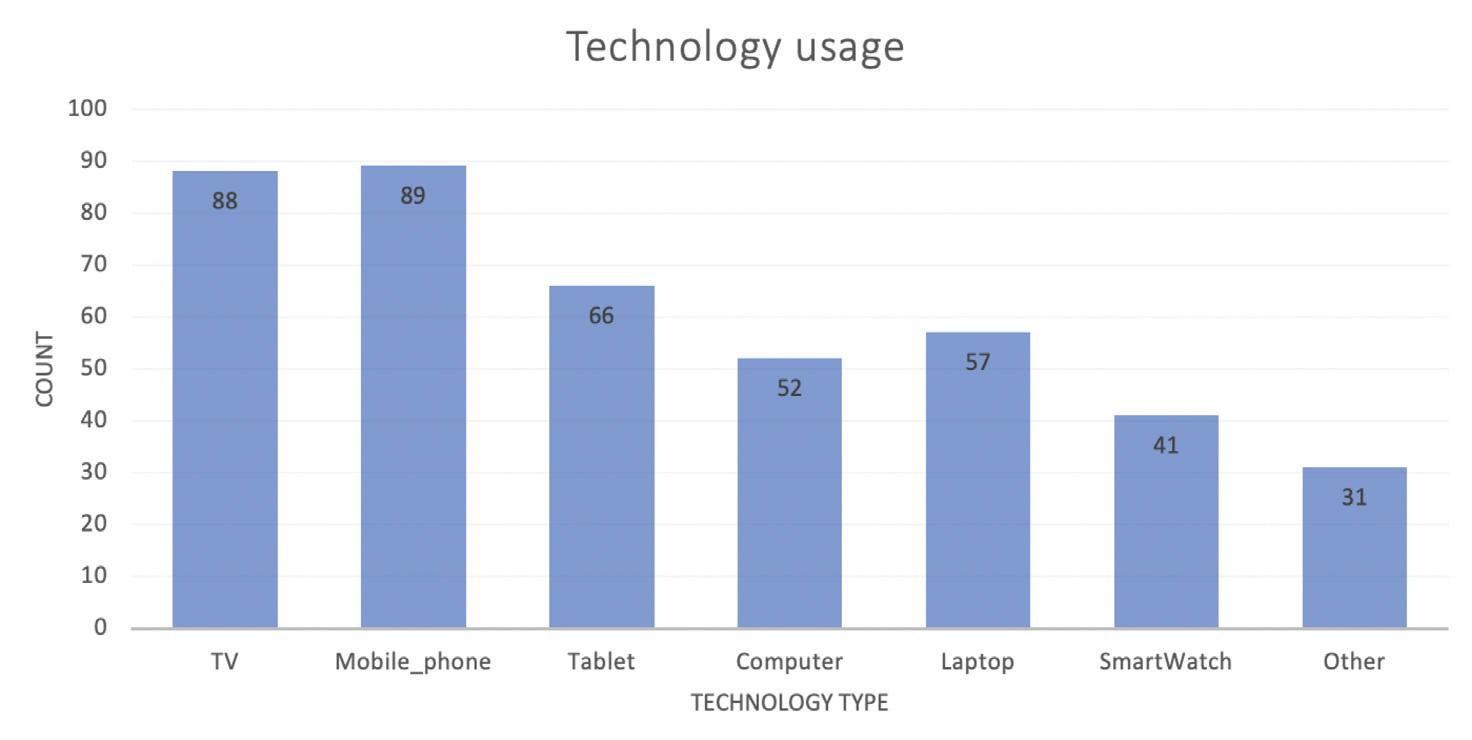
Additionally, there are a wide range of smart communication apps with supporting devices, which can be linked up to televisions, smartphones, tablets, or computers, which are able to ease the communication and anxiety burdens of carers who are not physically able to be with the person they are caring for.
“If someone is caring for someone, and they cannot get out of the hairdressers or the grocery shop, we have video technology which can facilitate the carer in getting that relief, exit, or space for themselves; knowing that the person they are caring for is well and content whilst they take some respite.”
Homes for Healthy Ageing
Condell outlines: “In Northern Ireland, there is a strong motivation to improve the care of older adults. One thing that Covid encouraged us to do was to reconnect and engage closer again with our international families and/or friends, anyone that it might be difficult to keep in touch with geographically. The development of these technologies can allow all people to keep in touch with their relatives in care, via video.”
In order to tackle this challenge, Condell explains that she created a consortium in 2021 to apply for the Homes for Healthy Ageing Challenge set out by Connected Places Catapult. The Northern Ireland Consortium delivered a multi-site testbed that encompassed real world urban and rural settings focused on reducing social isolation.
In the testbed, cohorts of over 65-year-olds were engaged with to identify innovative ways of enhancing social connectedness in our ageing population.
She further outlines that some of the aspects that has previously been seen as challenges, such as rural access to WiFi and the willingness of older people to use technological devices, had not been as challenging as initially feared in both the Homes for Healthy Ageing and the eCareWell projects.
Successes and challenges
Condell emphasises the wider need for a loneliness strategy to be established in Northern Ireland, a challenge for the dormont Northern Ireland Executive.
The UU professor further states that there needs to be more engagement with a wider variety of stakeholders, in order to ensure that there is sufficient level of understanding of the complexity of the needs of those cared for, and those who are carers.
There is promise in that older people who have taken part in the project have expressed satisfaction with the project, and are willing to engage in such projects in order to improve their quality of life.
Furthermore, those older people who do not regularly use technological devices were generally able to rely on others in their circles for assistance with such devices, as well as being supported by the Ulster research team on a weekly basis.
However, ensuring that those who are socially isolated are able to avail of such technology will be key to ensuring that quality of life can be improved for all adults in care.
81
health and care services report
TV Mobile phone Tablet Computer TECHNOLOGY TYPE
Laptop SmartWatch Other
GP surgeries at risk
“Local doctors’ surgeries are the first point of call for the vast majority of medical and mental health concerns. A plan that would divert patients down more accessible routes to the services they need should be considered to ease the pressure that is adding to the number of doctors retiring or leaving the profession sooner than they had planned.”
In September 2022, then Health Minister Swann announced a £5.5 million package of measures designed to help ease the pressures facing primary care services across Northern Ireland.
“This package provides targeted help to parts of the service that are most under pressure by investing £1 million in a new attract, recruit, retain scheme to help attract GPs in hard-to-recruit areas. It also boosts the support team for GP practices who are experiencing difficulty by an additional £680,000,” Swann established.
Former Health Minister Robin Swann MLA confirmed that as of the end of September 2022, 16 GPs surgeries were considered to be at risk of closure across Northern Ireland.
Responding to an Assembly question by independent MLA Claire Sugden asking for details on such risks, the former Health Minister said that while reasons varied, some identified risks were those of “staffing difficulties, workload pressures and issues with the fabric/size of premises”.
In recent years the number of GP surgeries in Northern Ireland has been declining, in contrast to rising levels of registered patients.
In June 2022, the BBC reported figures it attained from the Department of Health which showed an almost 10 per cent decline in the number of GP practices in Northern Ireland in just eight years.
At the end of March 2022, there were 310 surgeries in Northern Ireland compared to 350 recorded in 2014. In the same timeframe, the number of registered patients per practice has
risen by around 15 per cent to 6,340. Despite the decrease in practices, the number of GPs, excluding locums, has risen by 20 per cent to 1,419 since 2014.
It is widely recognised that closures of GP surgeries have wider impacts on neighbouring surgeries and their capacity to meet local demand.
Sugden described the figure of 16 practices at risk of closure as pointing to “systemic failure”. The MLA said the potential closures were a result of longterm under-investment and could take years to rectify.
“GPs are under enormous pressure at the moment,” says Sugden. “People still find it very difficult to get a face-to-face appointment, which has led to many constituents contacting my office for help.
“If patients cannot get a doctors’ appointment then they are much more likely to attend our already stretched accident and emergency departments. Delays also have a big impact on the outcomes of more serious illnesses.

In addition, it also includes investment of £3 million to support practices across Northern Ireland through the winter 2022/2023 period, giving them the capacity to provide additional in-hours sessions to help meet heightened demand through the winter; up to £800,000 additional investment in out of hours services; and a commitment to progress work to address the issue of GP indemnity.
The former Health Minister also pointed to the convening of a working group to explore issues around access to services, including how technology can be better used to provide improved access for patients, with an initial report from the group scheduled for the autumn.
While welcoming the investment, Sugden says that some tangible benefits may take years and pointed to an urgency to “save these at-risk surgeries while we can”.
“I have called many times for a largescale revision of how our healthcare system is delivered. More money will always help, but we also need the appropriate structures and policies in place that will enable the best care to be delivered as soon as possible to everyone who needs it,” she says.
82
services report
Staffing difficulties, workload pressures, and inadequate premises are some of the challenges putting GP surgeries at risk in Northern Ireland.
health and care
The Shadow Secretary of State
In September 2022, Kyle told the Labour Party conference that if Labour were to come to power, he would set out the criteria for calling a border poll. While Kyle failed to give any further detail on what such a criteria might look like, his pledge that he “would not play games” if the circumstances emerge as set out in the Good Friday Agreement, raised the eyebrows of those who see the Conservative Party’s appeal to the electorate declining.

Kyle, whose intervention was described as “unhelpful and illtimed” by Ulster Unionist Party leader Doug Beattie MLA, did stress that the results of the census showing that Catholics now outnumbered Protestants in Northern Ireland would not suffice, adding: “When we move towards the point where those circumstances set out in the Good Friday Agreement start to emerge and it becomes a priority for the people of Northern Ireland, I will act.”
While far from a foregone conclusion, the post-Brexit, post-Boris Johnson appeal of the Conservative Party appears much lower than when they swept to power in 2019. The next General Election is not scheduled until January 2025, but economic circumstances of late suggest one could be called much sooner. The possibility of Kyle being a future Secretary of State for Northern Ireland in the coming years is not unthinkable. So who is he?
Kyle is an MP for Hove, having originally been elected in 2015. In
opposition he has previously been charged with shadowing the education and justice portfolios.
Having worked as an aid worker in eastern Europe and the Balkans, Kyle then moved on to work as a policymaker in the Cabinet Office, with a focus on social exclusion. Prior to being elected he was deputy Chief Executive of ACEVO, an umbrella body for the voluntary sector, and head of youth employment charity Working for Youth.
An avid remainer, in 2019 Kyle proposed an amendment to thenPrime Minister Theresa May’s Withdrawal Agreement Bill that would see the Bill approved on the basis of a return to the public for a confirmatory vote. Although falling short of support, on its second attempt the amendment was just 12 votes short of passing and Kyle advocated the position become Labour policy.
Kyle, who was appointed a vice-chair of Labour Friends of Israel in September 2020, supported Owen Smith MP in his failed attempt to replace Jeremy Corbyn MP in 2016 and called for Corbyn to resign following the 2019 General Election. He initially backed Jess Philips MP to replace Corbyn before the Birmingham Yardley MP withdrew from the race.
Alongside the shadow secretary of state, official opposition in the Northern Ireland Office also includes shadow minister, Tonia Antoniazzi MP and shadow spokesperson, Angela Evans Smith, a member of the House of Lords.

83 public affairs agenda
public affairs agenda
Labour’s Peter Kyle MP was the subject of much attention recently when he stated that he would not hesitate to call a border poll if certain conditions were met, but who is the Shadow Secretary of State for Northern Ireland?
Weak correlation between campaign spending and electoral success
Figures released by the Electoral Commission have shown that, whilst all the largest parties spent relatively similar amounts, campaign spending did not necessarily translate into a higher amount of seats won in the Assembly election 2022.
The figures revealed that the single biggest spending party was the DUP, which spent £174,986.81 over the course of the election campaign.
Second place was Sinn Féin, which spent £166,667.26, followed fairly closely by the SDLP, which spent £149.844.62.
The Alliance Party was the only other party to spend a six-figure sum, having spent £112,711.25 during the election campaign, although they spent less than the combined totals of independent or other (parties outside the top 10 in spending) candidates.
The two other parties who managed to win seats, Traditional Unionist Voice and People Before Profit, spent £67,364.03 and £42,358.97 respectively.
Aontú, the anti-abortion republican party


which split from Sinn Féin in 2018, spent a total of £60,308.12, outspending People Before Profit and nearly matching Traditional Unionist Voice, despite not coming close to winning a seat in any constituency.
Spending by designation
By political designation, parties designated as unionist outspent the others, having spent a total of £379,497.87, taking into account the combined expenditure outlaid by the Democratic Unionist Party, the Ulster Unionist Party, Traditional Unionist Voice, and the Progressive Unionist Party. This figure does not include the spending by independent unionists Alex Easton MLA and Claire Sugden MLA.
Parties designated as nationalists, comprised of Sinn Féin, the SDLP, and
Aontú, spent a total of £376,830. This figure does not include smaller nationalist parties or independent candidates who wished to designate as nationalists.
The political parties who designate as ‘other’, the Alliance Party, the Green Party, and People Before Profit, spent a total of £194,395.45.
Spending by candidate
The candidate with the highest expenditure was SDLP Mid Ulster MLA Patsy McGlone, who had an outlay of £15,167.69.
He was followed by three candidates who were not successful in being elected, the SDLP’s candidate in Strangford, Conor Houston, Green Party candidate for Belfast South, Claire Bailey, and People Before Profit’s Foyle
84 public affairs agenda public affairs agenda
£1, 000 £2, 000 £3, 000 £4, 000 £5, 000 £6, 000 £7, 000 £8, 000
£0
Average spend per candidate in Assembly election 2022
£5, 832 89 £4, 901 98 £4, 696 30 £4, 954 34
£6, 811 12 £3, 385 50 £3, 545 48 £3, 532 16 £2, 183 24
£5, 025 68

DUP SinnFéin Alliance UUP SDLP Independents/others TUV PBP Green Party Aontú
candidate, Shaun Harkin, thus suggesting that there was not necessarily a strong correlation between party success and money spent.
Based on total spending divided by the number of candidates who ran in the election, the SDLP had the highest spend per candidate, having spent an average of £6,811 per candidate, although this only resulted in eight seats, making it only the fifth largest party.
They have the second highest average spend per Party candidate was the DUP, which spent £5,832.89, winning 25 seats and becoming the second largest party.
Perhaps surprisingly, the party with the third highest expenditure per candidate was Aontú, which, despite failing to win a single seat or even coming close to winning any seats, spent an average of £5,025.68 per candidate.
The Ulster Unionist Party, which won the fourth highest number of seats in the election, also had the fourth highest average campaign send per candidate, coming in at an average of £4,954.34.
It was followed by Sinn Féin, the largest party in the Assembly, which spent an average of £4,901.98, only the fifth highest figure for average spend per candidate.
Similarly notable was that the Alliance Party, which placed third at the polls, only recorded the sixth highest average expenditure per candidate, with a figure of £4,696.30.
Spending by political parties in Assembly election 2022
£150, 000
£100, 000
£50, 000
£0
£200, 000 D UP Sinn Féin SD LP U UP Allianc e Part y I ndependents /others T UV PBP Greens Aont ú
The two other parties who won representation in the Assembly, Traditional Unionist Voice and People Before Profit, recorded average spending per candidate figures of £3,545.48 and £3,532.16 respectively.
Successful candidates who spent the least
Although unionist parties had a higher overall spend than nationalists, five of the 10 successful candidates with the lowest expendatures were elected as unionists, whilst the remaining five were from the Alliance Party. No successful nationalist candidates were among the 10 lowest spending successful candidates.
Paula Bradshaw MLA, who was elected in Belfast South, spent £2,393.80 whilst her colleague Kellie Armstrong MLA, who was elected in North Down, spent £3,003.12.
The two successful independents, Claire Sugden MLA, who was elected in East Derry, and Alex Easton MLA, who was elected in North Down, were both among the lowest spending successful candidates, spending £3,819.52 and £3,528.82 respectively.
Ulster Unionist Party leader Doug Beattie MLA had the lowest spend out of all of the party leaders who were elected in May’s election, spending a total of £3,593.80 in his campaign in Upper Bann.
85 public affairs agenda public
affairs agenda
Undermining devolution
to Whitehall, rather than dividing them up to the devolved nations.
Criticism levelled at the move suggested a “power grab” had taken place, and argued that responsibility, which is not specifically reserved, not automatically passing to the devolved administrations, represents a roll back on devolution.
The post-Brexit expansion of UK Government departments in Northern Ireland could potentially undermine devolution, a senior MLA has stated.
The SDLP’s Matthew O’Toole MLA was commenting after the formal opening of the UK Government’s ‘hub’ in Belfast in October 2022.
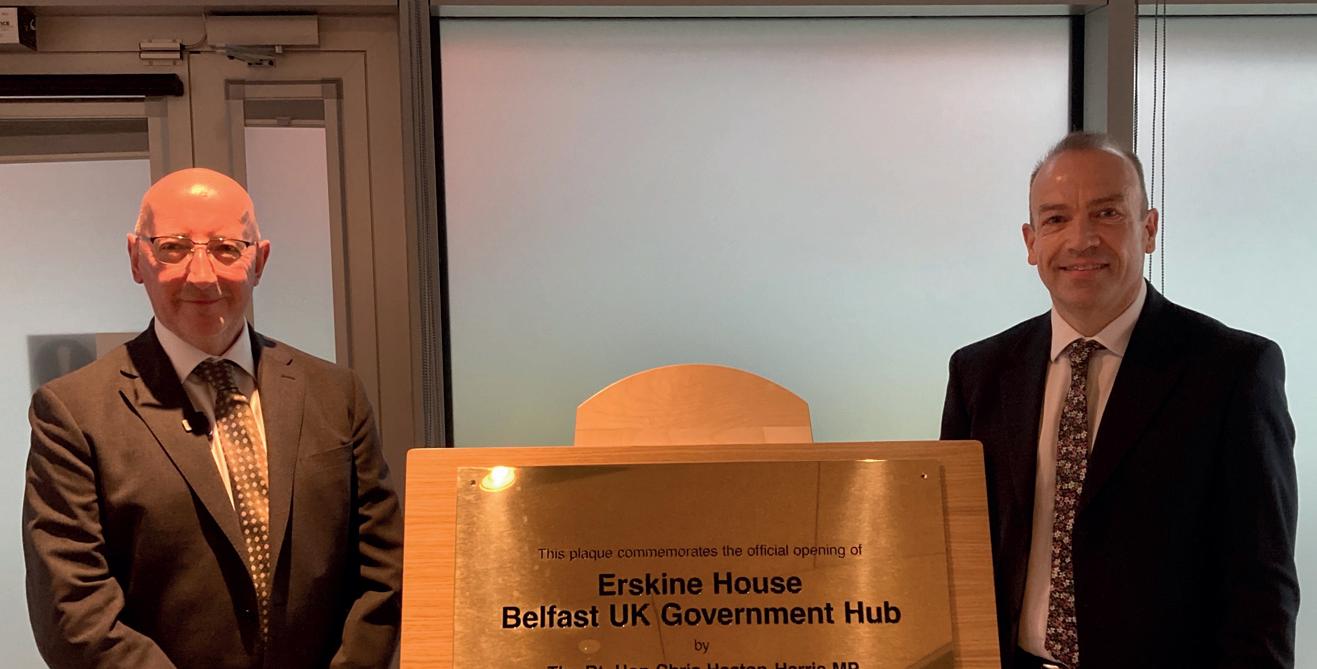
The eight-storey Erskine House, in Belfast’s Chichester Street, became home to approximately 100 Northern Ireland Office staff in February 2022, following an announcement that it was relocating away from Stormont to “become a more accessible, open and modern Civil Service department”.
The building, mostly occupied by approximately 2,000 staff of HMRC, is also home to the Competition and Markets Authority.
In March 2022, the UK Government’s Department of International Trade (DIT), became operational at Erskine House, describing itself as “a new government department in Northern Ireland”. The Department currently has fewer than 20 employees but plans to have up to 75 staff located in Belfast by 2030.
The UK Government has confirmed that there are around 20 Cabinet Office officials and 30 staff of the Department for Levelling Up, Housing and
Communities now operating at Erskine House.

agendaNi understands that the Cabinet Office presence includes senior figures from within Cabinet Office Finance, Civil Service, HR, and the Geospatial Commission.
Erskine House is one of four similar offices being established across the UK, following an announcement by then-UK Secretary of State for International Trade Liz Truss MP in 2021, with others in Darlington, Cardiff, and Edinburgh.
The UK Internal Market Act, signed into law in December 2020, centralised powers previously exercised in Brussels
The Internal Markets Act enables a UK Minister to provide “financial assistance for economic development etc”, out of money provided by Parliament, to a whole range of economic areas including infrastructure, housing, health facilities, and for economic development. This means that UK officials will have power to invest centralised levelling-up funding without the need for approval of devolved assemblies or ministers.
The SDLP’s Matthew O’Toole MLA commented on the move, describing it as “increasingly strange” to see UK departments with no direct remit for Northern Ireland setting up offices in Northern Ireland.
“The Northern Ireland Office has a role to play in the institutions here and it is important that they have a presence, but as a region with a devolved settlement I am concerned at the potential to undermine that.
“We have seen the UK Government pass legislation in the wake of Brexit which allows them to make decisions on devolved affairs without the approval of local ministers, so I do not have much faith that they are willing to respect [devolved] governments in other parts of the UK.”
UK Government departments present in Erskine House
HMRC: Approximately 2,000 employees
Northern Ireland Office: Approximately 100 employees Competition and Markets Authority: Fewer than 20 employees Cabinet Office: Fewer than 20 employees Department for International Trade: Fewer than 20 employees Department for Levelling Up, Housing and Communities: Fewer than 30 employees
Source: HMRC
86 public affairs agenda public affairs agenda
Jim Harra, HMRC’s First Permanent Secretary and Northern Ireland Secretary of State Chris Heaton-Harris MP at the formal opening of Erskine House.
Social Media Belfast 2022
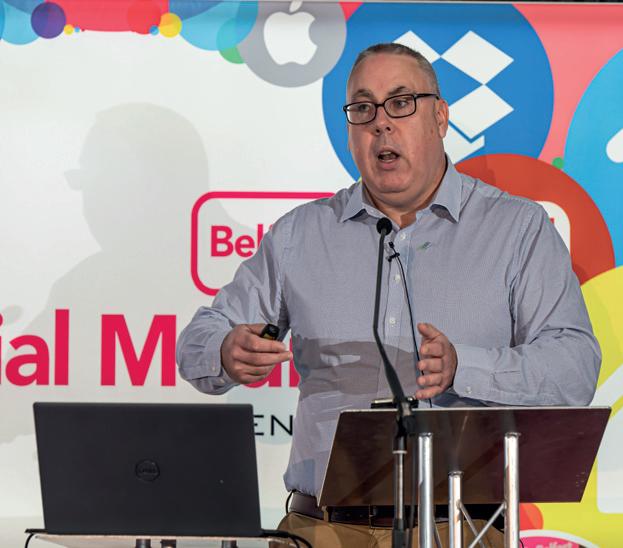


The eighth annual Social Media Belfast Conference took place in September 2022. The event is Northern Ireland’s leading social media event and brought together an excellent line up of social media experts both local and visiting to share their knowledge and examples of successful campaigns. A massive thank you to all speakers and delegates who joined us at the Europa Hotel and helped bring #SMBelfast to life across all social media channels and made the conference a huge success.



We have already started brainstorming for 2023. If you are interested in sponsoring, exhibiting or sharing your experiences as a speaker please do get in touch with the event director Fiona McCarthy at Fiona.McCarthy@agendani.com. Follow us on Twitter @agendani for all the latest information.

 Speakers: Jonathan Bell, UTV; Sarah Mason, Women’s Aid Federation Northern Ireland; Christine Murphy, The Open University; Nick Carson, Northern Health and Social Care Trust; and Paul McGarrity, Octave Digital.
Ciara Allen and David McLaughlin, Cedar.
Maeve Colgan, Cancer Focus NI with Ciarán Corr, Simon Community.
Christine Harding, The Open University with Jen Higgins, Abbey Autoline.
Speakers: Aimee Buckley, Belfast Exposed; Órlaith Grehan, St Patrick’s Mental Health Services; and Sharon Doherty, The Consumer Council.
The 2022 Social Media Belfast crowd.
Speakers: Jonathan Bell, UTV; Sarah Mason, Women’s Aid Federation Northern Ireland; Christine Murphy, The Open University; Nick Carson, Northern Health and Social Care Trust; and Paul McGarrity, Octave Digital.
Ciara Allen and David McLaughlin, Cedar.
Maeve Colgan, Cancer Focus NI with Ciarán Corr, Simon Community.
Christine Harding, The Open University with Jen Higgins, Abbey Autoline.
Speakers: Aimee Buckley, Belfast Exposed; Órlaith Grehan, St Patrick’s Mental Health Services; and Sharon Doherty, The Consumer Council.
The 2022 Social Media Belfast crowd.
87
Denis Tierney, Limerick City and County Council addressing the 2022 social media delegates.
conference report
(Dis)United Kingdom TRADE UNION DESK

There are several reasons why the UK is trailing the charts of every measure of a well-functioning economy and a fair and decent society, but among those which really needs to be addressed is rampant bad faith, writes the ICTU’s John O’Farrell.

For six years now, the ruling clique in Westminster and its outliers in the UK’s unique and strange mediapolitical complex have acted as if truth and lies are games to be decided by popularity rather than veracity. It has often felt like living in the reality of Lewis Carroll, believing ‘six impossible things before breakfast’.
There is a mutual reinforcement from people who believe in the same impossible things, but for reasons completely at variance. As the unicorn said to Alice: “If you’ll believe in me, I’ll believe in you. Is that a bargain?” Ergo, Prime Minister Elizabeth Truss MP.
A particularly slippery term overused lately has been ‘supply-side reforms’. Like ‘efficiencies’, it is a term which aims to conceal rather than reveal. This was outlined by her cheerleaders in the Briefings for Britain think-tank as “sweeping regulatory reforms across a range of industries and sectors – financial services, planning laws, childcare, agriculture, immigration and oil and gas”, and the retirement of “all EU laws by the end of 2023”.[1]
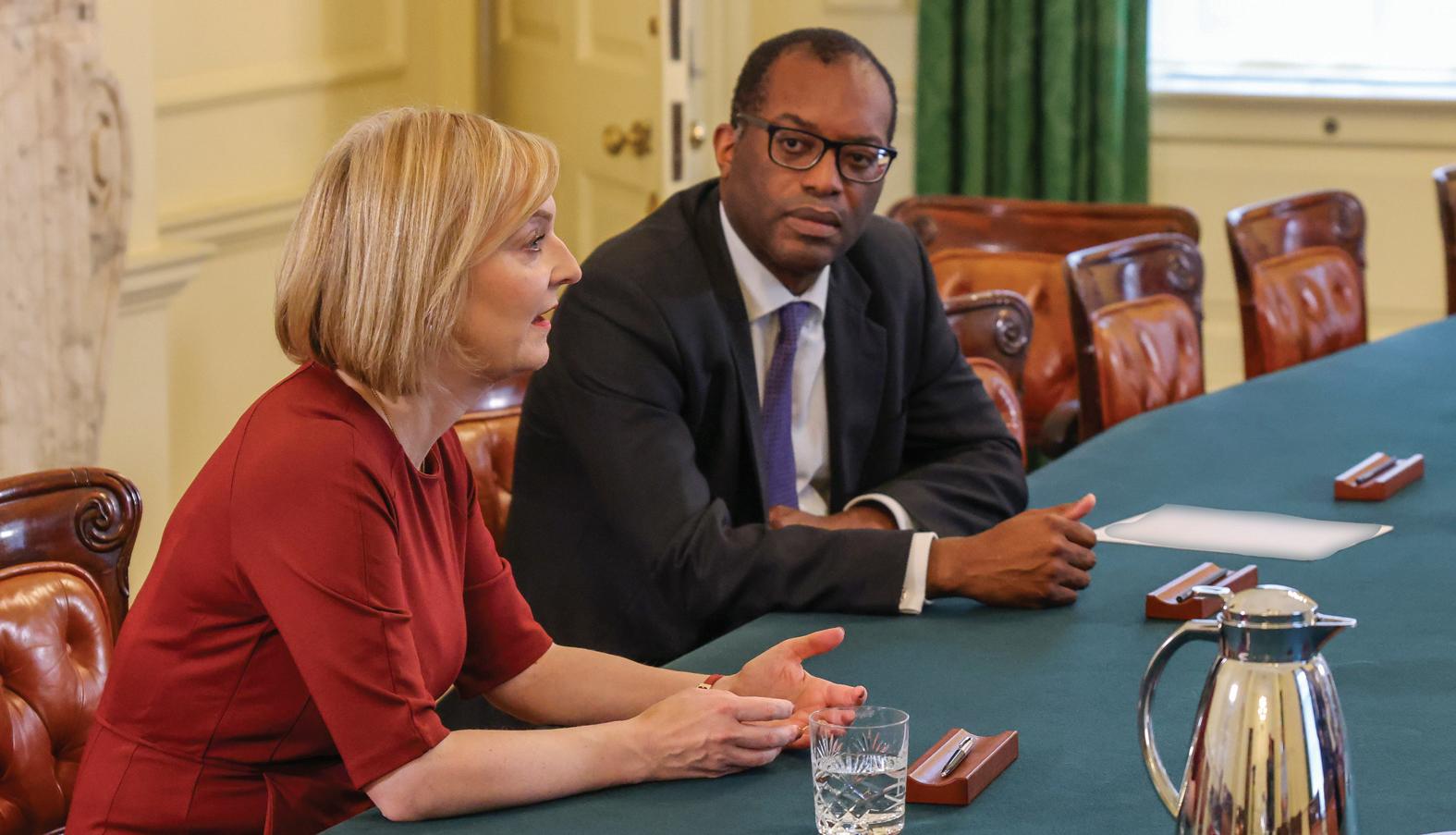
88 public affairs agenda public affairs agenda
Former Prime Minister Liz Truss MP and former Chancellor Kwasi Kwarteng MP.
In plain English, this would mean “scrapping free childcare hours, releasing green belt land for housing, abolishing corporation tax and dropping teacher training qualifications for graduates,”[2] admitted a plan from an offshoot of the Institute of Economic Affairs, unusually saying the quiet bit aloud. Just because Truss and her Chancellor Kwasi Kwarteng MP have been locked in the cellar of bad memories, it does not mean that her zombie economics are not still shuffling around.
The Sunak compromise is to find seats in the cabinet for most of the Tory fractions, and presumably policies which reflect that coalition, as they drag things out for two more years. So, bits of ‘reform’, but not so fast or deep as to alienate ‘our friends in t’North’. Some outsourcing for the donors, but no bigticket privatisations. The rest will be culture war noise to keep the ‘angries’ (un)happy, while quietly obeying the bond markets and preventing a property crash.

None of which will begin to address the state of the country. Productivity will remain lower than comparative economies. Social inequality will solidify. Brexit will continue to drag down growth. Little will be done to reverse climate change except as an incidental by-product of a declining economy. The UK will become ever more disunited.
In this corner of the UK, there are better things which can be achieved than another Northern Ireland Assembly election with a largely predictable result. On 10 October 2022, in Parliament Buildings, Stormont, the trade unions launched a united and workable plan of action which ought to be carried out by a restored Northern Ireland Executive. Among the key components of NIC-ICTU’s Workers Demand Better campaign[3] are:
• government support and resources to households, (prioritising those on fixed incomes and low to middle incomes) to assist them when it comes to the cost of energy over the next number of months;

• along with pay improvements in each workplace, we need to see the state address the social wage (universal public services, such as childcare, public transport and free school meals);
• governments need to engage with the trade union movement and start implementing progressive policies that support workers and their families. ICTU’s 2020 manifesto, No Going Back – A new deal towards a safe and secure future for all, has policies on taxation and investment which are close to the European norms; and
• a robust Northern Ireland Employment Bill that promotes workers’ rights and stronger collective bargaining, leading to better pay, which includes key elements of the recent EU Directive on an Adequate Minimum Wage, as a centrepiece in any Programme for Government of the Executive.
These are good faith and serious proposals, and were treated as such at the Stormont event by the leaderships of almost all of the parties who ought to be in the Executive. Progressive policies do not depend upon belief in unicorns. Be straight about the costs and be realistic about the results. The voters are all over 18. They can handle hard facts.
89 public affairs agenda
public affairs agenda
[1] Trussonomics Will Work if Supply Side Reforms Are Delivered Briefings For Britain [2] Revealed: rightwing ‘slash and burn’ ideas that could be blueprint for Truss | Conservatives | The Guardian [3] Workers Demand Better Campaign paper | ICTU NIC
Political Platform
Outline your background/career to date

I grew up and continue to live in Bangor. After studying politics and philosophy at Queen’s University Belfast, I began working with the Alliance Party in its Stormont office, a job I really loved. I then went to work for Chris Lyttle when he was the Alliance MLA for East Belfast and Chair of the Assembly Education Committee. I was then elected to Ards and North Down Borough Council in 2019 to represent Bangor West before being elected as an MLA in the 2022 Assembly Election.
Before all that, I worked for years in an off-licence in Bangor. That prepared me very well for my role as a councillor and then as an MLA. I think dealing directly with the public and doing customer service was a massive help. Being able to engage with the public is such an important aspect of being a politician.
What inspired you to get into politics?
When I was a teenager, I did not really know much about politics at all and my favourite subject at school was history. I studied politics at A-level because I was determined to know more about how the processes of policy and politics worked. I loved it and went on to study politics and philosophy at Queen’s. University helped me find out who I was and what I believed in.
Getting involved in party politics or the Alliance Party was not something I had considered much before leaving university, but activism really drew me into politics. I campaigned in the South for the repeal of the Eighth Amendment and for marriage equality in Northern Ireland. I was also a volunteer for Alliance for Choice.
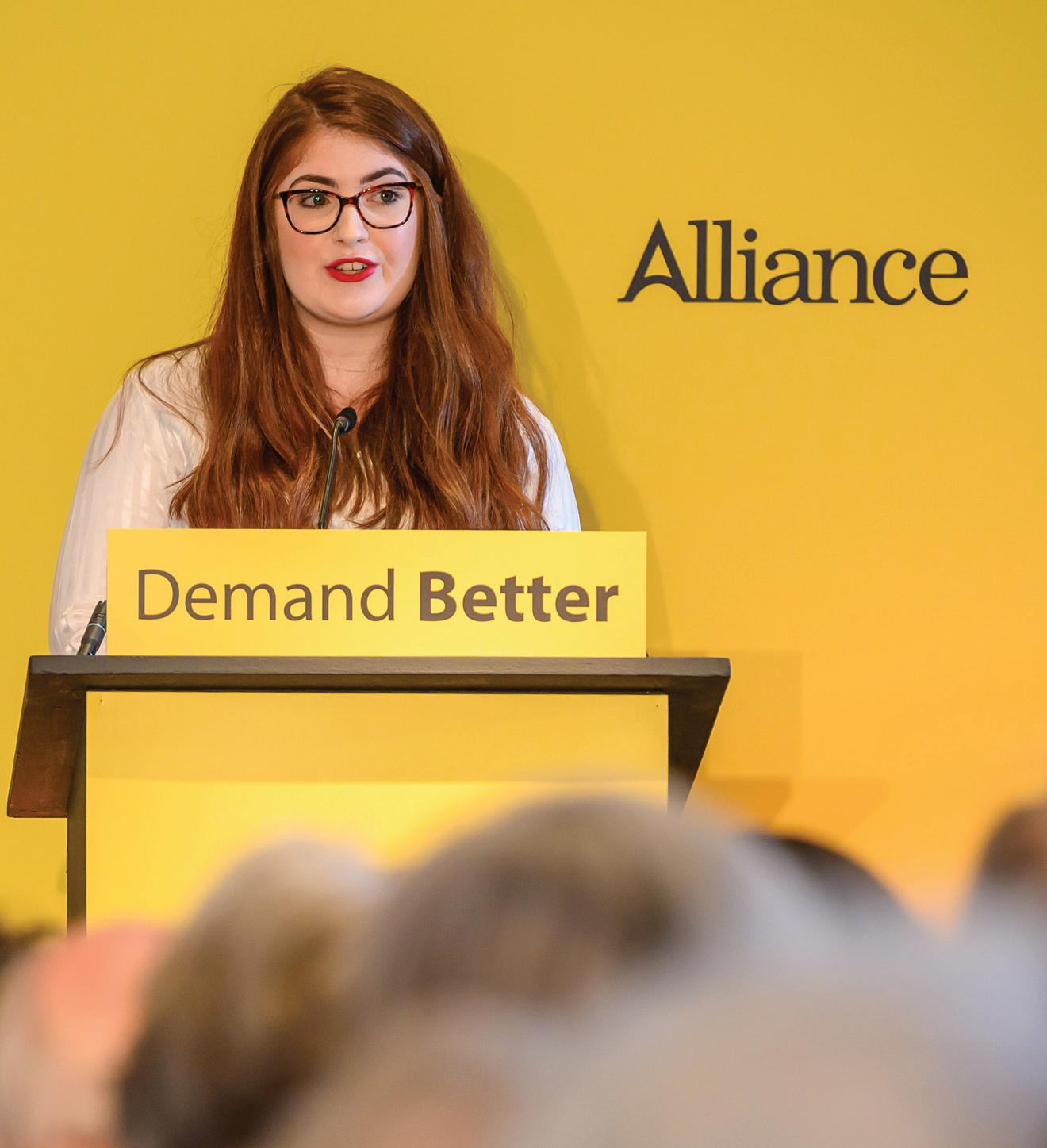
public affairs agenda 90 public affairs agenda
Elected in May 2022, Connie Egan is an MLA for North Down who cut her political teeth in campaigns for the repeal of the Eighth Amendment and marriage equality before representing the Alliance Party at council level.
Connie Egan MLA
Locally, Sylvia Herman, my former MP. I was inspired when she visited my school and told the whole class that any one of us here could do what she does. I remember thinking ‘there is no way, never in a million years could I do something like that,’ and yet, here I am as an elected MLA. That was an important moment in developing my desire to get into politics and I am grateful for her encouragement.
I also really admire Jacinda Ardern, the Prime Minister of New Zealand, and Sanna Marin, the Finnish Prime Minister. In leading their countries, these women have both demonstrated leadership, courage, and are inspiring examples to me of how important it is to have more women involved in politics.
What drew you to the Alliance Party?

Being involved in campaigns around equal marriage, reproductive rights, and other progressive issues, I knew I shared the same values as the Alliance Party. It was the positive, progressive vision of a more peaceful, reconciled Northern Ireland, and the hard work the Alliance Party were doing to make that a reality, that drew me to the party.
I got involved in campaigning with the Alliance Party during the many elections held between from 2016 and 2019. Then in 2019, council elections were coming up and Alliance were actually looking for a second candidate in Bangor West, which is where I have lived all my life. Members of the North Down Alliance Association asked me to stand and were really encouraging. Without their support, I do not think I would have done it. I got stuck in with the councillor who was already elected in the area. We started campaigning on local issues, things that I knew were important to the people living there. Delightedly, I got elected and topped the poll.
What are your key priorities for your constituency?
Encouraging and amplifying the voices of underrepresented people, particularly women and young people, is really important to me. I think if we look at the people who are elected in and sit in councils, Stormont, and Westminster they do not

accurately reflect the diversity of the society we live in. I believe that young people should be allowed to vote at 16 and should have a greater say in decision-making processes. I think that this generation is going to be most affected by the decisions that are being made today and they are going to have to live with the impact of these decisions. We have seen it with Brexit and we are seeing it now with climate change.
We must have their voices heard. I also think that the barriers for women entering politics need to be dealt with. Sexism, online abuse, lack of maternity leave; all of this puts women off getting involved and I really want to address those issues. More locally, I am passionate about seeing Bangor reach its potential. There are such exciting opportunities on the horizon with the development of Queen’s Parade and other major projects. The people of Bangor deserve to have a vibrant city centre and I am very keen to see progress on this in the years ahead. I am committed to being a positive, progressive voice for our increasingly diverse community and I see this as a really key part of my role as an MLA.
What are your interests outside work?
Living in North Down, I am very fortunate to live close to the coastal path and I really enjoy taking walks there. During the summer, I tried out and really enjoyed sea swimming, but I think I might take a break from that over the winter. I also play for Holywood Ladies FC when I get the time outside of politics.
91 public affairs agenda
public affairs agenda
Who do you admire in politics or public life/political role models?
A new script for mental health
If we do not flip the script around mental health, we will fail to ever get to grips with this spiralling crisis, one which is costing us all so dearly, writes organiser at PPR, Sara Boyce.

As human beings we make sense of our world through stories. Our understanding and world views grow from the stories we have been told within our families, community and wider society. The most powerful stories can be unspoken, but nonetheless are deeply embedded in our culture and society.
Sometimes though, the narratives that once held significant sway, no longer make sense to us and worse, we begin to see the harm they have caused.
Person-centred. Trauma-informed. Recovery-focused. These are often buzz words that are poorly reflected in mental health care. The medical, disease model continues to dominate the mental illness narrative.
This is evident in a year-on-year rise of between 3 and 5 per cent in prescribing of antidepressants in Northern Ireland, with an increase of 128,865 prescriptions for antidepressants in 2021 alone, despite no clear evidence for how they actually work.
It is high time that we ‘surface’ the story around mental health. We need to start a new conversation that does not begin with ‘What is wrong with you?’
This approach locates blame within individuals and reinforces a medical model such as the belief that mental health problems are caused by a chemical imbalance in the brain.
This dominant narrative brings with it much shame and blame for individuals. In essence it pathologises, depoliticises, and individualises emotional distress.
It also determines how mental health services respond, with the evidence on that score deeply concerning. For example, the annual spend on talking therapies amounts to roughly one-sixth of what is spent on medication.
The current mental health system’s priorities often run counter to the global trend, which recognises the need for community-based, non-medicalised responses to trauma and distress.
We all know the scale of mental health need and the huge issues facing anyone who tries to access help. Both are set to worsen in the aftermath of Covid and the current cost-of-living crisis.
Waiting lists continue to worsen; a 52 per cent increase since April 2021 in the number of children experiencing significant levels of emotional distress, who are waiting for help.
Individuals who bravely reach out for help, face a 10-minute online consultation with their GP, a prescription, and if fortunate enough, the offer of short-term counselling. Even when referred for a mental health assessment, people face further lengthy waiting times.
There have been calls for increased

funding of approximately 34 per cent, or £1.2 billion over 10 years for the implementation of the Mental Health Strategy.
Without question, mental health services have been starved of funding and must now be adequately resourced. Yet we know that our mental health crisis goes much deeper than funding alone.
Our response as a society must be rooted in human rights and trauma-informed principles of connection, compassion, community, and choice. We know that these are vital to healing when we experience emotional pain and trauma.
When a flower fails to bloom, we do not blame the flower. It is time to start addressing root causes. Injustices and inequalities; asking people what matters to them and developing relationships and spaces where people feel safe enough to talk about what happened to them.
It is time to have an open conversation about mental health. On Wednesday, 1 February 2023, in the MAC Belfast, we will launch New Script for Mental Health We would love you to join us and take part in this important conversation.
For more information contact Sara Boyce PPR sara@pprproject.org or 07864074235.
92 public affairs agenda public affairs agenda
































































































































































Email: gail.kinkead@agendaNi.com Tel: 028 9261 9933 Web: www.agendaNi.com 3 Corporate advertising and advertorial profiles 3 Front cover feature profiles Contact our advertising team to discuss profile opportunities including: 3 Sponsorship of special reports 3 Roundtable discussions Upcoming reports in the next issues of agenda Special reports: Digital government • Justice • Business & Economy • Public Service Reform • Health • Education • Public Policy • Public Affairs • North/South • Westminster • Voluntary & Community • Assembly Round-up • Media Profile • People Each issue of agendaNi will cover a wide range of issues, sectors and regular features including:

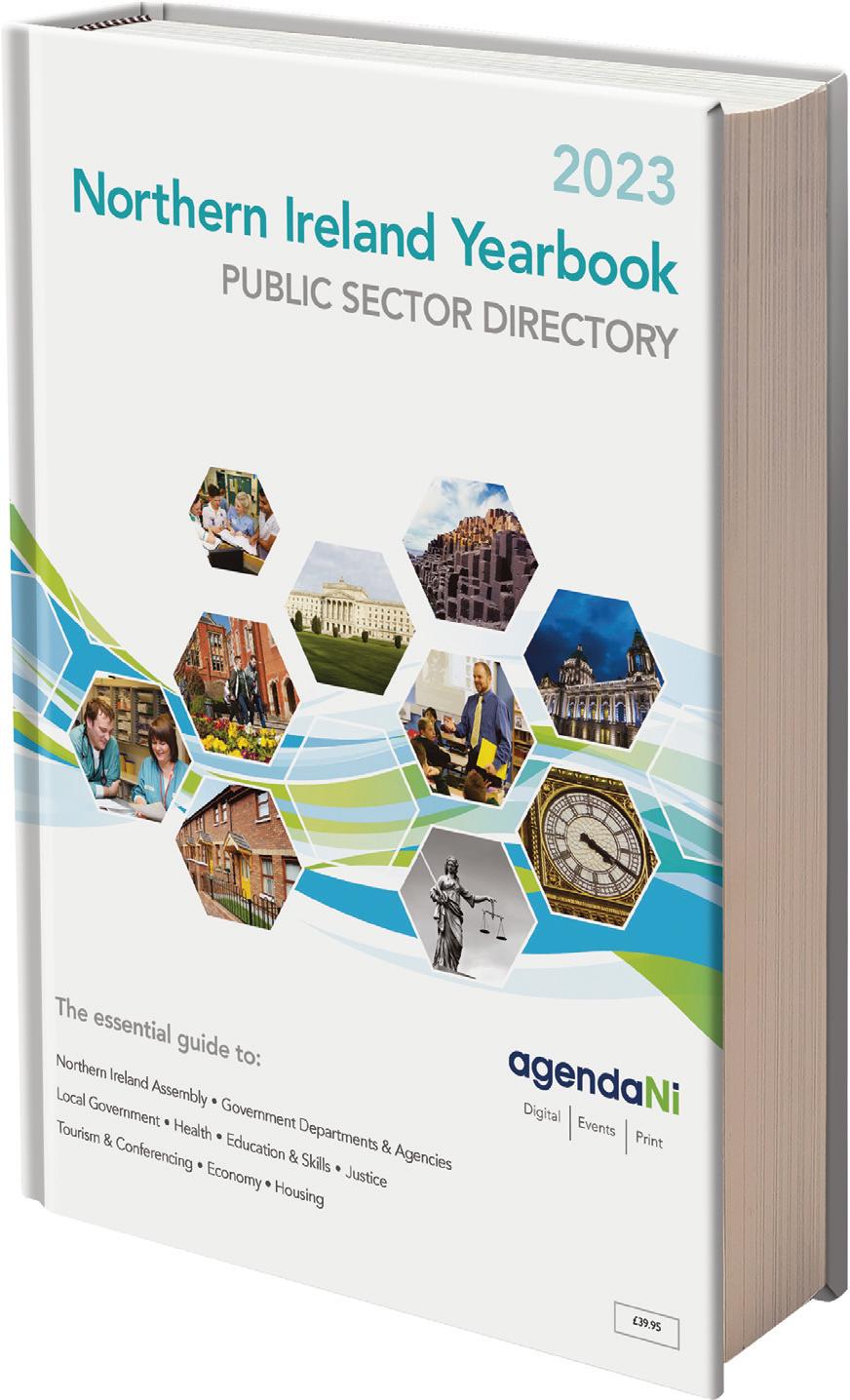
Order your organisation’s copy! www.northernirelandyearbook.com Tel: (028) 9261 9933 Email: info@agendani.com www.northernirelandyearbook.com • Government Departments • local council listings • election results 2022: NI Assembly, Council and Westminster • your local MLA / MP • health and education bodies • housing organisations • charities and NGOs • the Northern Ireland economy • justice agencies • tourism bodies and conferencing The guide to the public sector in Northern Ireland Northern Ireland Yearbook 2023






























































 Government Association (NILGA), Alison Allen, talks to David Whelan about the importance of a sustainable footing for local government, delivering a coherent voice, and the opportunity for economic growth.
Government Association (NILGA), Alison Allen, talks to David Whelan about the importance of a sustainable footing for local government, delivering a coherent voice, and the opportunity for economic growth.



































 Stephen Dallas, The Bytes Project; Joan Condell, Ulster University; Bill McCluggage, Laganview Associates; Clare Costello, Translink; and Andrew Bruce, Expleo.
Ignatius O’Doherty, NICS Enterprise Shared Services opens the conference.
Tanya Otterson and Ian Boylan, Invest NI.
Exhibition area at the 2022 Digital Government Belfast Conference.
Speaker John Glennane from Capventis addressing the 2022 Digital Government delegates.
Stephen Dallas, The Bytes Project; Joan Condell, Ulster University; Bill McCluggage, Laganview Associates; Clare Costello, Translink; and Andrew Bruce, Expleo.
Ignatius O’Doherty, NICS Enterprise Shared Services opens the conference.
Tanya Otterson and Ian Boylan, Invest NI.
Exhibition area at the 2022 Digital Government Belfast Conference.
Speaker John Glennane from Capventis addressing the 2022 Digital Government delegates.






























































 Mulcahy, Director
on
Mulcahy, Director
on









 Speakers: Derek Hynes, NIE Networks; Richard Rodgers, Department for the Economy; Kevin Murphy, TLT; Anouk Honoré, Oxford Institute for Energy Studies (OIES); John French, Utility Regulator and Niall Martindale, firmus energy.
Richard Rodgers, Department for the Economy addressing the 2022 Northern Ireland Energy Forum delegates.
Shane Rafferty, Mutual Energy with Tamasin Fraser, ABO Wind.
Speakers: Steven Agnew, RenewableNI; Catherine Sheridan, EIH2; Andrew Ryan, TLT and Martin Doherty, Centre for Advanced Sustainable Energy (CASE).
Niall McClements and Alicia Trainor from SONI.
Marie Cowan, Geological Survey of Northern Ireland putting a question to the panel.
annual Northern Ireland Energy Forum took place in November 2022. Supported by firmus energy, TLT, NIE Networks and CASE, delegates heard from a number of expert speakers including Richard Rodgers, Department for the Economy; John French, Utility Regulator; Catherine Sheridan, EIH2 & Simon Todd, CausewayGT.
Belfast and made the
Speakers: Derek Hynes, NIE Networks; Richard Rodgers, Department for the Economy; Kevin Murphy, TLT; Anouk Honoré, Oxford Institute for Energy Studies (OIES); John French, Utility Regulator and Niall Martindale, firmus energy.
Richard Rodgers, Department for the Economy addressing the 2022 Northern Ireland Energy Forum delegates.
Shane Rafferty, Mutual Energy with Tamasin Fraser, ABO Wind.
Speakers: Steven Agnew, RenewableNI; Catherine Sheridan, EIH2; Andrew Ryan, TLT and Martin Doherty, Centre for Advanced Sustainable Energy (CASE).
Niall McClements and Alicia Trainor from SONI.
Marie Cowan, Geological Survey of Northern Ireland putting a question to the panel.
annual Northern Ireland Energy Forum took place in November 2022. Supported by firmus energy, TLT, NIE Networks and CASE, delegates heard from a number of expert speakers including Richard Rodgers, Department for the Economy; John French, Utility Regulator; Catherine Sheridan, EIH2 & Simon Todd, CausewayGT.
Belfast and made the
































 Speakers: Jonathan Bell, UTV; Sarah Mason, Women’s Aid Federation Northern Ireland; Christine Murphy, The Open University; Nick Carson, Northern Health and Social Care Trust; and Paul McGarrity, Octave Digital.
Ciara Allen and David McLaughlin, Cedar.
Maeve Colgan, Cancer Focus NI with Ciarán Corr, Simon Community.
Christine Harding, The Open University with Jen Higgins, Abbey Autoline.
Speakers: Aimee Buckley, Belfast Exposed; Órlaith Grehan, St Patrick’s Mental Health Services; and Sharon Doherty, The Consumer Council.
The 2022 Social Media Belfast crowd.
Speakers: Jonathan Bell, UTV; Sarah Mason, Women’s Aid Federation Northern Ireland; Christine Murphy, The Open University; Nick Carson, Northern Health and Social Care Trust; and Paul McGarrity, Octave Digital.
Ciara Allen and David McLaughlin, Cedar.
Maeve Colgan, Cancer Focus NI with Ciarán Corr, Simon Community.
Christine Harding, The Open University with Jen Higgins, Abbey Autoline.
Speakers: Aimee Buckley, Belfast Exposed; Órlaith Grehan, St Patrick’s Mental Health Services; and Sharon Doherty, The Consumer Council.
The 2022 Social Media Belfast crowd.


















































































